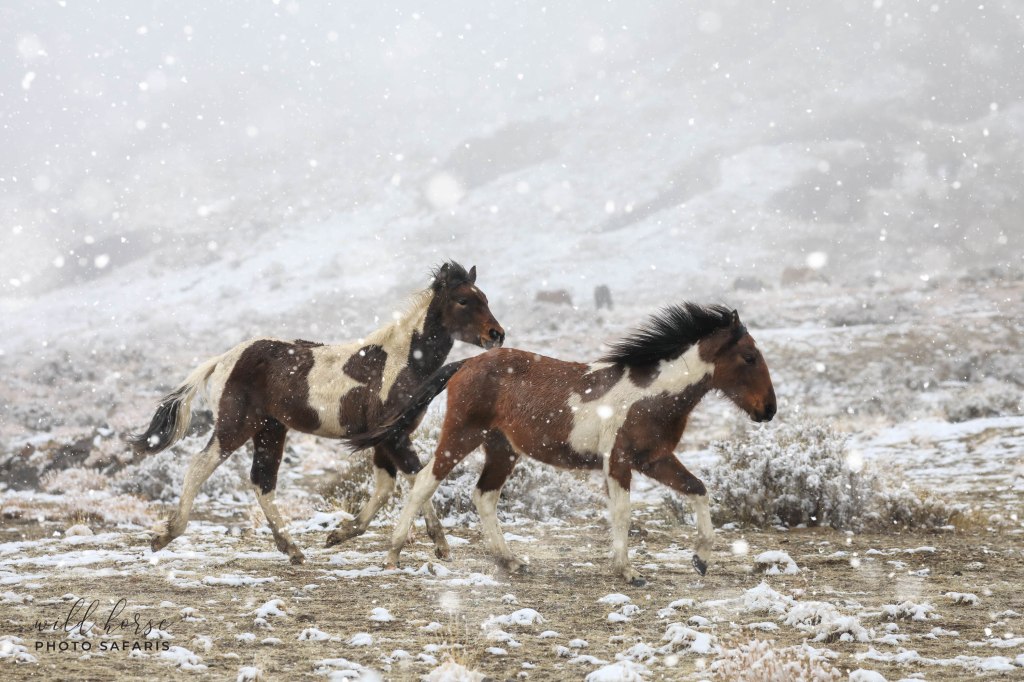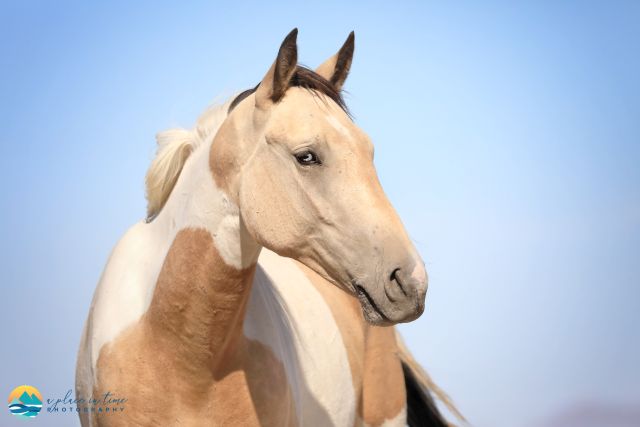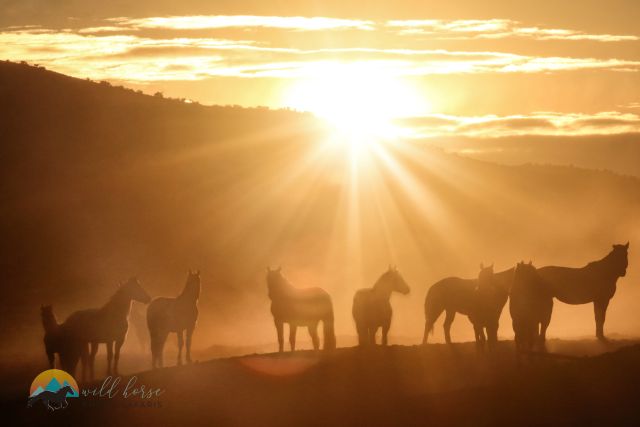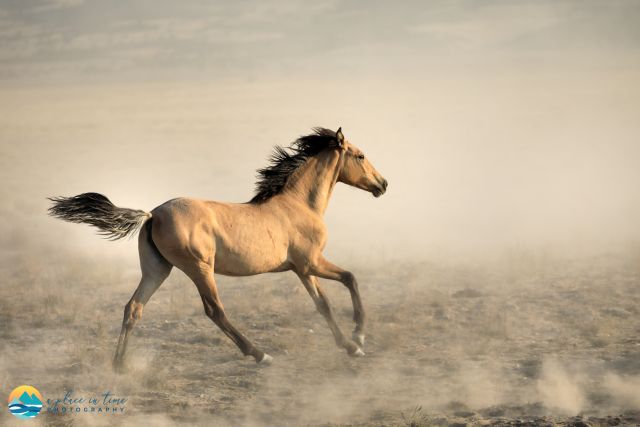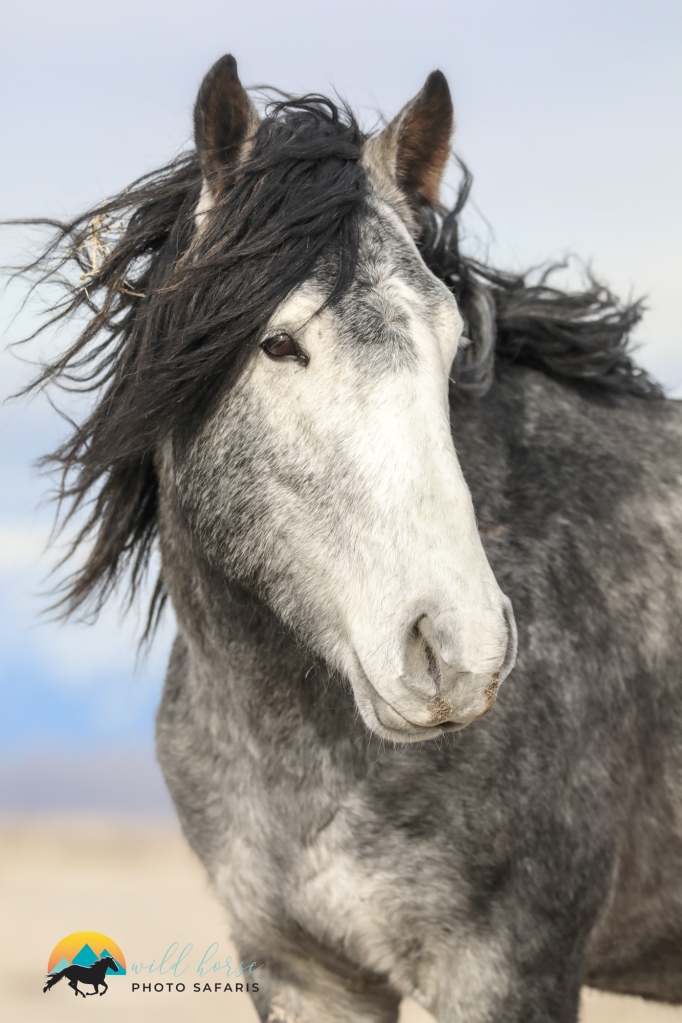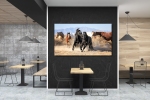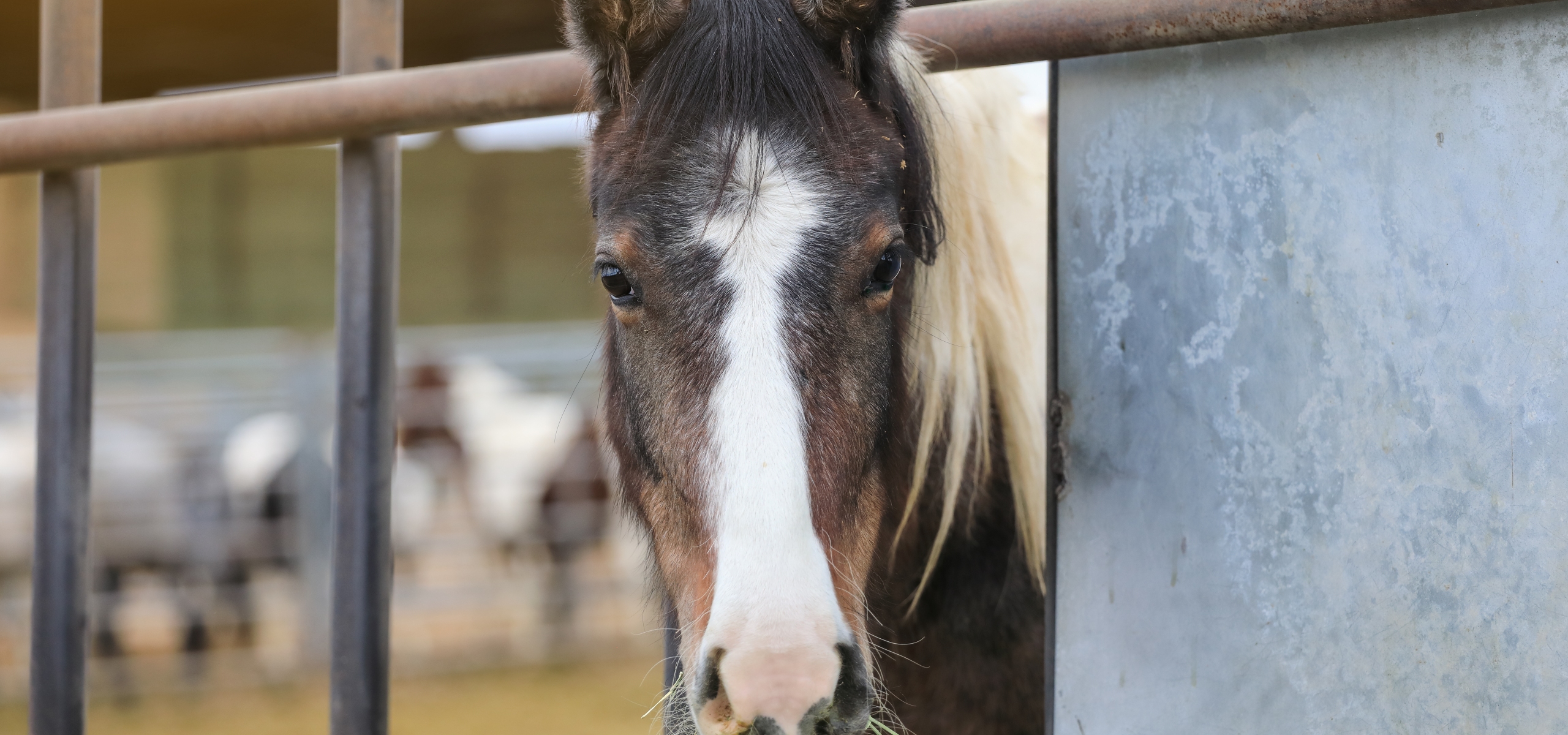
Welcoming Home Cheyenne Grace
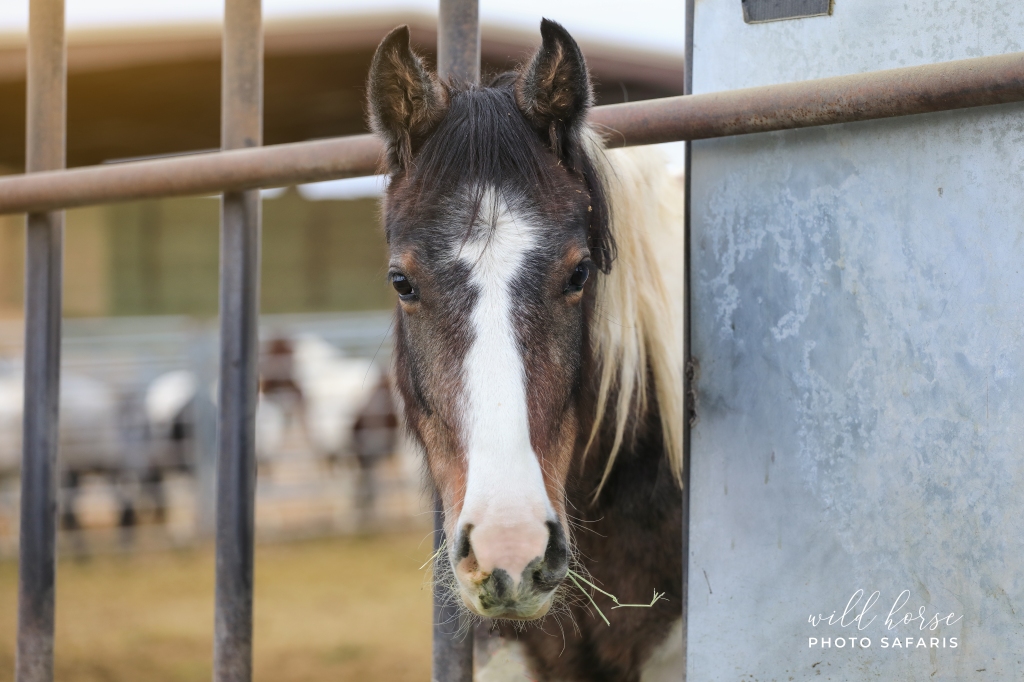
It’s seems like ages since I’ve sat down to write. The reasons behind that will be shared in time, but for now, I’m just enjoying the moment where finally there is some happiness to share after all these months of feeling like you’re digging endless trenches and not ever knowing fully if they’ll lead you in the right direction.
Meet Cheyenne Grace.
Cheyenne Grace is officially the first horse that little Red Bird helped to save. Her new life has begun today, October 20th, 2021. 11 months to the day after I uprooted my life in Maui and moved to Utah after falling in love with the wild ones. Once they work their way into your soul there just really isn’t any turning back.
Fast forward to the Onaqui roundup. Fast forward again to the horses being transported to the short term holding facility in Delta. Fast forward one last time to the doors opening to the public after what seemed like a lifetime. I’ve been going to the facility every week to not only try to ID horses, but to spend time with the lovelies that I intend to adopt and to send short videos and photos to other adopters patiently waiting to bring the Onaqui home to some peace, love and healing.
When the world blew up and the roundup was announced, I had only intended on taking one horse – Red Bird – to keep him safe due to his jaw injury. But how quickly plans changed, morphed, and changed again so that now instead of saving one I took a very deep breath and mentally committed to saving three.
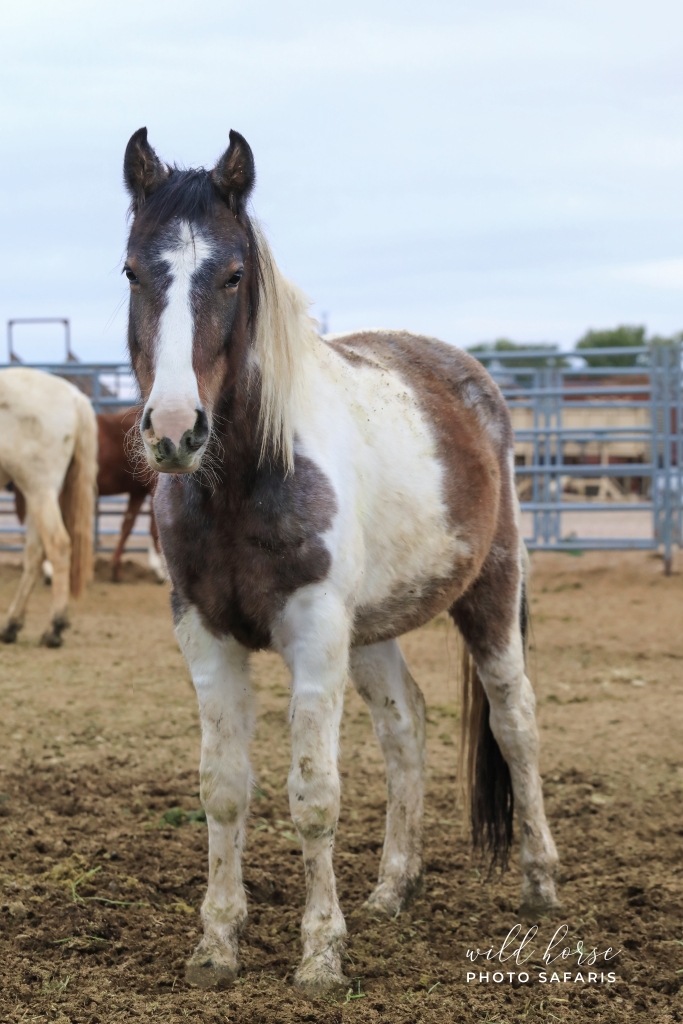
My three were carefully chosen – the first two were a no brainer and I’d literally probably sell my soul for them – and the third was an emotional choice knowing how his life had been turned upside down in the roundup. The start of the online auction is now nearly 2 months away after another delay. An end to a culmination of so many hours of blood, sweat and tears to try to do right by the horses by so many.
The week after I returned from a quick getaway in the Tetons late last month a couple little Swasey mustangs were put out into the general population which had been returned by an owner who said they could no longer pay for hay. There was a pinto gelding and pinto filly returned together – both very cute – both very skinny. The gelding was a flashy black and white and scared out of his wits. The filly was a bay roan pinto and had these calm, gentle eyes that just immediately sucked you in.
Silly me, I took several iphone photos and a little video to put out on social media because it’s no secret that mares are very hard to get adopted, and especially mares who are unknown and in poor body condition. I made her “please adopt me” post and hoped for the best. Until I didn’t. Because it hit me smack square in the face that I needed to be her forever home. She would be the perfect fit that I hadn’t known existed for the boys I’ll be bringing home in a few more weeks.
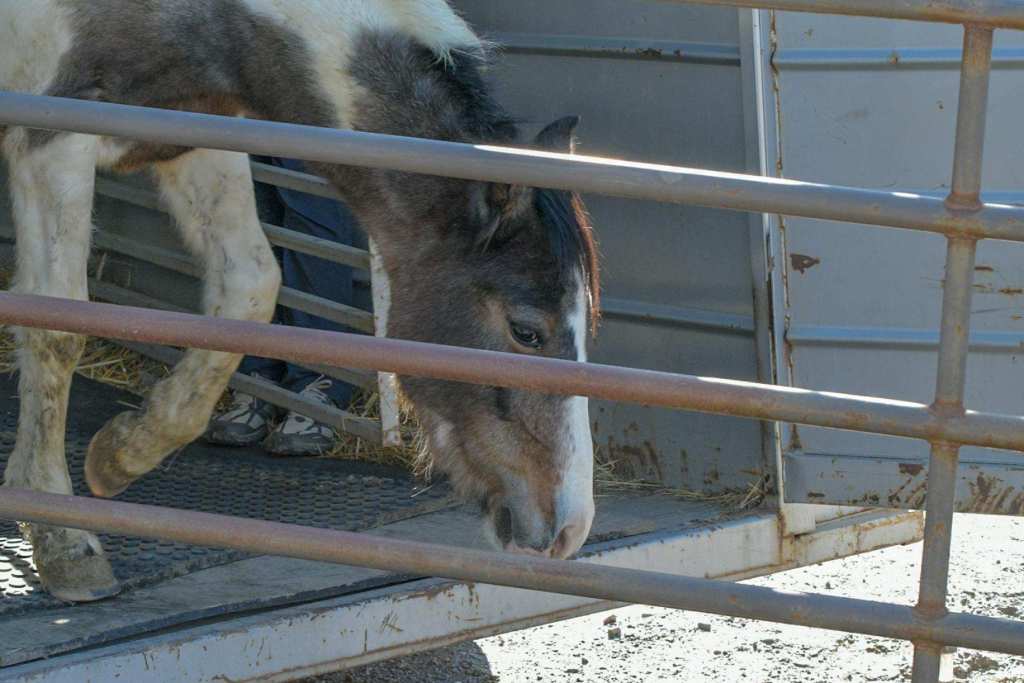
I got up at oh dark thirty and began the trek over to Delta the second it opened on Monday morning to fill out paperwork and make everything final. I spent time outside her pen taking photos and talking to her so atleast she’d have some idea of who I was. There’s just been so many changes for her in such a short life. First a roundup, then to be separated from her family in short-term holding, then to be adopted and not cared for, then returned. It’s a miracle she’s managed to retain her calmness and loveliness through it all.
So right now she’s thin, her mane has been half chewed off, she has her thick winter coat making her look like a shaggy bedraggled little thing but I still think she’s positively beautiful and with time I can’t wait to see her become what she’s just waiting for a chance to grow into and for her to be the new best friend and band member to my boys as soon as they’re able to come home as well.
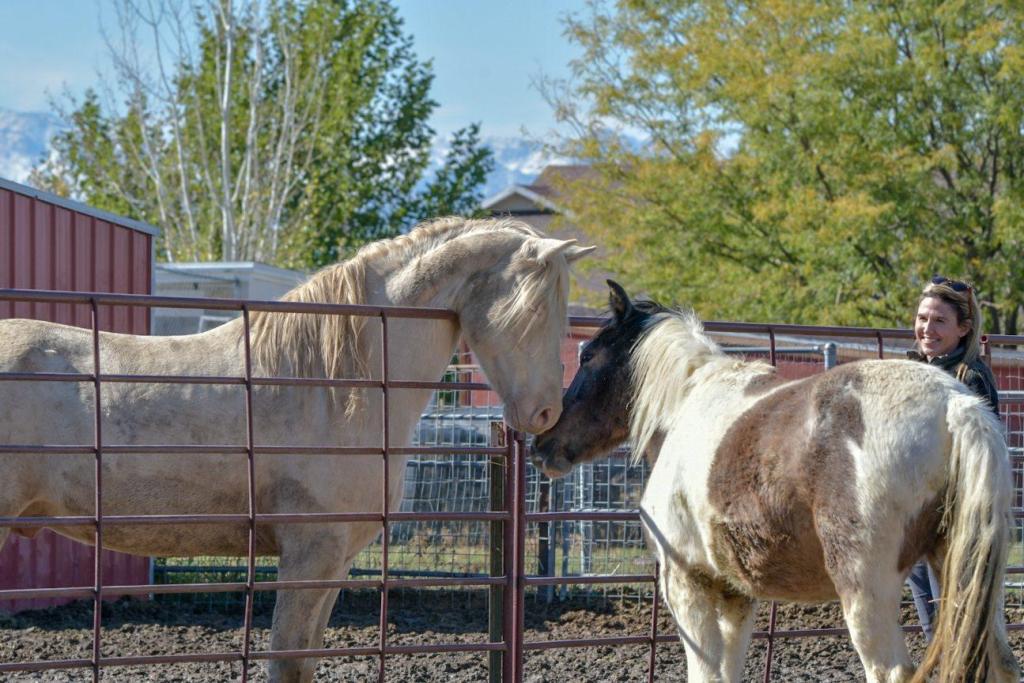
Who would have known after so many years on a little tiny island and being consciously grateful for every day I had there that it would all come to an abrupt end only for me to be shoved by the “universe” into the desert with a herd of wild horses only to then be in a place in life where I can try to offer them a wonderful forever life for both of us.
Truly grateful once again. Somehow life always has a way of working out.
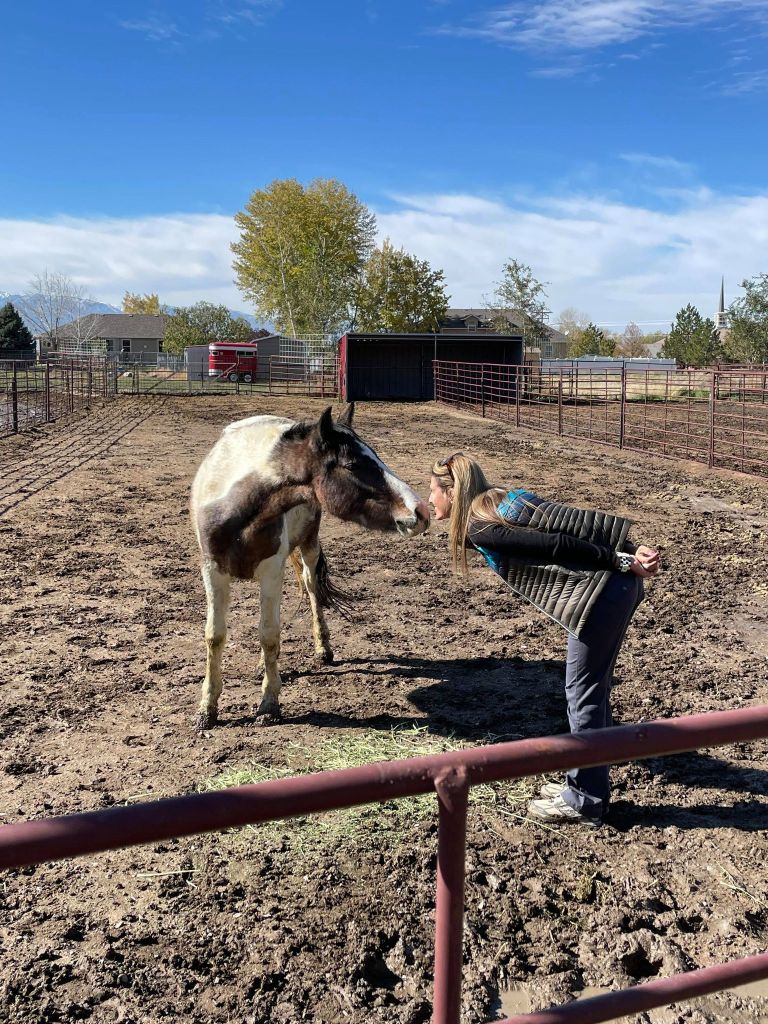
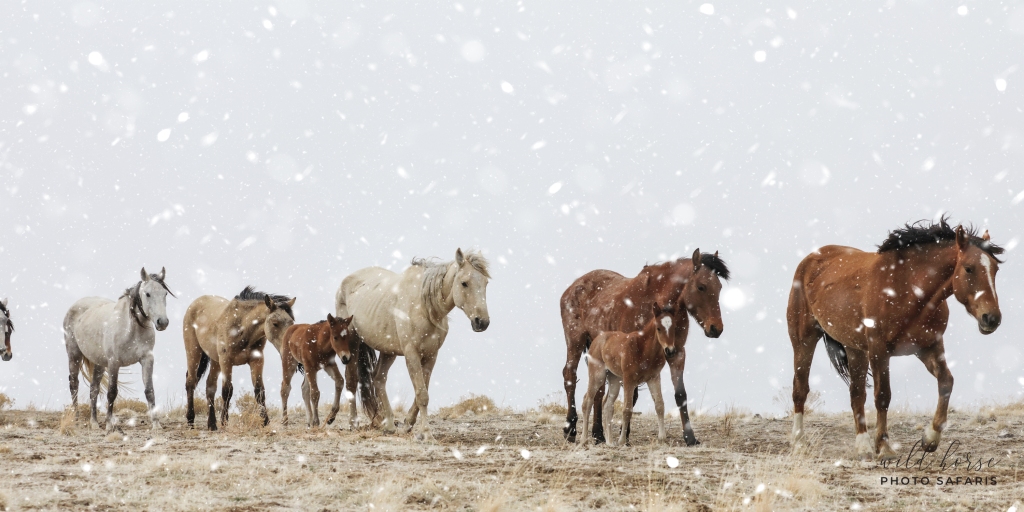
It’s been absolutely astounding to see the level of international support pouring out to try to save America’s iconic wild mustangs. Here in the states, American’s have been trying everything possible to make our pleas heard and ask that this war against wildlife be stopped. Unfortunately our government has failed universally across party lines. Instead of ramping up efforts to preserve the environment and the wildlife which calls it home, it’s being taken away at a mind boggling pace. The war against wild horses has never been so prolific.
Horses have been proven to be in the America’s long before the settlers arrived and are part of our longstanding ecological history. A common argument for removing wild horses from public lands is always that they are simply “feral” animals that need to be controlled and/or eradicated. However paleontological evidence suggests otherwise.
The majority of American’s oppose roundups. That is true more today than ever. But our elected officials turn a blind eye their own people’s pleas.
THE WILD FREE-ROAMING HORSES AND BURROS ACT OF 1971 (PUBLIC LAW 92-195)
§1331. Congressional findings and declaration of policy Congress finds and declares that wild free-roaming horses and burros are living symbols of the historic and pioneer spirit of the West; that they contribute to the diversity of life forms within the Nation and enrich the lives of the American people; and that these horses and burros are fast disappearing from the American scene. It is the policy of Congress that wild free-roaming horses and burros shall be protected from capture, branding, harassment, or death; and to accomplish this they are to be considered in the area where presently found, as an integral part of the natural system of the public lands.
Further the Act goes on to state:
For the purpose of furthering knowledge of wild horse and burro population dynamics and their interrelationship with wildlife, forage and water resources, and assisting him in making his determination as to what constitutes excess animals, the Secretary shall contract for a research study of such animals with such individuals independent of Federal and State government as may be recommended by the National Academy of Sciences for having scientific expertise and special knowledge of wild horse and burro protection….
To read the full act click here
If you’re so inclined, you can read the complete 2013 National Academy of Sciences Review here that systematically details the Bureau of Land Management’s failures to properly manage America’s Wild Horses and Burros and makes detailed recommendations on how to correct each area of mismanagement from a sound, scientific perspective. To date none of the suggestions have been implemented.
The National Academy of Sciences review is particularly important as it is an independent review based on scientific fact based evidence and takes into account each section of the 1971 Wild Horse and Burro Act. It truly is the best tool out there to cite if we want to see a change in this dysfunctional, disorganized and destructive way of “managing” our nation’s treasures.
Now to some ideas of how we can work together with our international friends to draw attention to the decimation of our wild horses and burros before it’s too late. Approximately 60,000 are set for removal of the next 3.5 years. That’s in addition to the 50,000 currently housed in government facilities across the US. Astounding numbers I know.
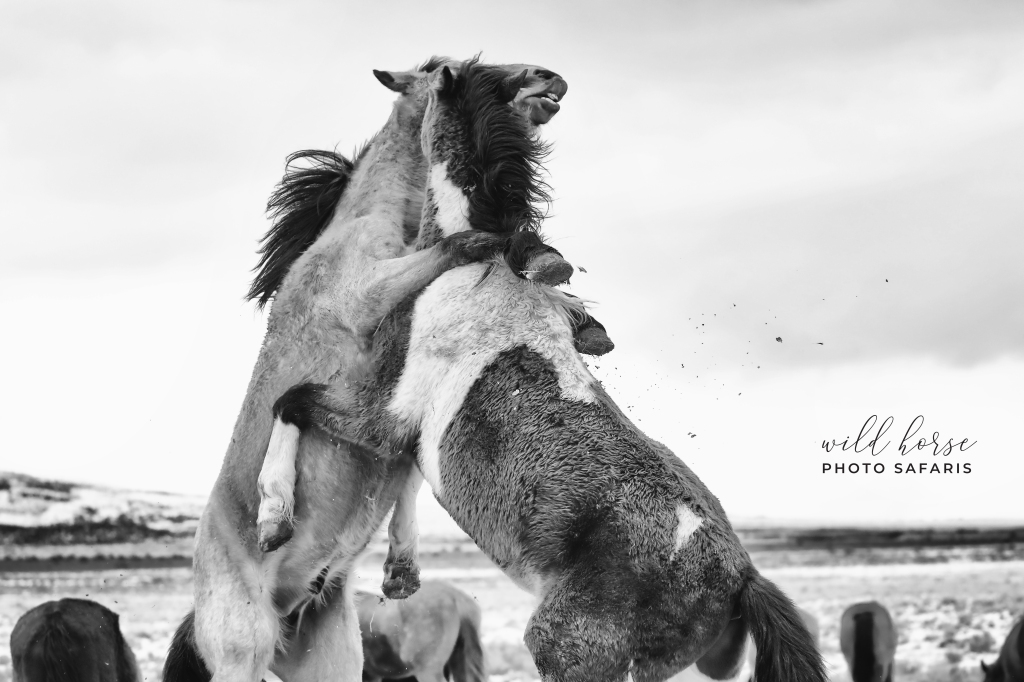
For Americans
The following are a list of representatives in the United States who are friends of our horses (and other wildlife) along with their contact information:
- Cory Booker – Senator – New Jersey (202) 224-3224 Washington DC office
email: press@corybooker.com
2. Steve Cohen – Congressman – Tennessee (Committee of Natural Resources) (901) 544-4131
Mailing Address: The Clifford Davis/Odell Horton Federal Building
167 North Main Street, Ste 369, Memphis TN 38103
3. Bob Menendez – Senator – New Jersey (202) 224-4744
https://www.menendez.senate.gov/contact/email
4. Dina Titus – Congresswoman – Nevada (202) 225-5965
Mailing Address: 495 South Main Street, 3rd Floor, Las Vegas, NV 89101
5. Raul Grijalva – Representative – Arizona (Committee of Natural Resources) (202) 225-2435
6. Brian Fitzpatrick – Congressman – Pennsylvania (202) 225-4276
https://fitzpatrick.house.gov/email
7. Lindsey Graham – Senator – South Carolina (202) 224-5972
https://www.lgraham.senate.gov/public/index.cfm?p=contact-form
8. Dianne Feinstein – Senator – California (202) 224-3841
https://www.feinstein.senate.gov/public/index.cfm/e-mail-me
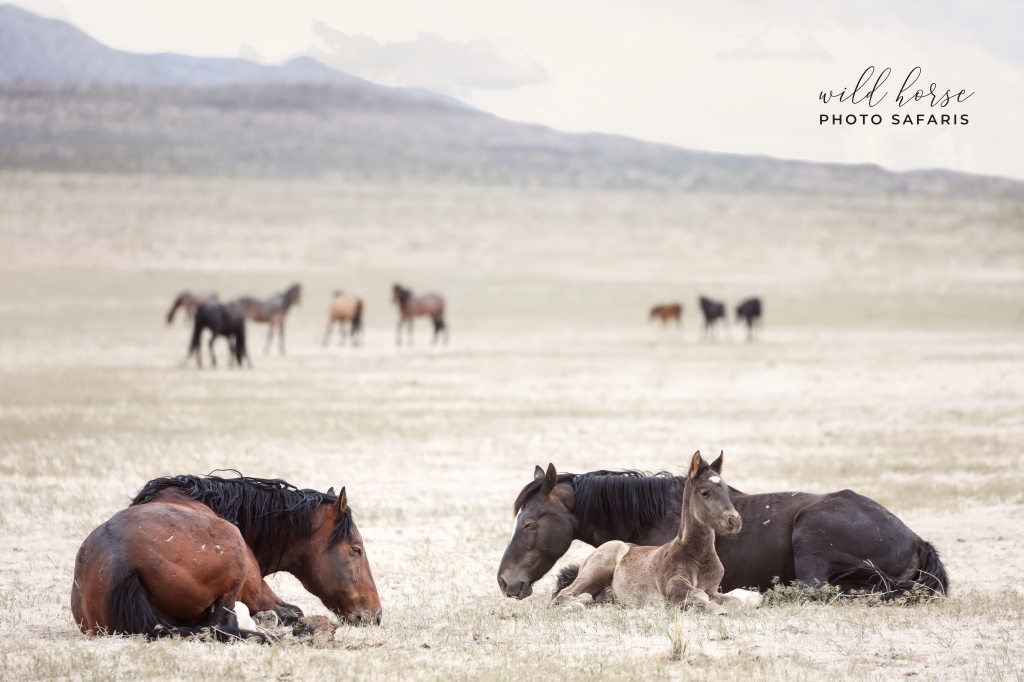
For International Friends
To those of you in other countries, the best suggestion is to contact your Minister of Environment & Prime Minister urging them to contact their American counterparts to reduce or eliminate livestock grazing on America’s public lands in order to protect America’s wild horses and burros in an effort to reduce methane emissions and reduce climate change.
You can expand on the premise in your own words to say that other countries look to the US to be a world leader in many facets – including animal welfare and environmental protection.
You can reach out to international media outlets and request coverage for this very important issue.
Remind them of the facts and the atrocities being committed against these wild horses. Helicopter roundups where helicopters actually strike horses with their landing gear, they force horses to run into barbed wire fences, they cause spontaneous miscarriage of foals, injuries and illnesses and America’s protected wild horses are being sent to slaughter in Mexico and Canada as we speak.
There are several videos and records of these events to be found on Wild Horse Education website.
You can also send the same message to the American Embassy in your country and ask to get a message to the Ambassador. Be sure to say that you expect a response and ask what the embassy is going to do with your comments.
This is an opportunity for the US to step up and prove that they are still committed to bettering the environment and protecting our national heritage. The US has the perfect opportunity to show that with a change of leadership we are renewing our commitment to be a leader in climate change and protecting the well-being of its citizens, its environment and its heritage.
To that point:
If America wants to be an environmental leader it needs to look at the facts:
- The UN has reported that methane emissions must be cut to avert global temperature rise and the acceleration of climate change
- Reducing methane emissions could provide one quick way to fight against climate change
- Livestock are a major contributor to methane emissions worldwide – estimated at 32% of the methane emissions
- Cows produce 5 times more methane than domestic horses (horses produce 45.5 pounds/year vs cows producing 220 pounds/year)
- The American government to allow cows and sheep to graze on hundreds of millions of acres of public lands
- Millions of international followers visit the US and spend their tourist dollars on these iconic wild horses. They also follow their health, wellbeing and plight on social media America’s iconic Wild Horses & Burros. They are America’s living history and must be protected before it’s too late.
- Currently they are being removed at accelerated levels. The stated goal is to remove 20,000 per year for the next 3.5 year. These are the highest removal numbers in decades.
- This is being done while allowing intensive grazing by commercial livestock to continue in Wild Horse & Burro habitat. Intensive grazing, also known as “seasonal” grazing, puts thousands of head of livestock on public lands where the Bureau of Land Management claims there isn’t even enough forage to sustain less than 20% that amount of horses.
- The western US is facing a mega-drought for the last 10 years and livestock production uses enormous amounts of water which is yet another reason to reduce or eliminate livestock from public lands. Livestock is free to graze on private lands rather than decimate lands belonging to the American public.
- The Dept. of the Interior BLM regulation 43 CFR 4710.5 “allows the agency to temporarily or permanently close public lands to livestock grazing, if necessary to provide habitat for wild horses or burros” which should be implemented immediately to preserve our wildlife and our environment.
For other details you can browse through previous blogs I’ve written starting with this one https://wildhorsephotosafaris.wordpress.com/2021/07/24/saving-the-onaqui-pt-8/
I’m not even sure there is a right answer on what to say, who to contact, or how to make our leaders listen and take a stand. All I do know is that if we don’t do something and do it in short order the likelihood of our nation’s treasure being around for our children and grandchildren to enjoy is slim to none. We are watching a mass extermination of species take place before our eyes.
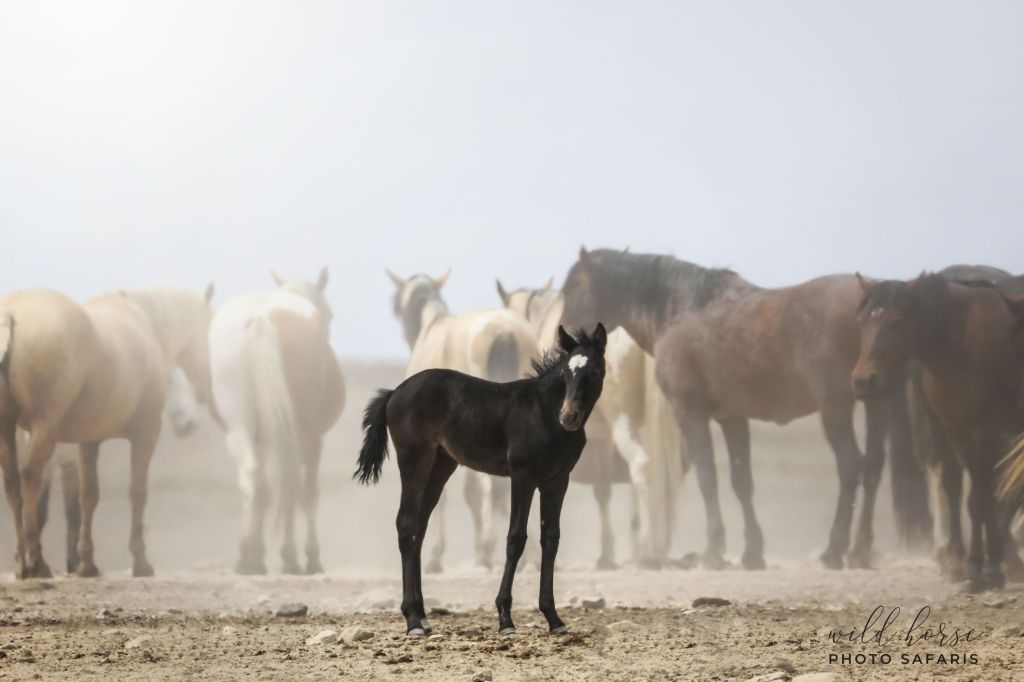
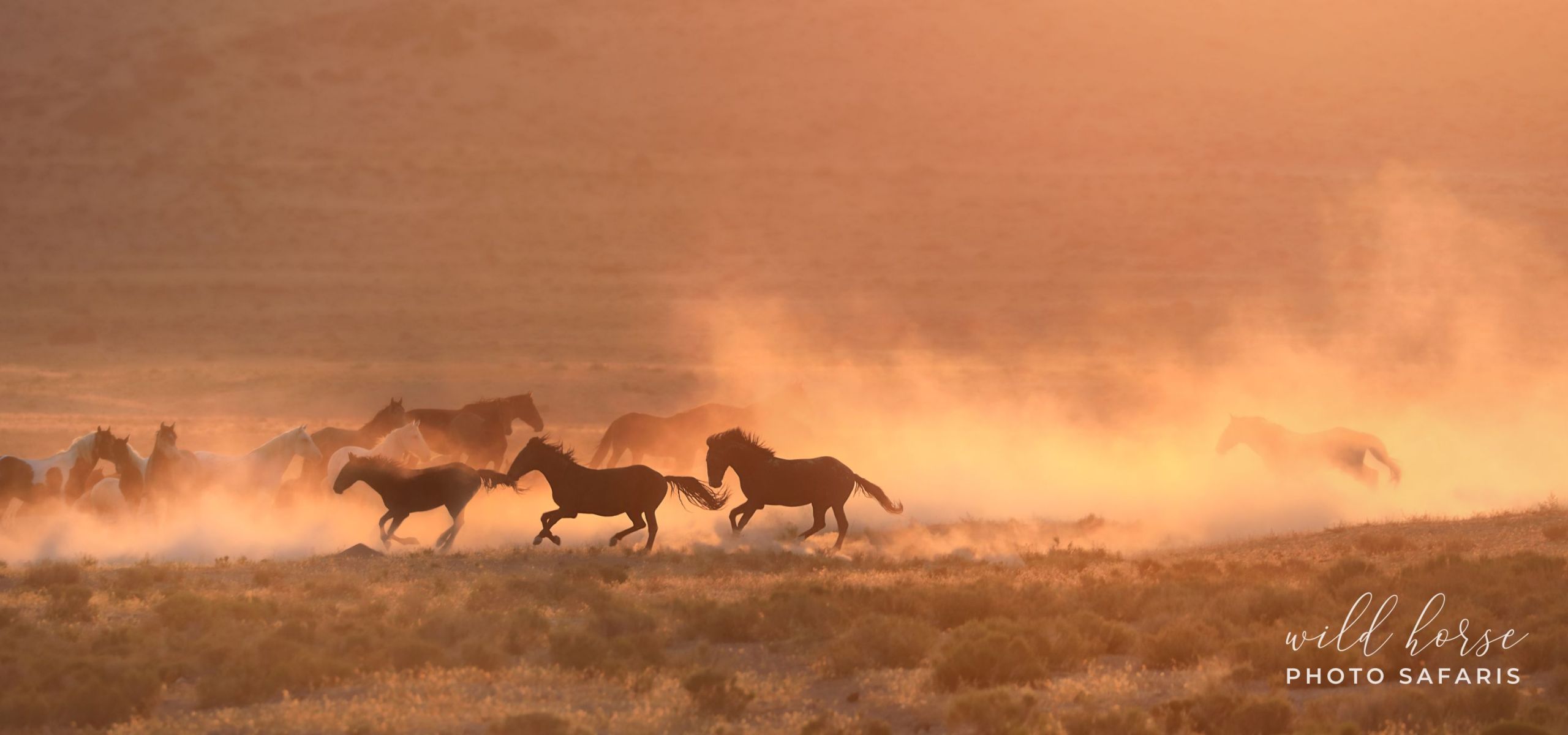

There has been such an outpouring of love, support and passion to help the Onaqui wild horses retain/regain their freedom, their families and their lives in the past few months it is absolutely beautiful to see.
I think it’s important to note before I get started on ways to coordinate and help that there are SO many other wild horse herds in the US that face the same fate. I am so blessed to be able to share stories of our Onaqui and allow people who maybe never met them to get a glimpse into their social bonds and personalities. Just because there isn’t someone doing the same thing at the other less known HMA’s doesn’t mean that those horses are any less special, social or bonded with eachother.
At the very end of this blog I’ve included links to the past 7 blogs which offer not only statistics and facts, but links to back them up, ways to help and people to contact.
Here are some very basic ways that we can all unite together right now and moving forward to hopefully enable change to happen and help our wild horses continue to live wild and free as the national treasures that they are.
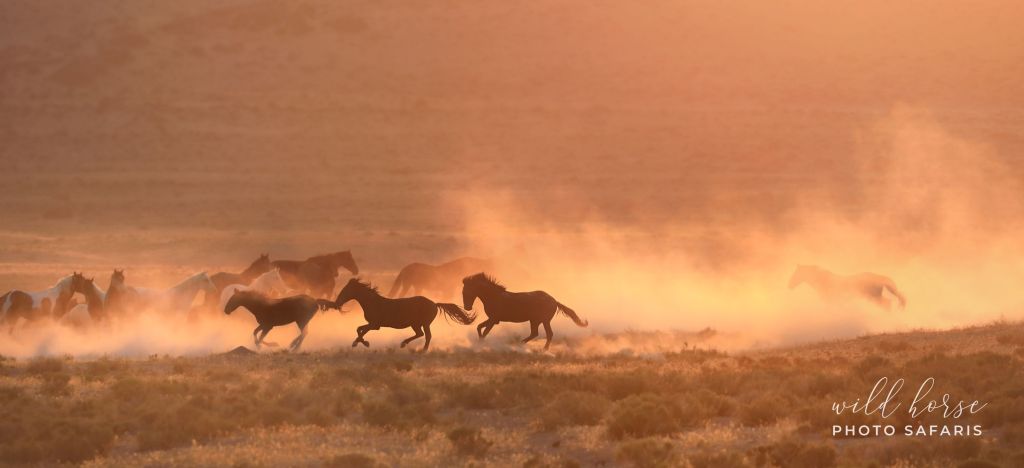
Know the Facts
Probably the most important element of all of this is that we know the facts and are able to speak clearly, concisely, calmly and truthfully before we start reaching out to government officials, NGOs, Sanctuaries, etc. to hear our plea.
Emotions run so high when it comes to saving the lives of those we love, but careening off topic and making threats, rants, unrealistic demands only hurts the cause it doesn’t help it.
(see the link to previous blogs at the end of this article & specific Onaqui HMA info)

Convince Congress and the Senators
Do the research to find out who your states Senator and Congressperson is and make contact. Ask to speak directly to their (1) Legislative Aid
then to their (2) Legislative Director
and finally to (3) the State Representative themselves.
Below are some specific topics to address:
Message #1. The National Academy of Sciences confirmed there is no science supporting the basis (AML) for the BLM’s overpopulation myth.
Background:
– This arbitrary system is called AML = Appropriate Management Level which sets the number of WHB allowed to live on a Herd Area.
– The BLM created a biased system where wild horses are only allowed 20% forage on their own lands while 80% is given to livestock; any horse above the 20% use is considered overpopulation.
– What is happening to our local Onaqui herd is happening to wild horses and burros throughout the West.
– Polls show the vast majority of Americans, Republicans and Democrats, oppose roundups and want their American wild horses and burros managed with humane PZP fertility control on the range.
Message #2. We are calling on Speaker Pelosi, Leader Schumer and President Biden to require the majority of the budget be dedicated to humane, on-range management and stop the roundups.
Background:
– The government plans to round up and add 100,000 wild horses and burros to the more than 50,000 who are already warehoused in government holding facilities.
– The National Academy of Sciences said that roundups are not sustainable … adding more wild horses and burros to government holding facilities doesn’t make any sense; NAS said humane, on-range management is the answer. (NAS Report: https://www.nap.edu/resource/13511/wild-horses-report-brief-final.pdf)
Message #3. This broken system must be replaced with a fair and humane program that America can be proud of! A program that gives wild horses and burros their fair share; keeps them out of government holding facilities and wild and free on our public lands. This is what the majority of Americans want!
Background:
– Wild horses and burros are only allowed to live on 11% of our public lands;
– Even on this small area the BLM only allows them less than 20% of the forage (food) and gives 80% to commercial livestock.
– WHB deserve their FAIR SHARE of our public lands and on-range management with humane birth control should be used to manage population growth while preserving natural, wild behaviors which are so important to these magnificent animals.
– We support win-win solutions that work for ranchers AND wild horses (e.g. voluntary retirement of livestock grazing permits, compensation for non-use of livestock grazing permits, compensation to work with advocates on humane birth control, etc.)
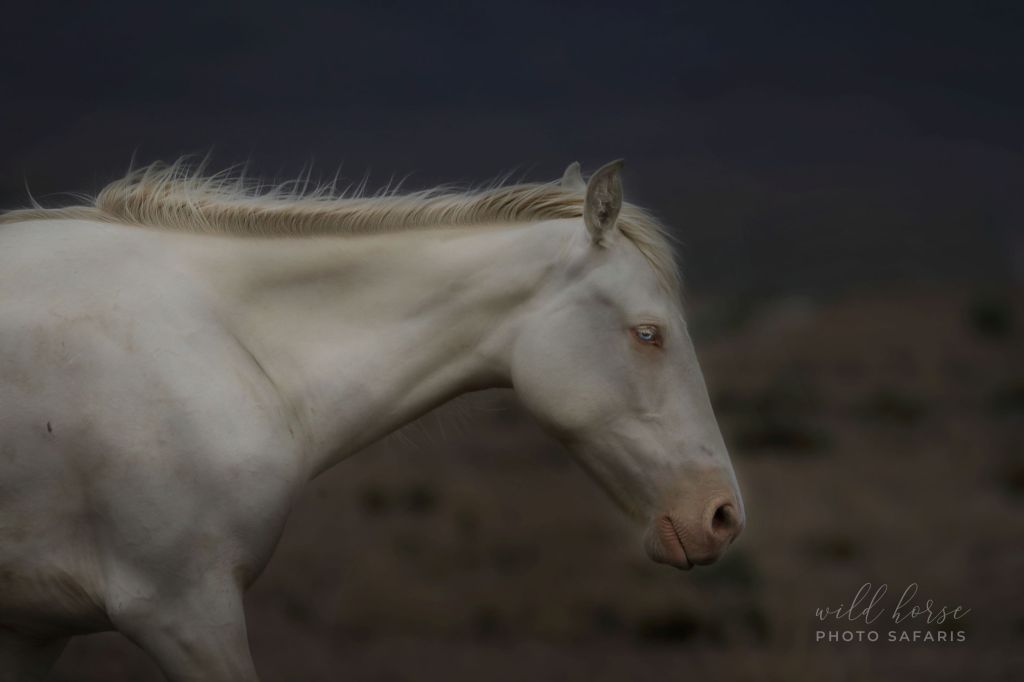
Spread the Word
So many of us are new to this fight. Please don’t think that just because you’re just finding out about roundups you can’t make a difference! Our mustangs and American Heritage needs every last voice that they can get right now and moving forward.
For every person that is sharing the facts and the tragedies and the misspending of our tax dollars to take these horses from their homes on OUR public lands, just think of how many people in turn you can be introducing that have no news of the war that’s currently raging on for our Wild Horses & Burros. Now encourage these people to help to inform others and so on.
Every. Last. Voice. Is. Needed.
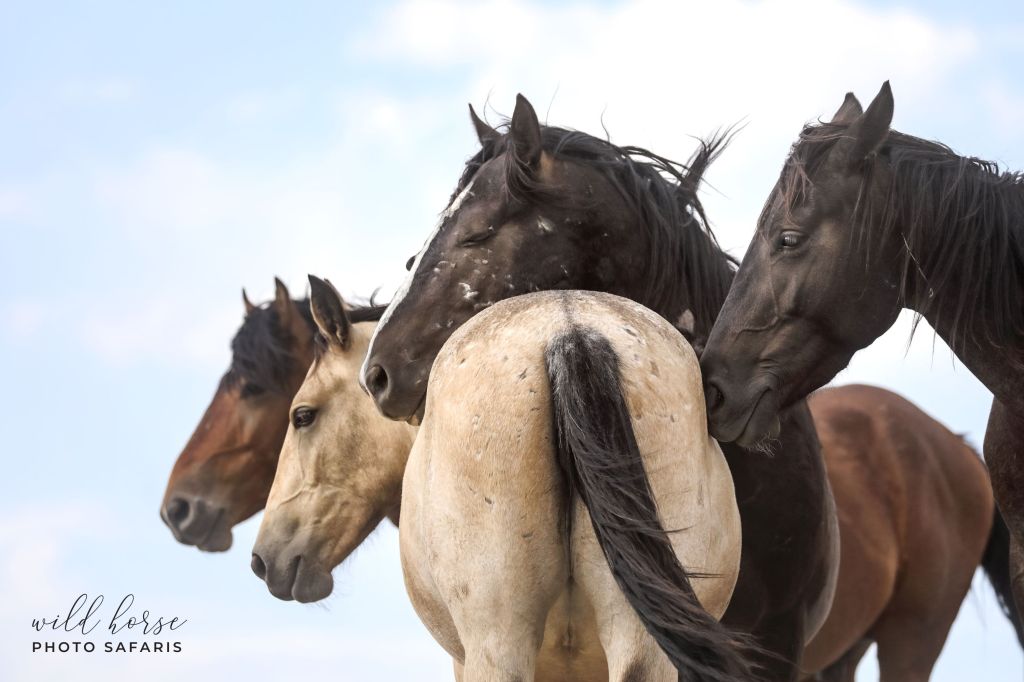
Stay Informed
There are so many ways to stay informed of accurate and up to date information. Below are links to just some of the sources you may want to start following:

Media Outreach
Once you have had an opportunity to gather numbers and facts begin reaching out to both local and national media outlets. And keep reaching out. This issue isn’t going away any time soon so it’s imperative that American’s make their voices heard even to the top tiers of our government offices that we want our tax dollars to go towards 1) Humane On the Range Management 2) Towards protecting this National Treasure as dictated by the 1971 Wild Horse & Burro Act and 3) that they be given their fair share of the forage and water supply on our public lands instead of 80% or more being allocated to livestock grazing. Quote the National Academy of Science report procured by our Government in 2013 – this document is available online at: https://wildhorseeducation.files.wordpress.com/2013/06/13511.pdf and is a wealthy of knowledge and power!

Attend Rallies
It’s so important to at the very least show up in support of our Wild Horses & Burros when there is an organized rally in your area. There’s no need to be yelling or causing a fuss, but there is power in numbers and the more people that show up in support, the more chance there is of news media showing up for coverage and from there the words continues to spread gaining momentum along the way.

Previous links to Blogs Offering Facts, Figures and links on how to Save the Onaqui
Part 1: https://wildhorsephotosafaris.wordpress.com/2021/03/11/saving-the-onaqui/
Part 2: https://wildhorsephotosafaris.wordpress.com/2021/03/20/saving-the-onaqui-pt-2/
Part 3: https://wildhorsephotosafaris.wordpress.com/2021/03/
Part 4: https://wildhorsephotosafaris.wordpress.com/2021/04/22/saving-the-onaqui-pt-4/
Part 5: https://wildhorsephotosafaris.wordpress.com/2021/05/08/saving-the-onaqui-pt-5/Part
Part 6: https://wildhorsephotosafaris.wordpress.com/2021/05/31/saving-the-onaqui-pt-6/
Part 7: https://wildhorsephotosafaris.wordpress.com/2021/06/17/saving-the-onaqui-pt-7/
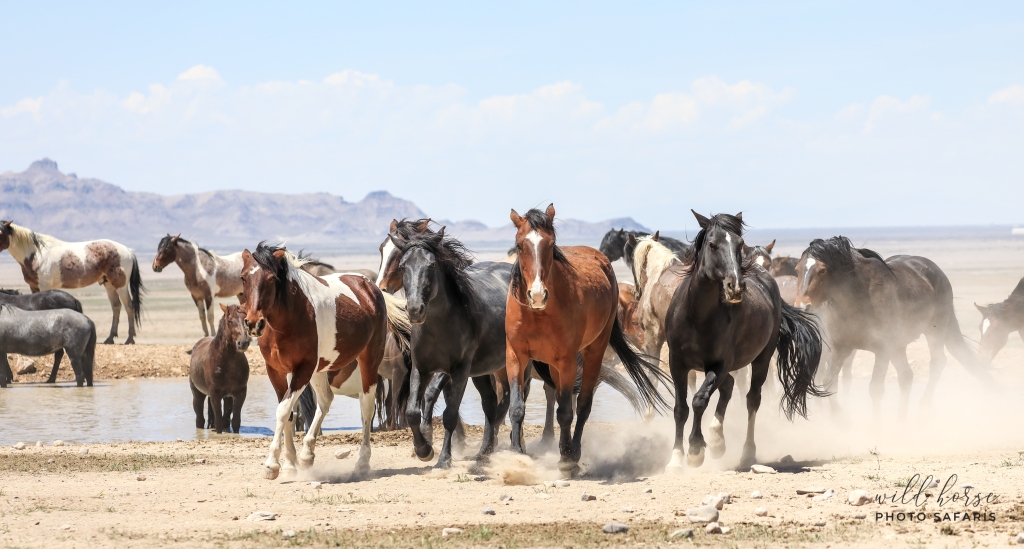
FACT SHEET – ONAQUI – UTAH WILD HORSE ISSUE: AT-A-GLANCE
- BLM-MANAGED PUBLIC LAND USE IN UTAH
Livestock is given 10x more BLM-managed public lands than wild horses/burros in UT.
Livestock is given more than 80-90% of the forage in Onaqui (based on high and low AML for wild horses which is 121 to 210 horses).
Livestock is given 98% of forage allocations on federal public lands; wild horses/burros is given just 2%.
Following are the statistics for UTAH wild horses, burros (WHB) and livestock grazing on Bureau of Land Management-managed public lands:
1,956 WHB allowed on 2.15 million acres (current estimated population 5,746 WHB)
while the equivalent of
108,333 cows* (1.3 million AUMs) are allowed on 22 million acres in the state.[i]
* Cow grazing is used because cows and wild horses are allocated the same amount of forage; there are actually far greater numbers of sheep due to size (5 sheep = 1 cow).
The current estimated population of 5,316 wild horses and 430 burros in Utah comprises just 5% of the permitted livestock grazing on BLM-managed lands in the state.
BLM wants to remove 2/3 of all of Utah’s wild horses/burros.
- 1/3 OF ORIGINAL HABITAT HAS BEEN TAKEN AWAY FROM WILD HORSES & BURROS IN UTAH
Wild horses and burros have been zeroed-out or eliminated from ONE-THIRD of the original BLM-managed public lands in Utah that were designated for their use.
ORIGINAL (1971) CONGRESS-DESIGNATED
PUBLIC LANDS FOR WILD HORSE/BURROIN UTAH: 3,224,891 acres
REMAINING PUBLIC LANDS FOR
WILD HORSE/BURRO IN UTAH: 2,154,458 acres
Private, commercial livestock continues to graze on these zero-out wild horse/burro zeroed-out lands.
The federal grazing fee for 2021 remains the same at $1.35 per animal unit month.[ii]
allows more than any of Utah’s BLM grazing allotments are “common” allotments where more than one permittee is authorized to use the allotment. Grazing on these allotments is authorized through the issuance of 1,462 grazing permits and provide for just over 1.3 million animal unit months (AUMs) of livestock use.
ONAQUI HERD MANAGEMENT AREA GRAZING
Established by an Act of Congress, signed by President Abraham Lincoln in 1863, the NAS is charged with providing independent, objective advice to the nation on matters related to science and technology
10th Circuit Court of Appeals
“While action is mandatory if necessary to acheive a ”thriving natural ecological balance on public lands, the BLM is left with a great deal of discretion in deciding how to achieve that Congressional objective.”
The BLM’s claims of overpopulation are unsubstantiated and based on the unscientific population limits (Appropriate Management Levels – AMLs) imposed by the agency itself. The National Academy of Sciences found “no science-based rationale” for these population limits, and the Tenth Circuit Court of Appeals ruled in 2016 that AMLs are not written into the Wild Free Roaming Horses and Burros Act and the BLM is under no obligation to remove horses just because their populations exceed the agency-created AMLs.
[i] https://www.google.com/url?sa=t&rct=j&q=&esrc=s&source=web&cd=&cad=rja&uact=8&ved=2ahUKEwjQ4Z6e0bjxAhVEpZ4KHdZ3Dj0QFjADegQIAxAD&url=https%3A%2F%2Fwww.blm.gov%2Fprograms%2Fnatural-resources%2Frangeland-and-grazing%2Frangeland-health%2Futah&usg=AOvVaw1D5jrpDgrhLwr8wR1_LmP-
[ii] https://www.google.com/url?sa=t&rct=j&q=&esrc=s&source=web&cd=&cad=rja&uact=8&ved=2ahUKEwiE5_3rz7jxAhXHpZ4KHcwkCtgQFjABegQIBBAD&url=https%3A%2F%2Felkodaily.com%2Fnews%2Fstate-and-regional%2Fgovt-and-politics%2Fgrazing-fees-stay-same-for-2021%2Farticle_051860e4-df2f-5219-8677-a88e500f5e77.html&usg=AOvVaw240a_oYGCKSXtDN3llViEg
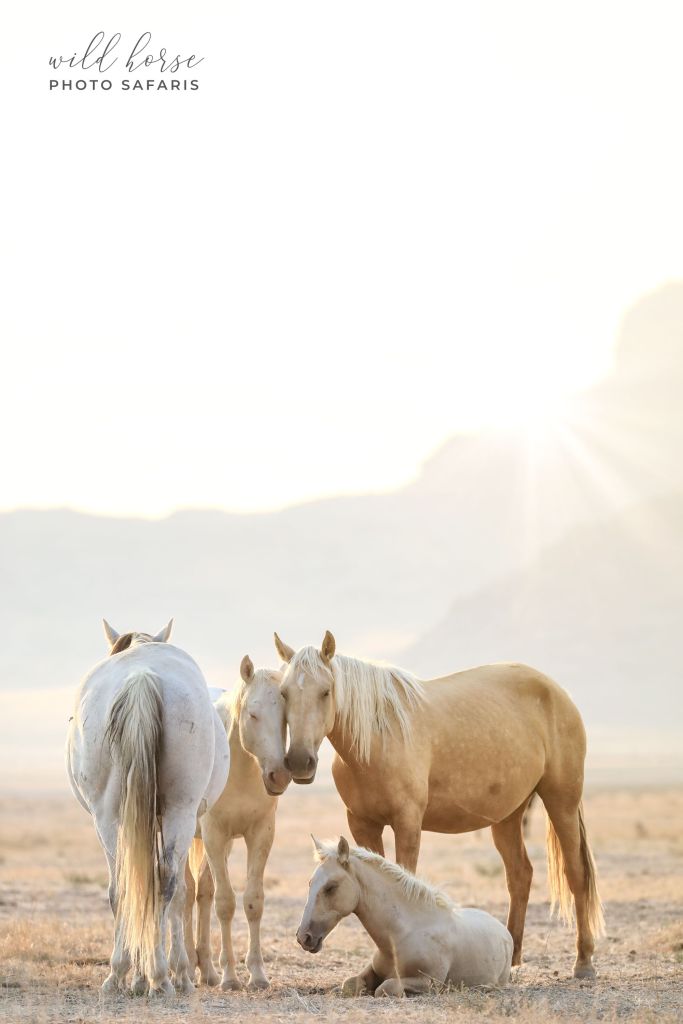

With only 25 days left until the roundup of 400 of our 475 Onaqui Wild Horses the battle to preserve their freedom rages on.
Pleas made far and wide to the Bureau of Land Management, Department of the Interior and even President Biden have fallen on deaf ears. Even more unfathomable, President Biden released his fiscal year proposed budget for 2022 which calls for increases the wild horse and burro management by $35 million dollars. This increase is not targeted to help manage on-range herds humanely with the use of equine contraception such as PZP, but instead is directed towards even more mass removals of the wild horses and burros from public lands. The report goes on to blame wild horses and burros for climate change, yet mentions nothing about decreasing livestock grazing in these same areas. An excerpt is included below:
“The 2022 budget includes a $35.0 million increase in the Wild Horse and Burro Program to support the health and resilience of rangelands. Excess wild horse and burro populations undermine the health of public rangelands and supported species, making them less resilient to stressors from climate-driven changes. These degraded landscapes can also contribute to climate change, as they are more susceptible to wildfire occurrence, which exacerbates excess carbon. To help mitigate that problem, the request supports continued efforts to constrain the growth of animals on the range and to cover rising holding costs. BLM will also continue to emphasize non-lethal population management tools; transfers to other Federal, State, and local entities; and private placements.”
The absurdity of this stance by our new administration was met with shock and heartbreak through the Wild Horse Advocacy community. Using the Onaqui HMA as one example, grazing permits have been granted by the Bureau of Land Management allowing thousands of head of cattle and sheep (15,000 AUM) to consume the forage at the same time it’s being argued there is not enough food or water to support a mere 475 wild horses. 475 wild horses equates only to use of only 15% of the HMA resources as compared to 85% use by sheep and cattle.
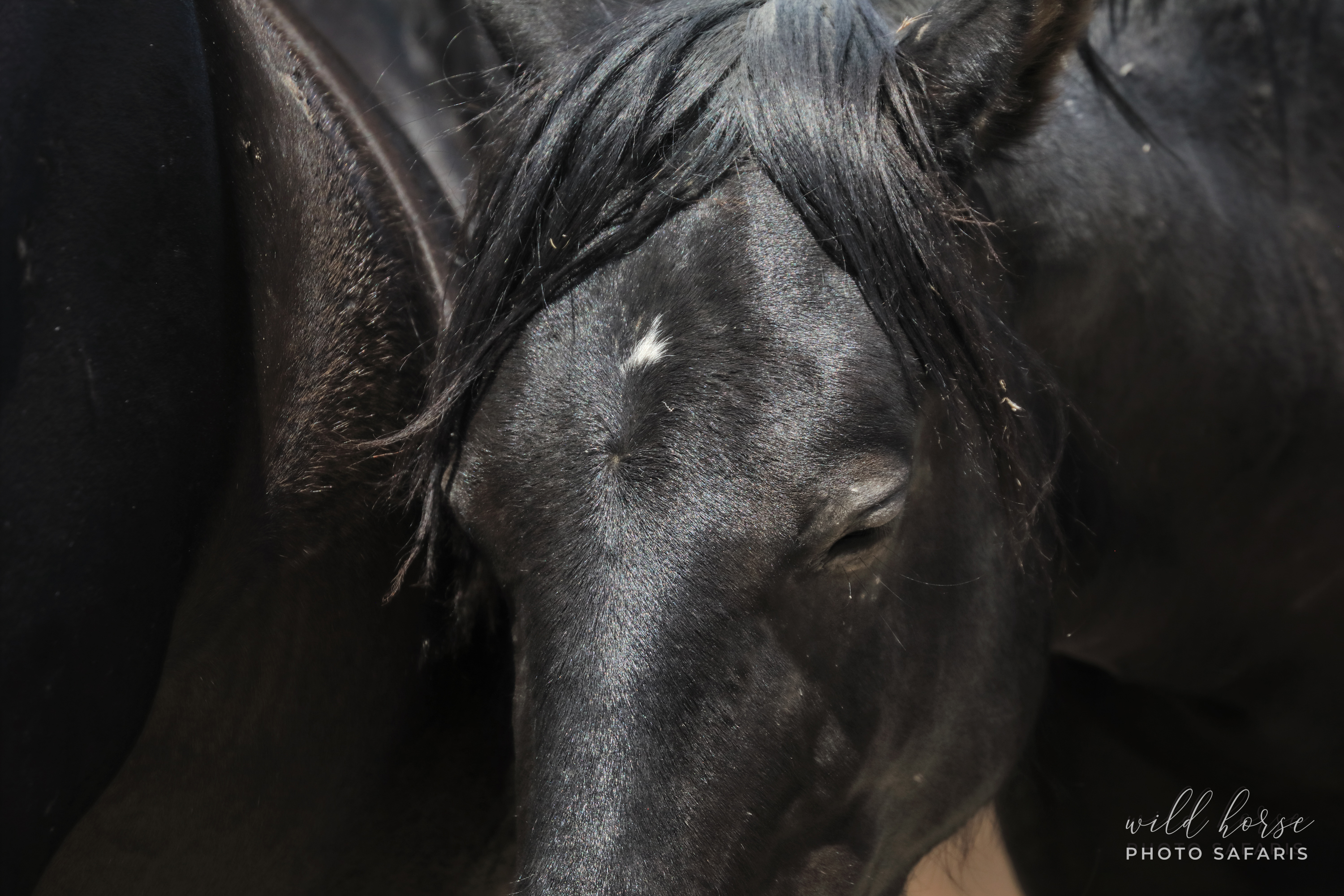
The Wild Horse and Burro Act calls for these public lands to be managed for multiple uses, however the focus should be on creating a fair system that allows for equal rights to land use by all – not the current methods which are completely void of scientific backing and heavily skewed in favor of the livestock industries. The National Academy of Sciences has outlined an extensive plan for the BLM’s Wild Horse and Burro program overhaul in their 2013 Report report, yet 7 years later the changes still have not been implemented.
No one is arguing that ranges across the United States are facing dangerous drought conditions for wild horses among other wildlife. And no one is arguing that an outcome for the horses is sought which will be in their best interests. But do those interests involve spending the rest of their lives in an overcrowded government holding facility or worse?
In 2019 the BLM rounded up 243 Onaqui horses killing 2 in the process. Of those 241 surviving horses approximately 50 were adopted. Fifty. So when Gus Warr, Manager of the Wild Horse and Burro program in Utah, assures people in his public announcements that the Onaqui are very adoptable horses you have to wonder then what happens to all the others if the Onaqui are touted to have such a high rate of adoptability yet only 20% actually had the fortune of finding homes.
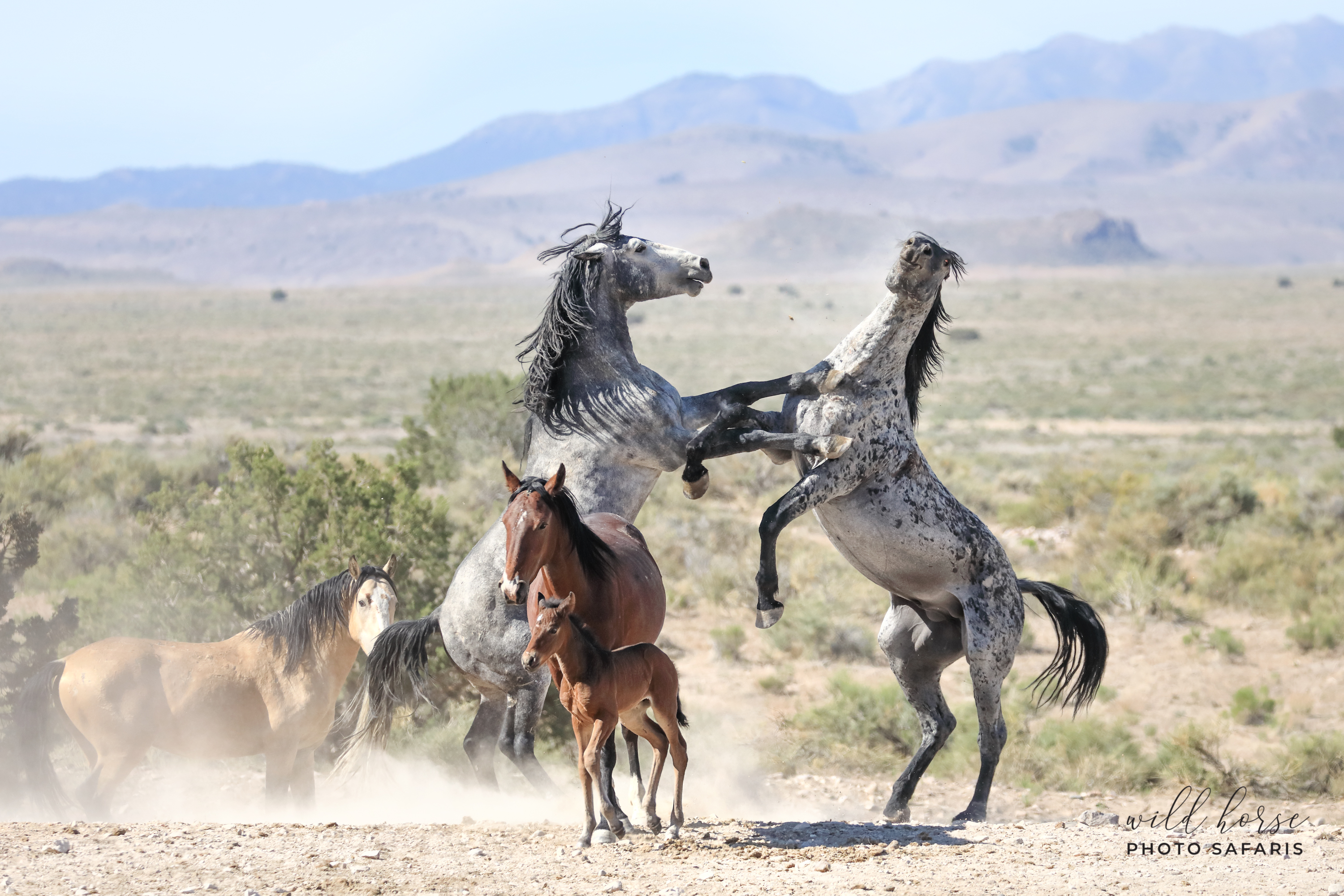
This has been a long standing problem nationwide as well as in Utah. There are much more humane methods of wild horse and burro capture such as bait traps, yet helicopter roundups remain the primary method used despite the trauma to horses, separation of family bands, indiscriminate captures and exorbitant cost to taxpayers. Mr. Warr was quoted in the Salt Lake City Tribune as saying ““In my 20 years with the program I found it the best way to gather the horses. As long as you have a good pilot, they don’t have to be roped or choked down.”
What he doesn’t mention in this article is the broken necks and broken legs he speaks of to attendees at the last Onaqui roundup (Documentary Unbroken Spirit @ 8:46). Not only is was this 2021 roundup scheduled without having a new Environment Assessment or public commentary, but it is scheduled for July where temperatures regularly soar over 100 degrees. Mares are still heavily pregnant and foals are being born as recently as four days ago to the Southern Onaqui herd. Those little foals hooves haven’t even hardened yet, and being run for miles across a hot desert at this young age literally causes them to grind their hooves completely off. I’m guessing the foals would disagree this is “the best way to gather horses.”
Friends of Animals filed a Motion for Preliminary Injunction on June 14, 2021 in the federal courts to stop this scheduled roundup. Their 39 page document cites multiple reasons for their motion including irreparable harm to genetic diversity. “The most recent genetic report for the Onaqui Mountain HMA comes from samples that the geneticist received in 2005 and showed that the “herd has genetic variability that is at a critically low level.” Onaqui25939. The analysis indicated that the loss of variation was fairly recent and likely due to a bottleneck in population size. Id. Despite these alarming reports, there is no indication that the Onaqui population was monitored and there was no follow-up analysis to determine the genetic variation or variability in this population before BLM issued the 2018 Decision. Nonetheless, BLM removed 241 wild horses, nearly half of the estimated population, in 2019.10”
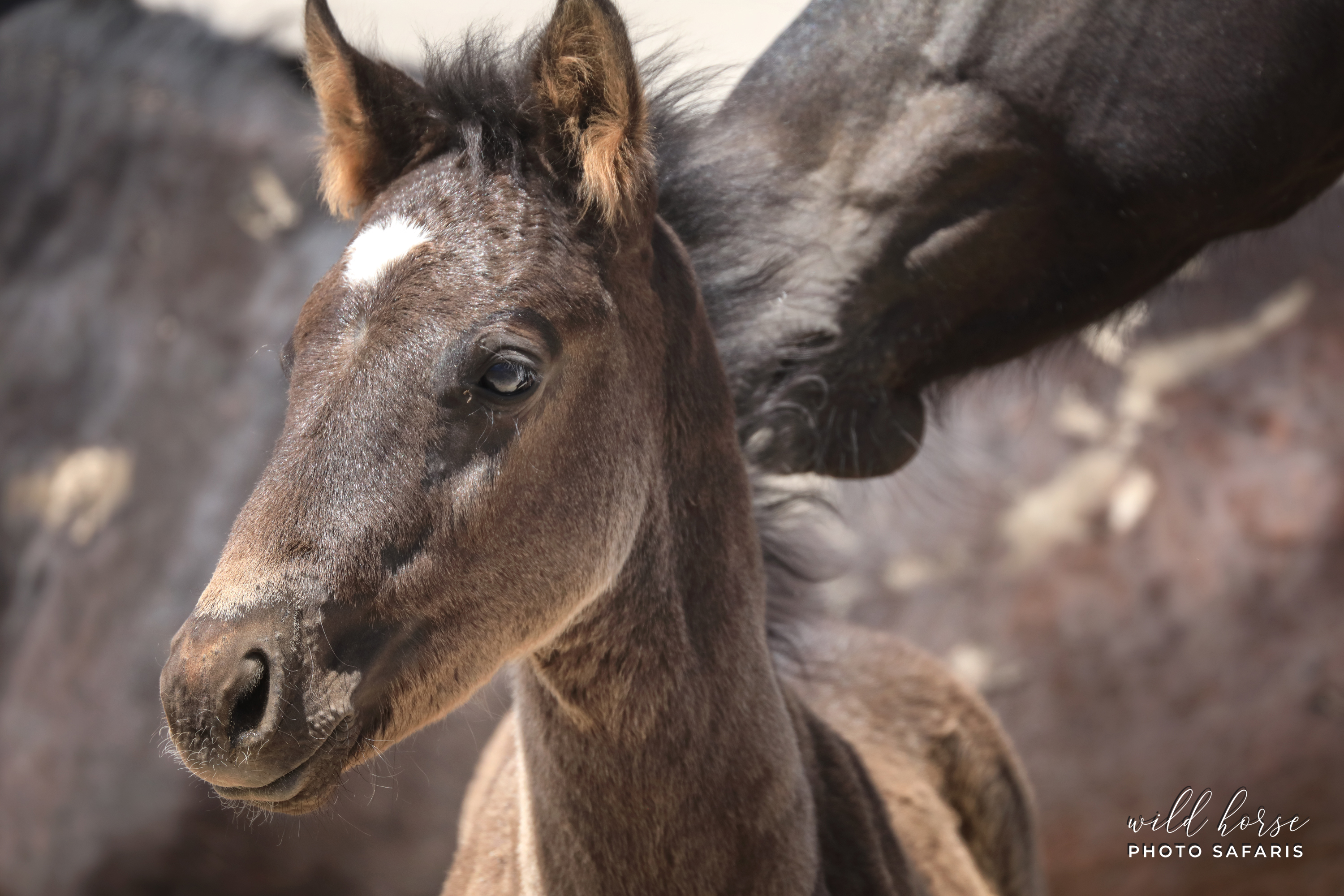
Imagine gathering over 80% of the existing herd only to handpick 52 mares and 52 stallions to return to the range a couple weeks later based on the age of stallions and how easy the mares are to dart with PZP in the field. There have been no plans communicated on what will happen to the 2021 foals – will they be separated from moms and kept in holding pens, will they be returned to the range before being properly weaned, or do they face a worse fate? This massive removal also lacks consideration for the fact that the Onaqui live in two distinct herds – one in the northern section of the range and one in the southern. These herds do not intermix and if genetic viability was already identified as a problem in the past imagine now with one herd likely being eliminated altogether.
On July 2, 2021 a rally to preserve the freedom of the Onaqui Wild horses is scheduled to take place at 8:30am at the south steps of the Salt Lake City State Capital. Actress Kathryn Heigl, Animal Wellness Action, Center for a Humane Economy , The Cloud Foundation, Jason Debus Heigl Foundation and Red Birds Trust have come together to garner awareness to the atrocities unfolding across the west to all wild horses and burros as well as to advocate for the preservation of freedom of our own local Onaqui herd.
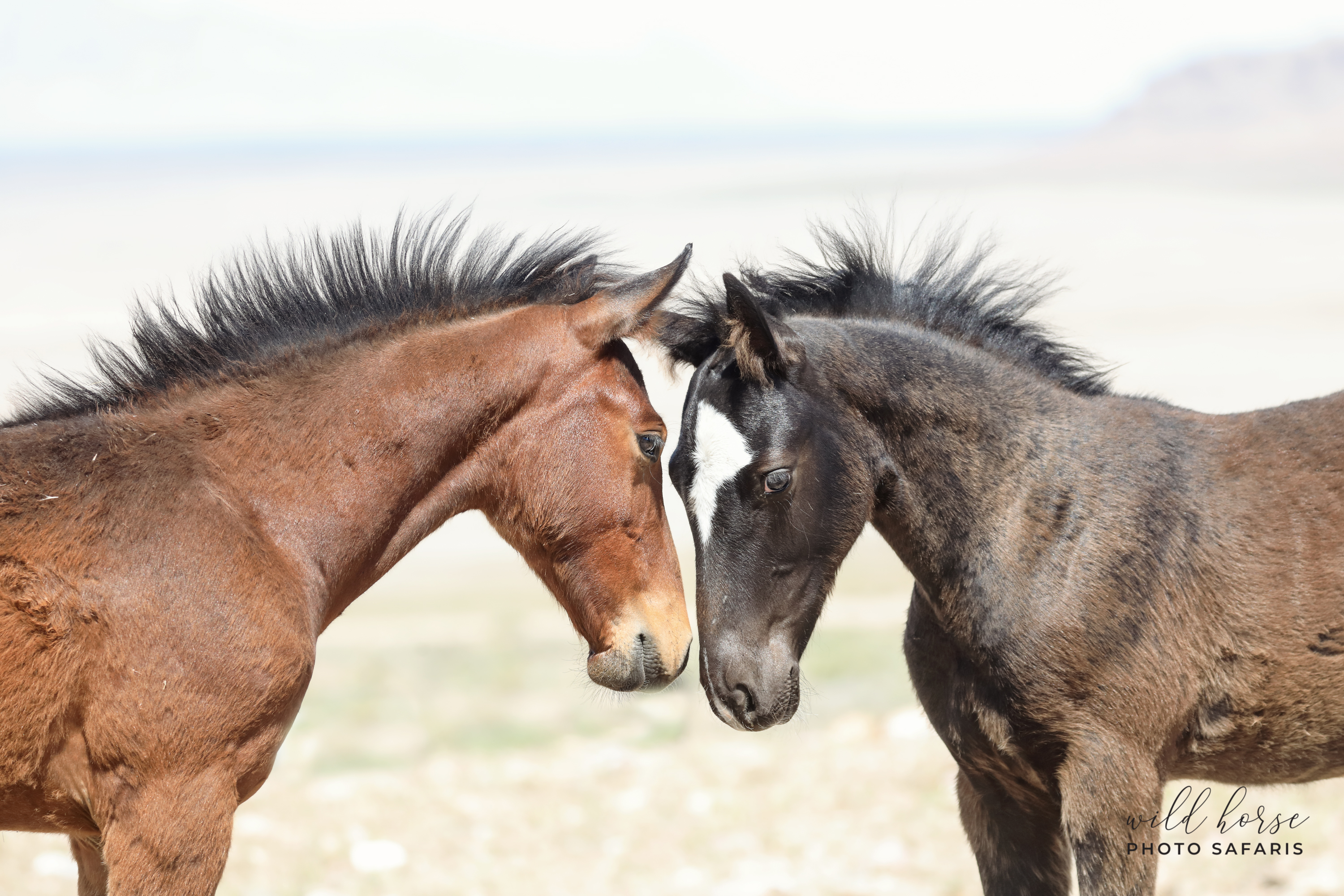
With so few days remaining for our beloved horses to roam free on the range emotions run high, but it’s lovely to see so many advocacy groups, photographers and horse lovers unite. Every day I spend with the wild ones, which is now as many as possible, it helps to hit the reset button on all the human mayhem unfolding and serve as a reminder of why we’re all doing what we’re doing. Although the horses have a very strong voice and beautiful way of communicating not everyone can or will take the time to listen so it’s left up to us, the ones who know them and love them to be their voice.
So please mark your calendars and come join the
Rally for Freedom of the Onaqui
on
Friday, July 2nd at 8:30am at the
Salt Lake City State Capital building.
You can click this link for more information, parking directions and to RSVP.
It’s with high hopes I look forward to an amazing turnout of likeminded passionate people advocating for the protection of our beloved wild horses and burros.
More information can be found from the following sources among others:
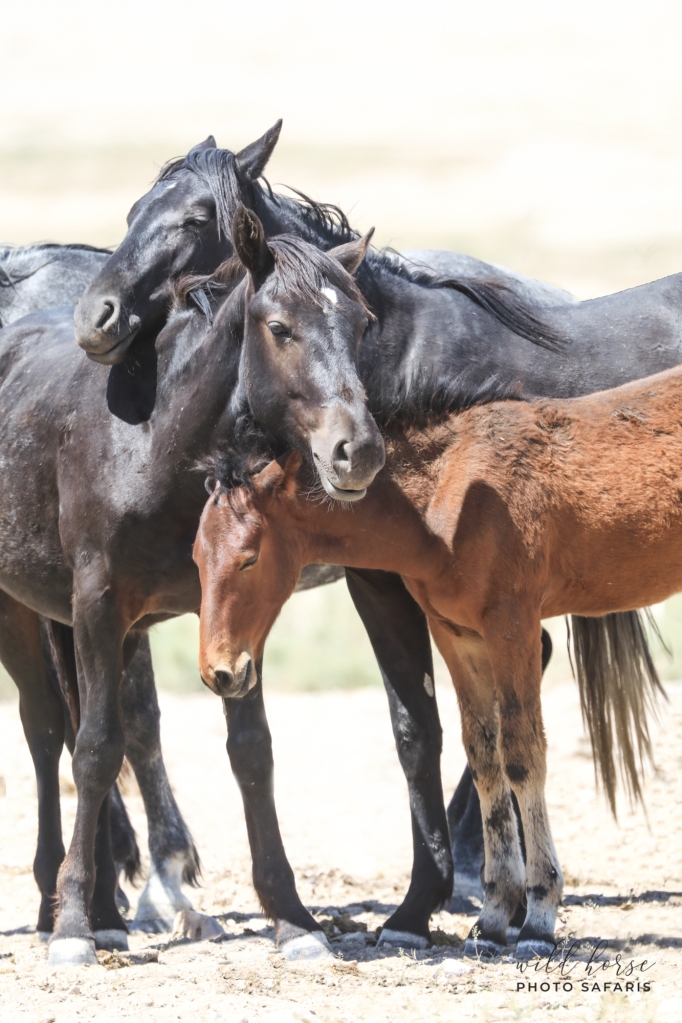
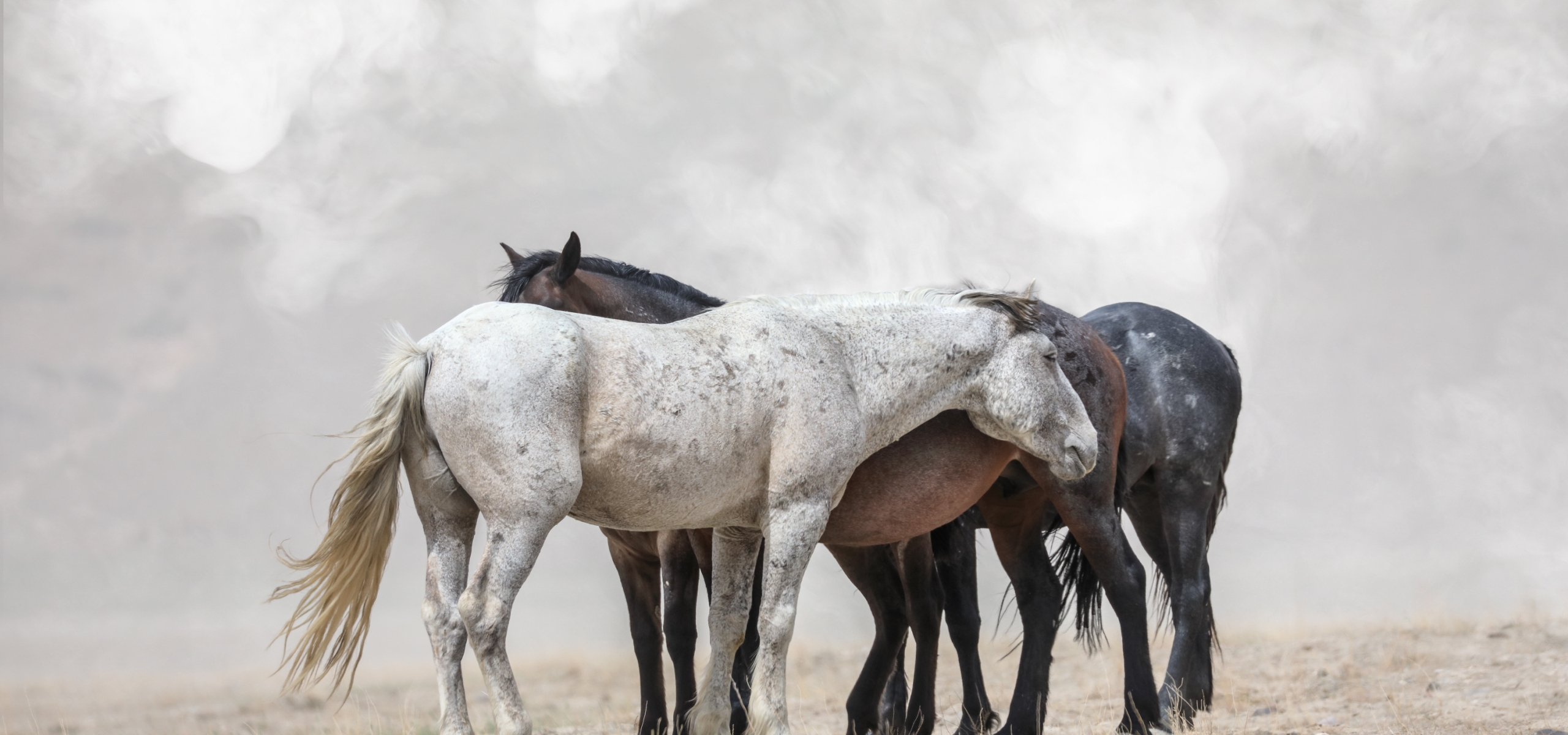
Lost
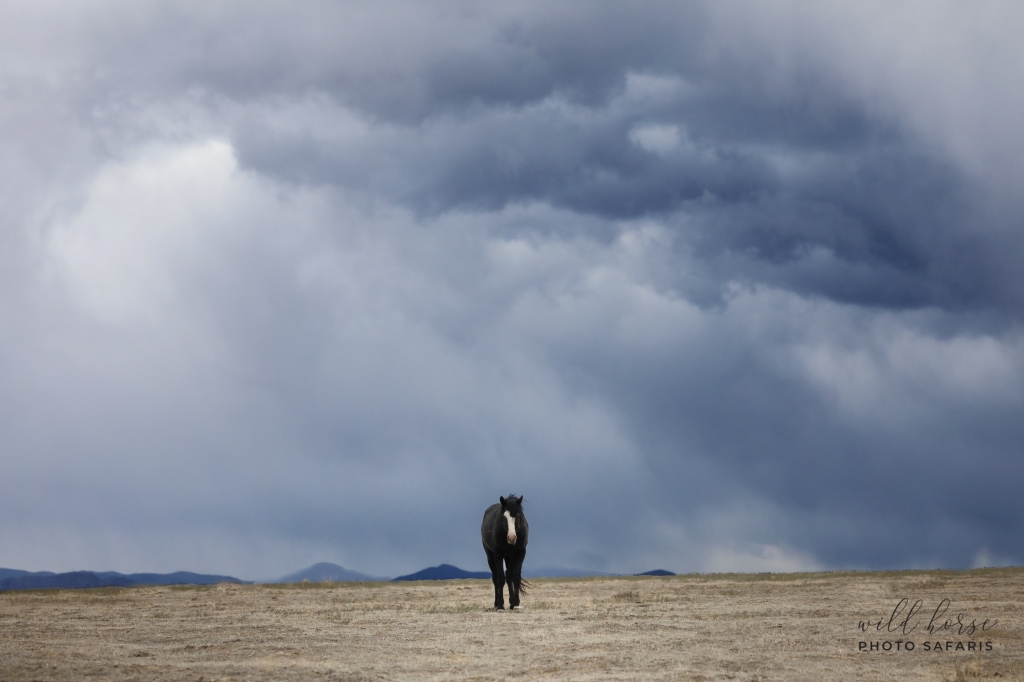
42 days.
1,008 minutes.
The ticking of clock has grown louder by the day since the March 2nd announcement of the removal of 400 of our beloved Onaqui horses by the Utah Bureau of Land Management. Heavy hearts and clouds of hope have hung in the balance as the appointment of Secretary Deb Haaland to the Department of the Interior became a reality.
Leading wild horse advocacy groups, such as American Wild Horse Campaign, sung words of praise and offered reassurances of previous battles won because of Ms. Haaland’s help. However despite thousands of pleas, phone calls, messages and letters sent from wild horse supporters spanning the globe, Mrs. Haaland has remained silent. Instead of helping keep our wild horses in the wild the Biden administration took the stance last week of increasing the proposed 2022 BLM (Bureau of Land Management) overall budget by $311.9 million dollars.
The increase specifically in the Wild Horse and Burro Act is explained as follows: “The 2022 budget includes a $35.0 million increase in the Wild Horse and Burro Program to support the health and resilience of rangelands. Excess wild horse and burro populations undermine the health of public rangelands and supported species, making them less resilient to stressors from climate-driven changes. These degraded landscapes can also contribute to climate change, as they are more susceptible to wildfire occurrence, which exacerbates excess carbon. To help mitigate that problem, the request supports continued efforts to constrain the growth of animals on the range and to cover rising holding costs. BLM will also continue to emphasize non-lethal population management tools; transfers to other Federal, State, and local entities; and private placements”. (https://www.whitehouse.gov/wp-content/uploads/2021/05/budget_fy22.pdf)
The breakdown in millions of dollars is shown below:
| 2020 Actual | 2021 Enacted | 2022 Request | Change (Increase) | |
| Land Resources | ||||
| Rangeland Management | 105,921 | 105,921 | 124,792 | 18,871 |
| Public Domain Forest Management | 10,135 | 10,135 | 14,729 | 4,594 |
| Cultural Resources Management | 18,631 | 19,631 | 21,186 | 1,555 |
| Wild Horse and Burro Management | 101,555 | 115,745 | 152,596 | 36,851 |
| Subtotal Land Management | 236,242 | 251,432 | 313,303 | 61,871 |
Link to view full report: https://www.doi.gov/sites/doi.gov/files/fy2022-bib-bh007.pdf
As the funds allocated to the Wild Horse and Burro program increase, the actual number of animals left on our public lands drastically decreases. Envision a teeter totter which has become grossly imbalanced and the person at the top is unable to escape. That is the current position our wild horses and burros now face.

In Utah alone, according to Wild Horse and Burro manager Gus Warr, there are 5,500 animals housed at our off-range pens in Delta and they expect to add another 1,200 during the 2021 roundups. This will bring the total to 6,700 wild animals spending the remainder of their lives in the confines of federal corrals on land leased from ranchers. Just in Utah. Never mind Wyoming, Nevada, Colorado and beyond.
These off-range facilities aren’t beautiful pastures filled with green grass, butterflies, and fairies as they’re depicted to be. They’re sterile corrals where families are ripped apart and horses are housed by age and gender. Once wild horses are processed in mass, given free brands, vaccines and stallions are gelded. Mothers are separated from their babies because unlike in the wild where they nurse to often 2 years of age, in government facilities 6 months is considered the acceptable age to wean.
The one term that is consistent among anyone who has been to one of these facilities is the term “broken.” For those who only have been around a domestic horse and have not yet had the privilege to see how the wild ones live the stark reality likely appears far less dark. But for those who have been blessed enough to be welcomed into the world of the wild ones the reckless disregard in which their populations is being destroyed nothing short of horrifying.

It’s taken decades for humans to wrap their minds around the levels of complexity found in elephant herds and the intricate role that each member plays in the family. It’s taken so long in fact that elephants are faced with a very real threat of extinction. The bonds found in wild horse bands are no less strong and band members no less meaningful than those of wild elephants. The difference is the majority of the population has yet to figure this out. And considering the massive rate of removal from public lands which poses a real threat to genetic diversity, it’s reasonable to see that America’s wild horse population is at a real risk of pending extinction as well if things don’t change soon.
You know there’s something very wrong when our US government has latched on to a new plan called The Path Forward which was developed in part by the National Cattlemen’s Beef Association, American Farm Bureau Federation and the Utah Governor’s Office among others. It goes without saying that the goal of this plan is mass removal of wild horses and burros from our public lands allegedly to prevent degradation of the land yet thousands of head of cattle and sheep continue to graze without interruption on allotments issued by the BLM.
Since when do you have ranchers and politicians in charge of managing wild animals instead of scientists and biologists? And how in the world can people even read that sentence and think it makes any logical sense.
But it’s the reality we are faced with and unless there is drastic change it will continue.
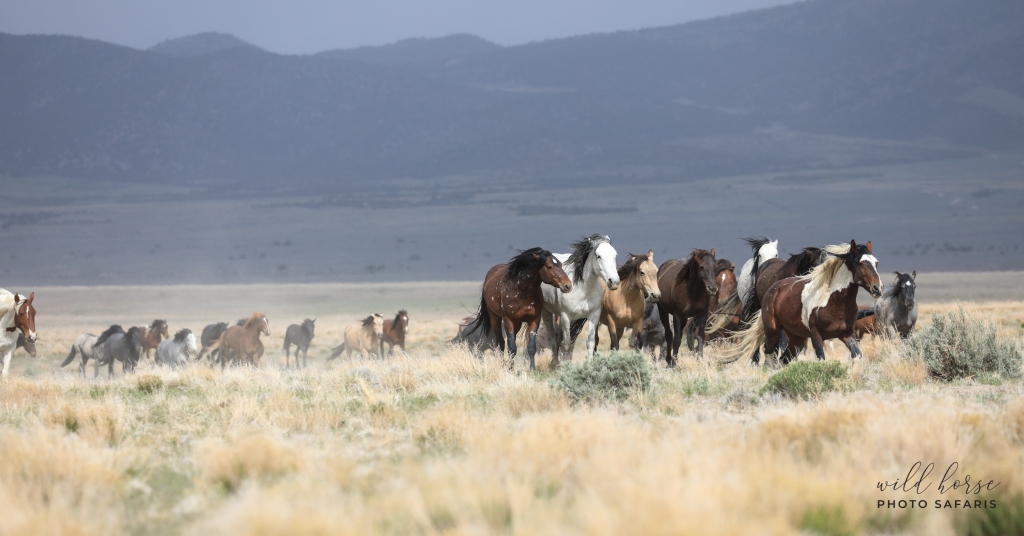
“More than 1,200 Groups, Businesses, and Individuals Call on President Biden to Impose Immediate Moratorium on BLM’s Mass Roundups of Wild Horses and Burros.” This is just one recent headline garnering national attention along with the outpouring of support from actress Katherine Heigl who is a Utah resident and advocate for the Onaqui Wild Horses. Along with her mother, Nancy, a nonprofit was formed in 2008 in her brother’s memory called the Jason Debus Heigl Foundation. It is a wonderful organization dedicated to animal welfare, rescue, affordable medical care and advocates against all animal abuse.
Animal Wellness Action and the Center for a Humane Economy have been working tirelessly to intervene in the 2021 scheduled roundups, include those of the Onaqui horses here in Utah. I was fortunate to be able to work with Director of Campaigns Scott Beckstead along with Katherine to see that billboards were put up along the interstate between the Salt Lake City and Park City to raise awareness for protection of Utah’s heritage and wild horse herds and a website was launched to provide information and accept donations as well. You can visit it here: SaveTheOnaqui.org
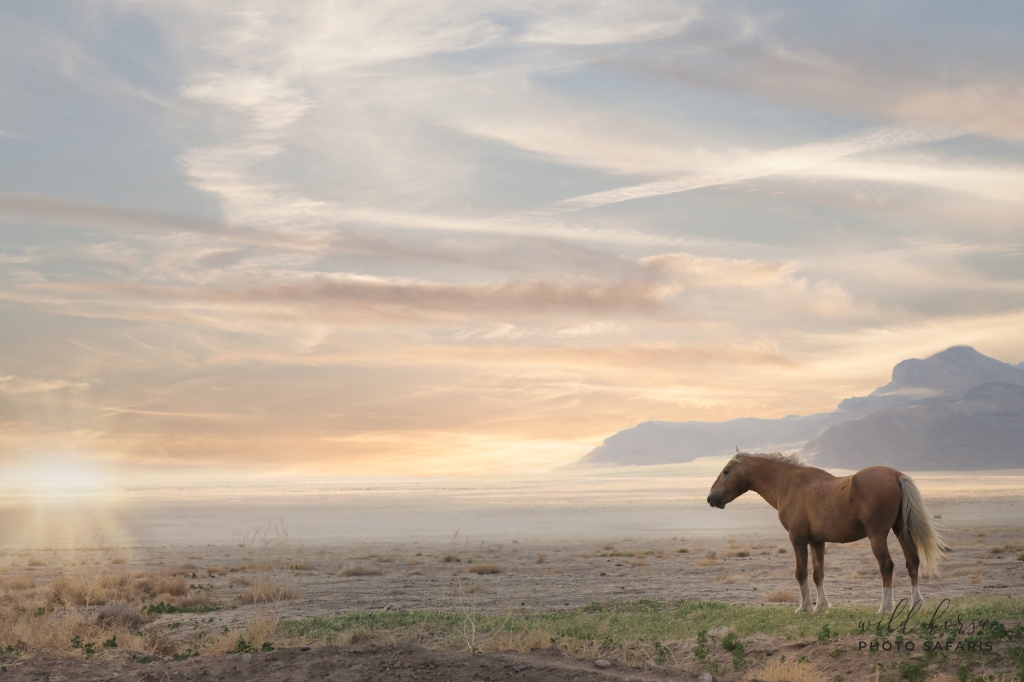
Yet even with all of this national attention and public outcry, here we find ourselves with only 42 days left to make a change.
42 days before the helicopters take flight and 400 of 475 horses, including heavily pregnant mares and brand new foals, will be forced to run for their lives. 296 of which will lose their freedom forever.
Families also will be lost.
And as is too frequently the case, lives will also be lost.
One small bit of hope is that the 2022 budget must still be approved by Congress. So flooding your local Congress person with messages as to the gross misspending of tax dollars to remove healthy wild horses and burros currently living on your public lands FOR FREE is well worth mentioning. Removing horses and burros is a multi-million dollar business as I already detailed in previous blogs, and money is a very powerful motivating factor for far too many people and as they say the root of all evil.
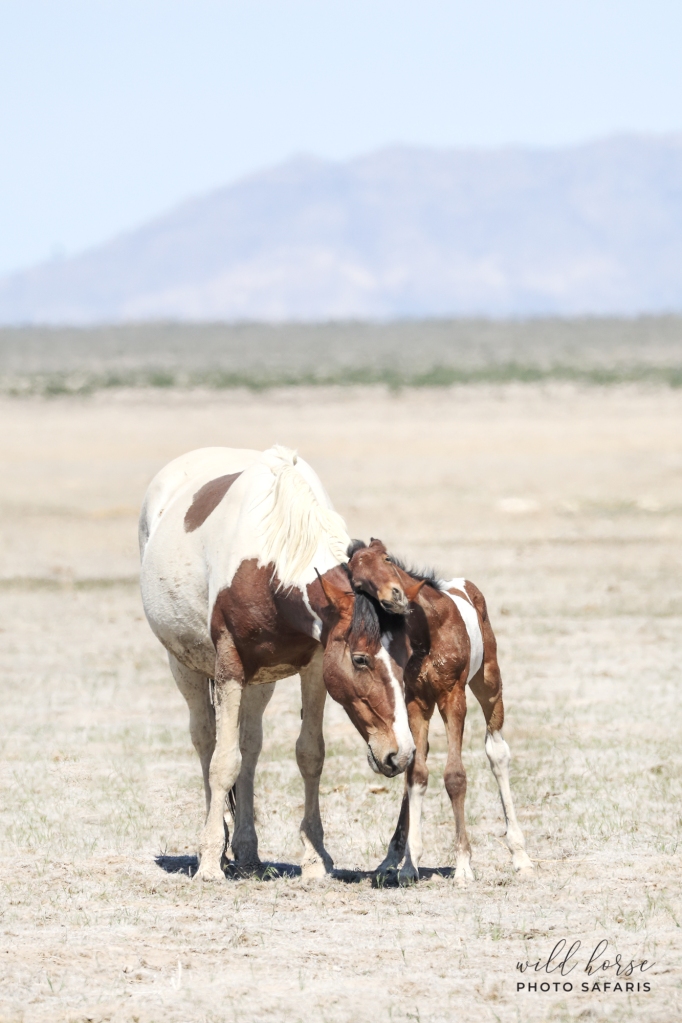
More information can be found from the following sources among others:
Red Birds Trust is born.
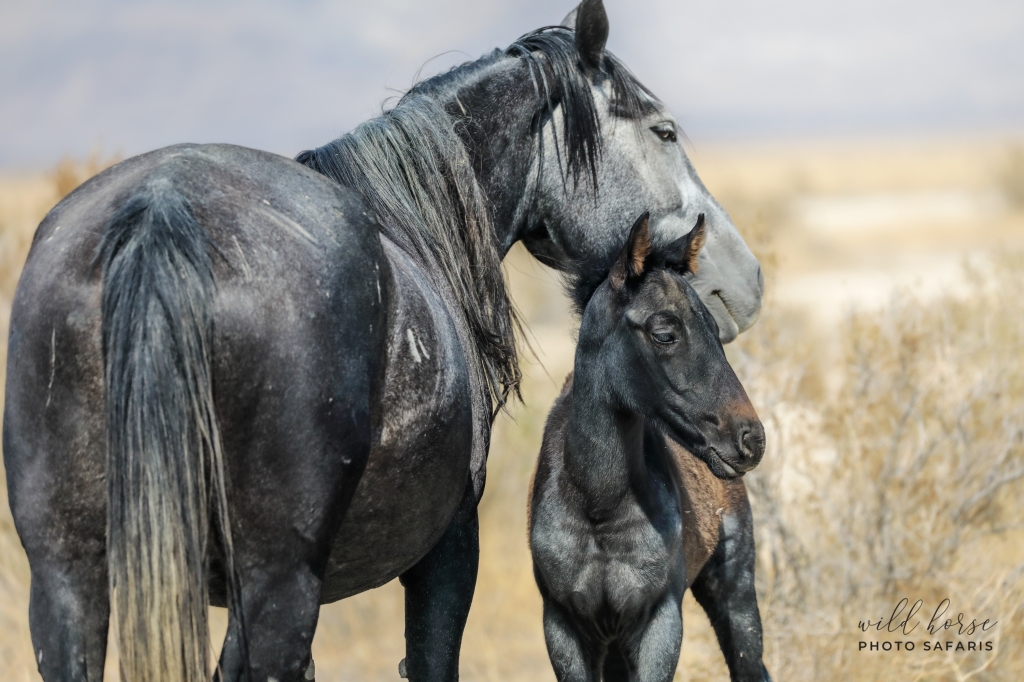
Today marks two months and 6 days since the formal announcement was made by the Utah Bureau of Land Management (BLM) to remove 400 of the estimated population of 475 Onaqui Horses. That means that in exactly two more months and 4 days the roundup is slated to begin. On serene desert scenes will now be overrun with catch pens and livestock trailers as they flood the desert while helicopters will be herd flying low overhead in search of horses.
From July 12th through the 22nd the stallions, mares and young foals will be running for their freedom. Through the dry dust-filled desert terrain and between the jagged mountain crevasses they know so well in search of reprieve. Families as they know it will cease to exist and it is safe to assume with such a large scale removal some of our beloved horses will face injuries and even death.
Countless locals, Americans and international supporters alike have flooded Washington DC with pleas to reconsider the mass plans to remove 20,000 horses from public lands in 2021 alone and instead listen to the National Academy of Science’s recommendations. These recommendations call for a complete program overhaul and use of scientific research to determine Appropriate Management Level (AML) of horses for each Herd Management Area (HMA) rather using than the current arbitrary standards set in the 1970’s that have a complete lack of scientific backing. Demographics have changed, range conditions have changed and time is running out to save our national heritage found running wild and free in the spacious lands called home to America’s wild mustangs.
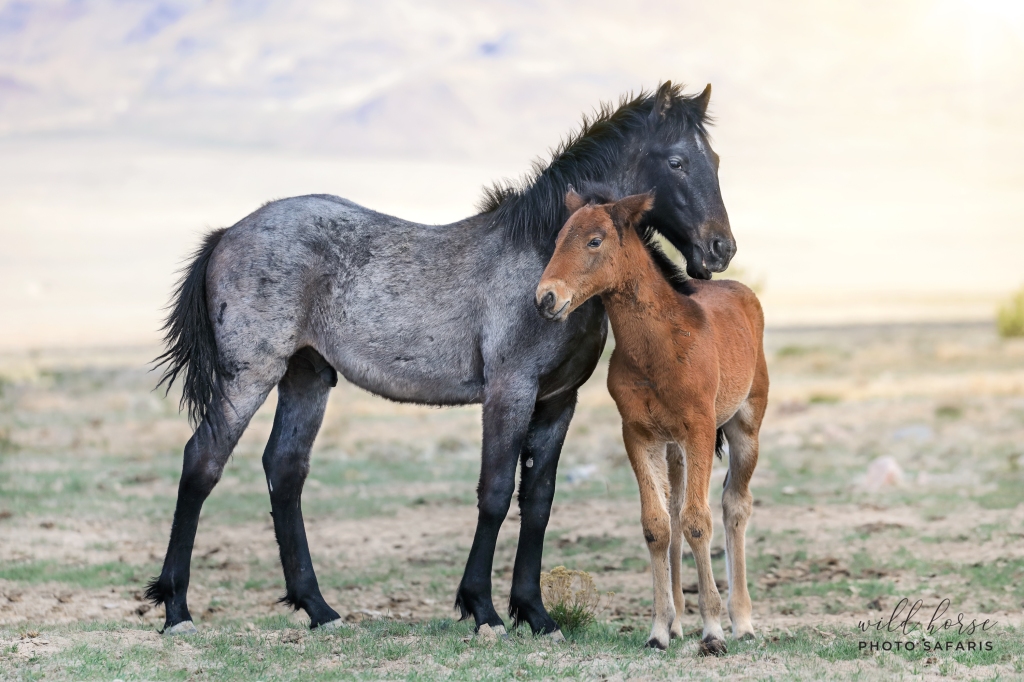
With the new appointment of Deb Haaland as Secretary of the Interior hopes soared high. She has a favorable track record in supporting efforts to keep our wild horses wild and advocates rejoiced in gaining a friend in such a powerful position. However, to this point she has remained silent on the plight of America’s wild horses and the ticking of the clock is becoming louder and louder with each passing day.
There is a moratorium on conducting roundups during the months of February through the end of June. This is considered to be peak foaling season and the idea is to let the newborns age enough so that they can run and keep up with the rest of the herd as they are chased into the chutes by helicopter. As of July 1st the flood gates will once again open and the roundups begin. Not only here in Utah but in many other states as well.
For me atleast, the March 2nd announcement of such a drastic removal of the Onaqui horses seemed surreal. My mind simply couldn’t wrap itself around the fact that sooner rather than later so many horses I came to consider friends will be taken away, held captive in pens, and separated from those they loved and protected on the range.
Days drug on, more letters were sent, blogs were written, media outlets contacted, stories submitted for international publication and spokespersons sought. It’s a strange place to be when you realize you’re both hopeful yet frantic at the same time.
During the ensuing days of organized chaos and mass brainstorming an idea was born. What if I can save just one? It all started with one.
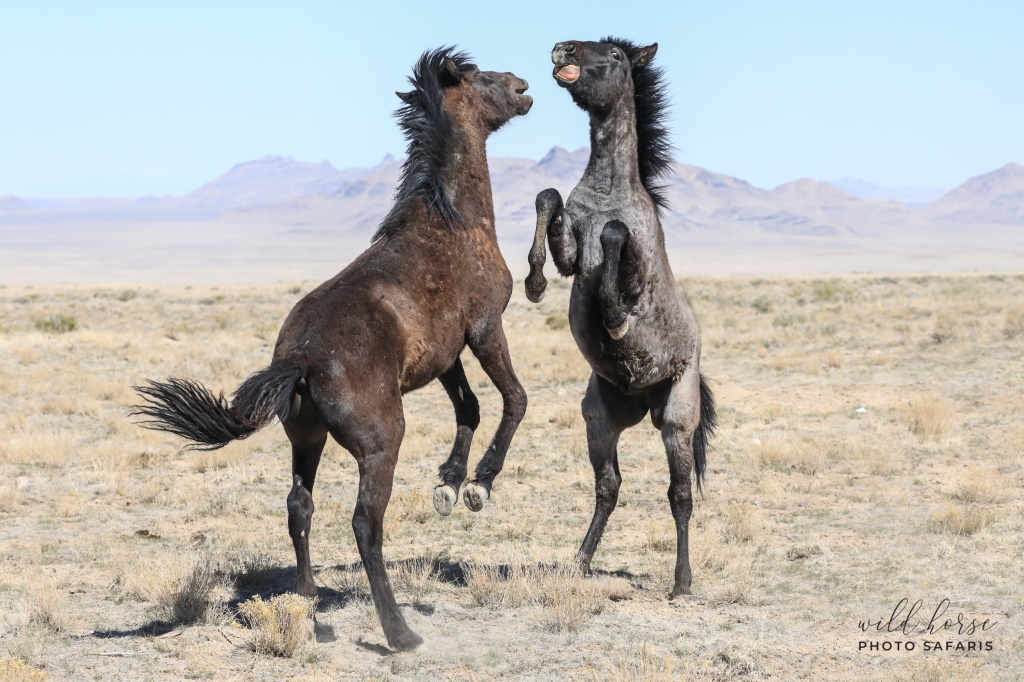
There is a small 2020 foal born last fall that I came to call Red Bird. He was very small but sturdy and nearly black with hints of red around his nose and inside his ears. He clung to his momma’s side and looked to the other foals in the band for guidance on how to be brave. He wanted to be curious, but was still quite shy and would fly off like a little bird back to his mother’s side at the smallest hint of alarm. Hence he became known as Red Bird.
On January 13th a tiny almost imperceptible swollen area became noticeable in his left lip and by February 22nd it was far more pronounced. We all assumed he’d just received an uncomfortable kick while playing or possibly had cheat grass embedded into his lip but as time has gone on, the swelling has increased rather than decreased. On March 2nd upon hearing of the plan for removal I instantly thought of little Red Bird and the possibility that he may be euthanized after capture rather than treated and put up for adoption unless there was someone waiting to take him.
I decided I needed to become that someone. How it would come to pass I had no idea.
So many things have been transpiring in such a short time that honestly it’s hard to even wrap my mind around it let alone put a timeline together but somehow in all this madness and panic we were able to create a 501(c)(3) nonprofit called Red Birds Trust. The purpose of the nonprofit will be three fold:
- Adoption/Rescue and care of Onaqui Horses
- Range Cleanup
- Education
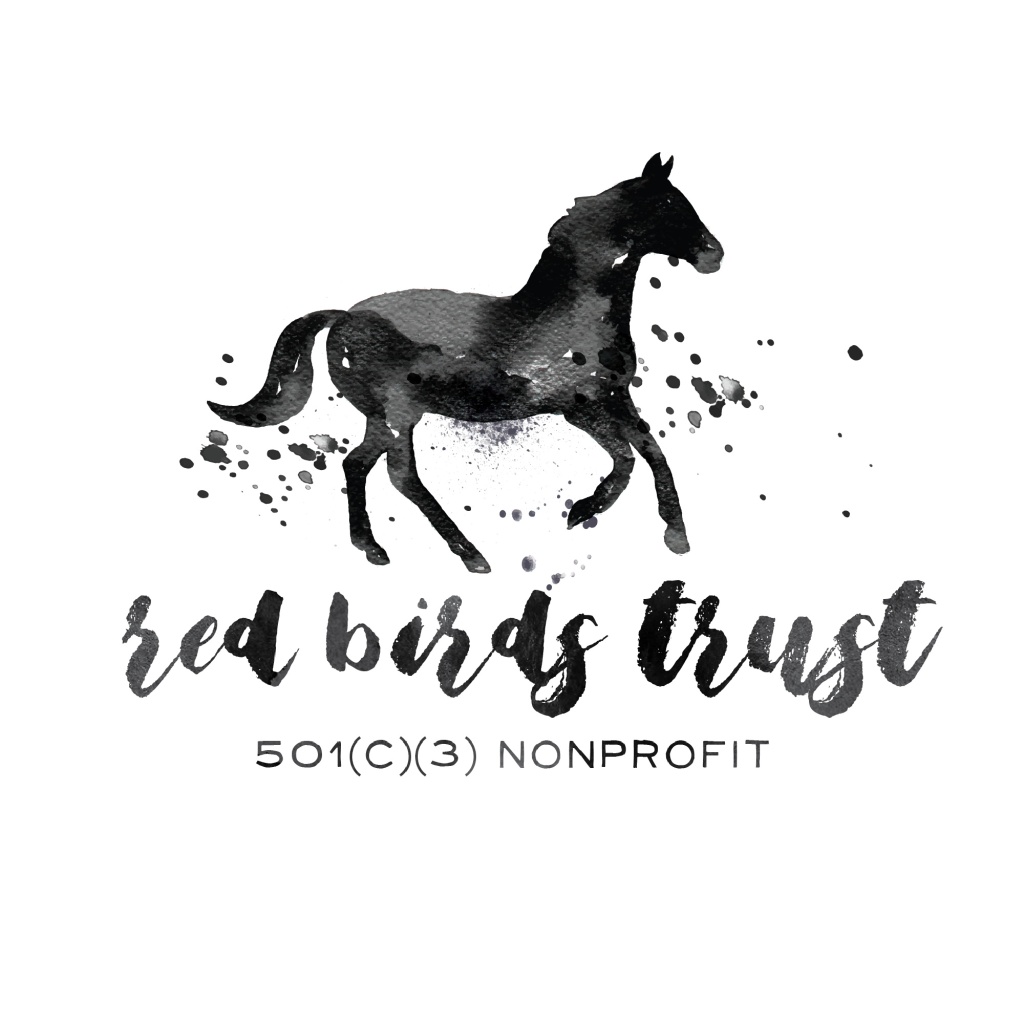
I joined forces with long time local wild horse advocates Scott Beckstead and Shauna Godfrey Muztafago. Scott Beckstead is Director of Campaigns for The Center for a Humane Economy and also Director of Campaigns for Animal Wellness Action. Shauna manages and oversees the Save The Onaqui Wild Horses Facebook page. We also welcomed a wonderful photographer and artist from Maui, Brandy Romano, and Mellany Miller a passionate wild horse advocate, photographer and finance/grant guru as Treasurer – we couldn’t be more thrilled.
The goal for everyone is to keep advocating to keep the wild horses living their best lives in the wild, however as a backup plan Red Birds Trust will be collecting monetary donations and donations of supplies, fencing, manpower and other items from our wish list to begin the process of freeing Onaqui from the government holding facility here in Utah. Funds donated will also be used to sponsor adopted horses, buy supplies and tools needed for range cleanup efforts, to rent a truck/trailer, post hole digger, etc.
In addition to this, we are SO excited to create a community based approach for adopters of the Onaqui horses to be able to come together for questions, concerns, training recommendations, to find out the history of their horse while living on the range and to provide a place lean on in the case of financial emergency. We know that it’s not unusual to go through hard times and if Red Birds Trust is able to help keep these Onaqui with their original adopters and out of kill pens then our hearts would all soar.
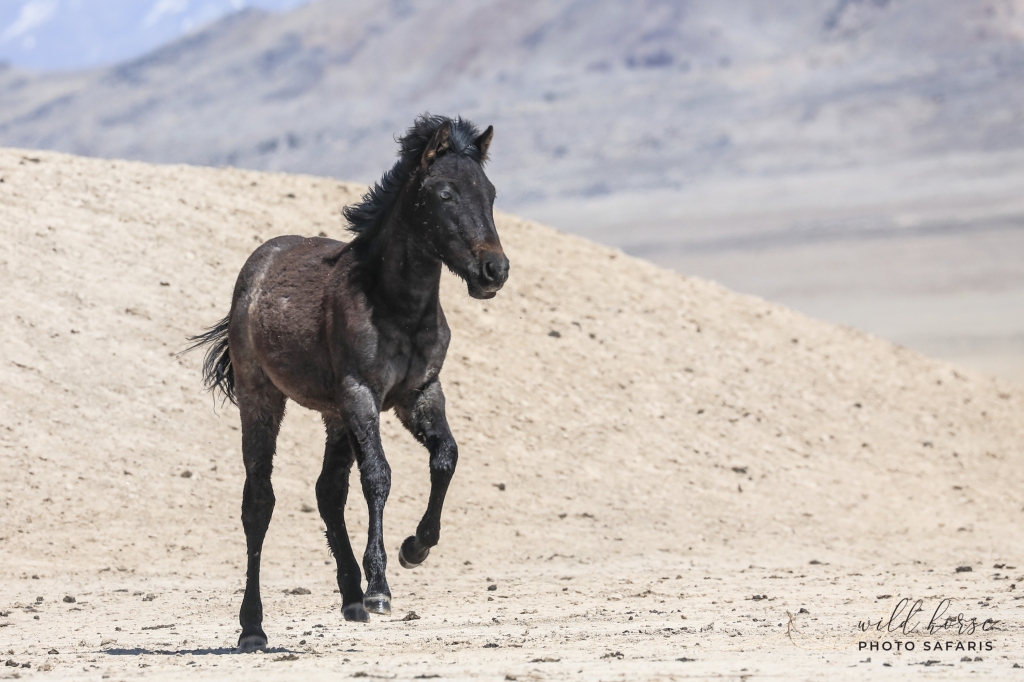
While we definitely don’t have all the answers, but we do have the fortune of knowing many in the industry with years of experience, education and research into wild horse care in the wild and in adopted homes. We look forward to being able to disseminate information that may be helpful to adopters and help to connect people looking for information to the people best suited to provided it if we don’t know the answer ourselves such as the Wild Horse Education, The Cloud Foundation and others.
We strongly encourage anyone interested in volunteering for Onaqui HMA range cleanup to contact us directly. We’d love to know the best days/times you are available and the best email and phone number to reach you. Each time we have a scheduled range cleanup event we will be able to access our volunteer database and send out a notification to everyone who has signed up. We will also let everyone know what to bring (ie: gloves, hats, close toed shoes) and may ask for specific help if a certain type of vehicle or equipment is needed.
More information can be found online at redbirdstrust.org and we look forward to being able to partner with the local BLM field office and coordinate with local volunteers and donors for many years to come.
As always, we are hoping that in the next two months and 4 days we receive a miracle and our Onaqui horses are blessed with a reprieve from the scheduled gather. Letters will continue to be written and pleas made. But in the meantime we will be working on the backend to do everything we can to prepare and raise funds for adoptions, care and housing and range cleanup which is very much needed and long overdue.
Thanks to everyone for your kind words, thoughts and support for the last 2 months and through the months that follow.
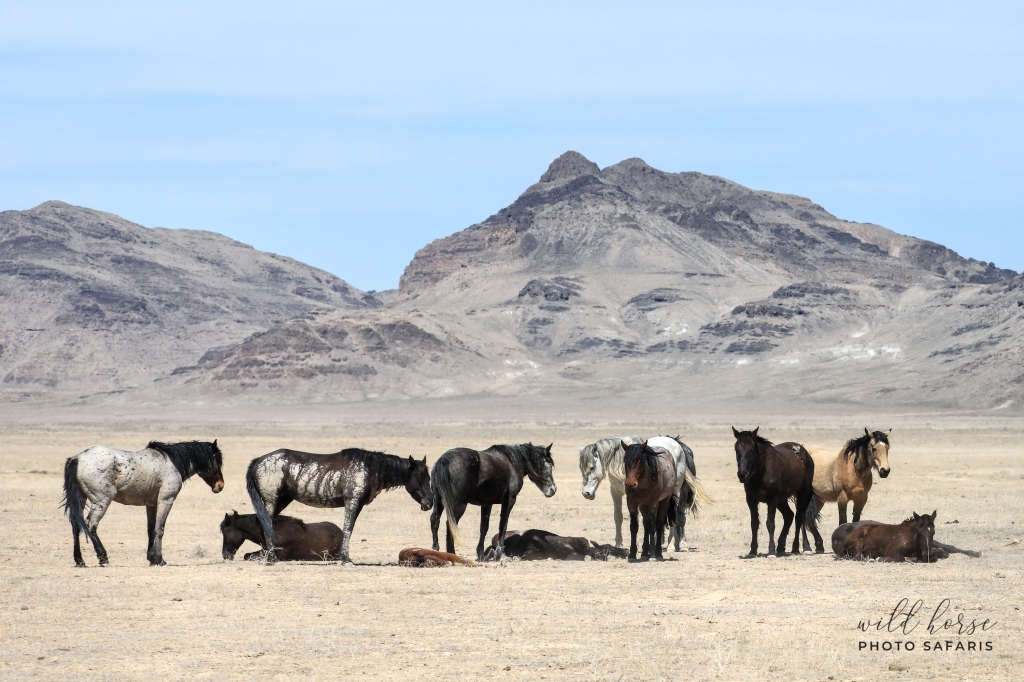
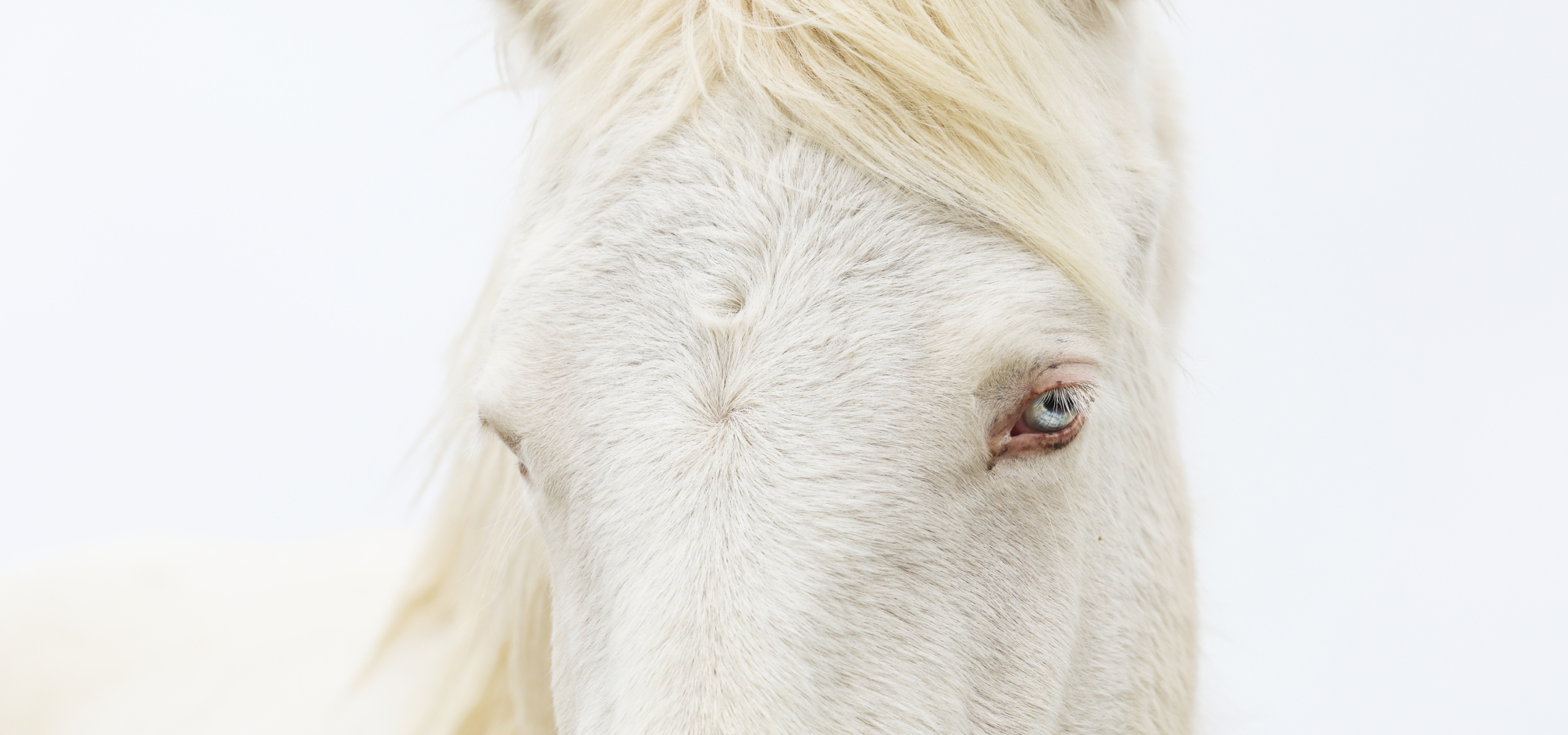
A great horse will change your life. The truly special ones define it…” – Author Unknown
FACES OF THE ONAQUI
The Onaqui herd can currently be found living their best lives in the West Utah desert however in exactly 80 days from today they face a decimation of population numbers, band continuity and genetic viability. On July 12th a roundup will begin capturing 400 of 475 horses via helicopter, loading them into crowded stock trailers and transporting them to the off-site BLM facility in Delta where the processing and sorting will take place. They receive freeze brands and tags tied around their necks which then determine their new identities. They will be vaccinated, stallions will be gelded and then they will be separated by age and gender to be kept in holding pens. Of the 400 captured, 52 mares and 52 stallions will be handpicked to be returned to the ranged based on age and the females past tolerance to being darted with the equine contraceptive PZP in the field.
After the return of the 104 wild horses the herd count will now be at approximately 179. New bands will have to form, new patterns of seeking forage and finding water established as horses from the north and south who’ve never met will likely have to co-mingle and understand lands they’ve never seen. (ie: north herd living in the south range and visa versa)
Just as the quote above says, “A great horse will change your life. The truly special ones define it…” I think anyone who has had the privilege of being exposed to the grace, the tolerance and the love that swirls amongst the Onaqui bands will agree these are truly special wild horses. I decided to create a little tribute to some of my favorites with images and some details about them or what they’ve meant to me personally. They’re all so different and so unique and they all deserve their own story so I hope you enjoy the Faces of the Onaqui pictured below.
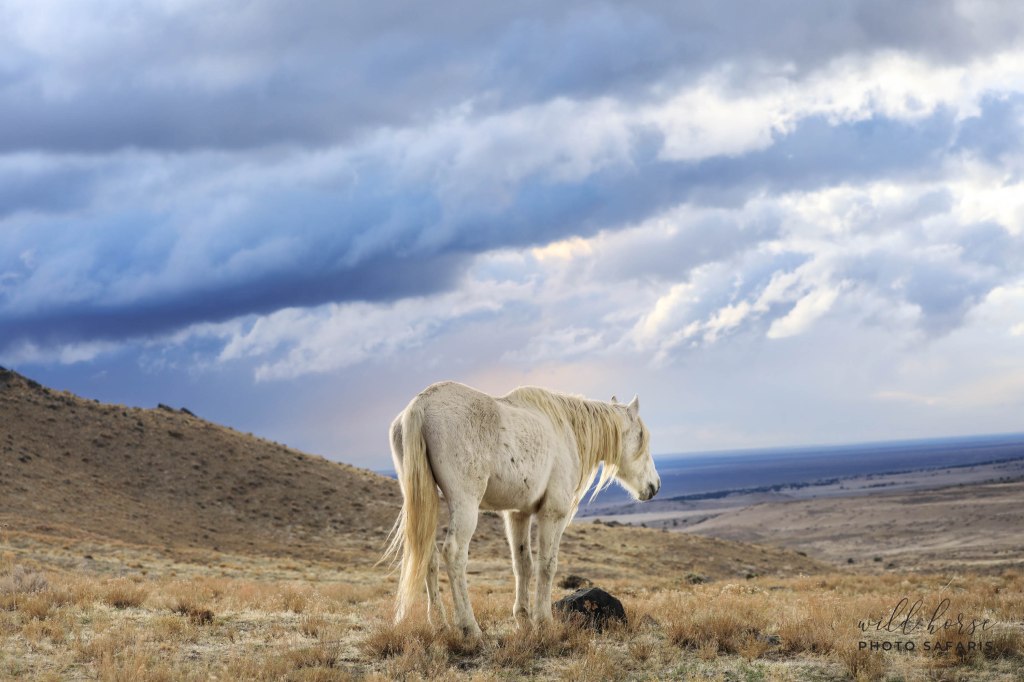

This little fella is Red Bird (OQ345gS). He was born late last August to a beautiful grey mare (OQ344gM) in Golliath’s band in the south herd. He was lucky enough to have 3 other foals born around the same time period in his band (OQ347zM, OQ346zS, OQ348zS) so he’s had lots of friends to grow up with. He is a total momma’s boy, always staying close to her side and looking to her for comfort if he gets unsure. He is especially fond of the young filly I call Little Star (OQ347zM) and follows her lead in seeking out new things. There is a brand new little Chestnut colt (OQ395bS) born to dam OQ351zm in early April and Red Bird is completely in love. He follows the new baby around cleaning it, and trying to teach it to play and standing over it while it sleeps to block the sun.
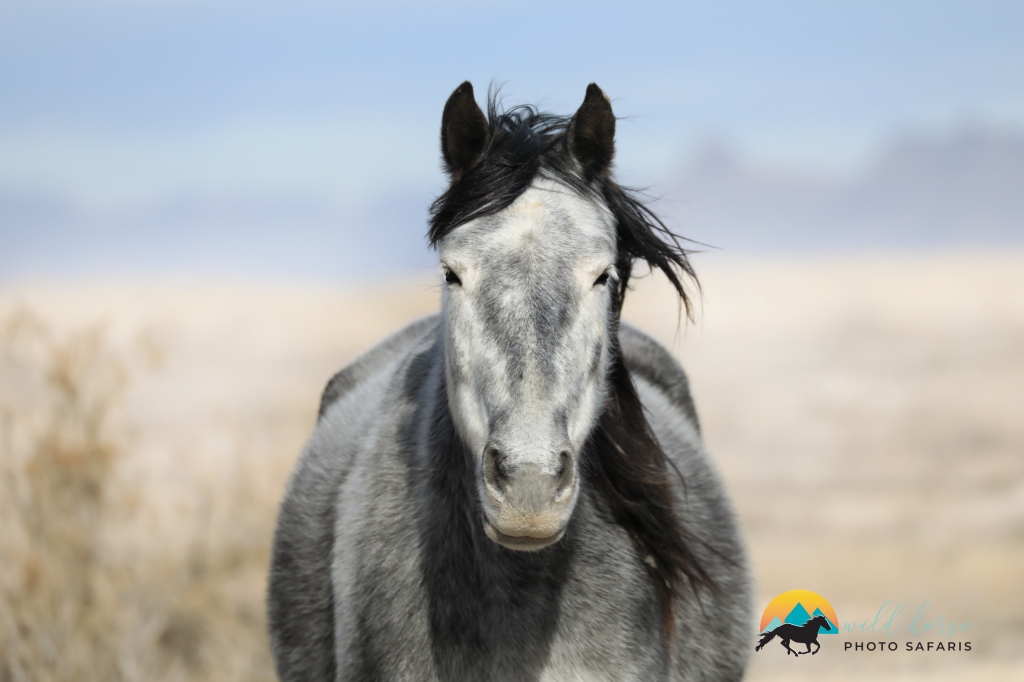
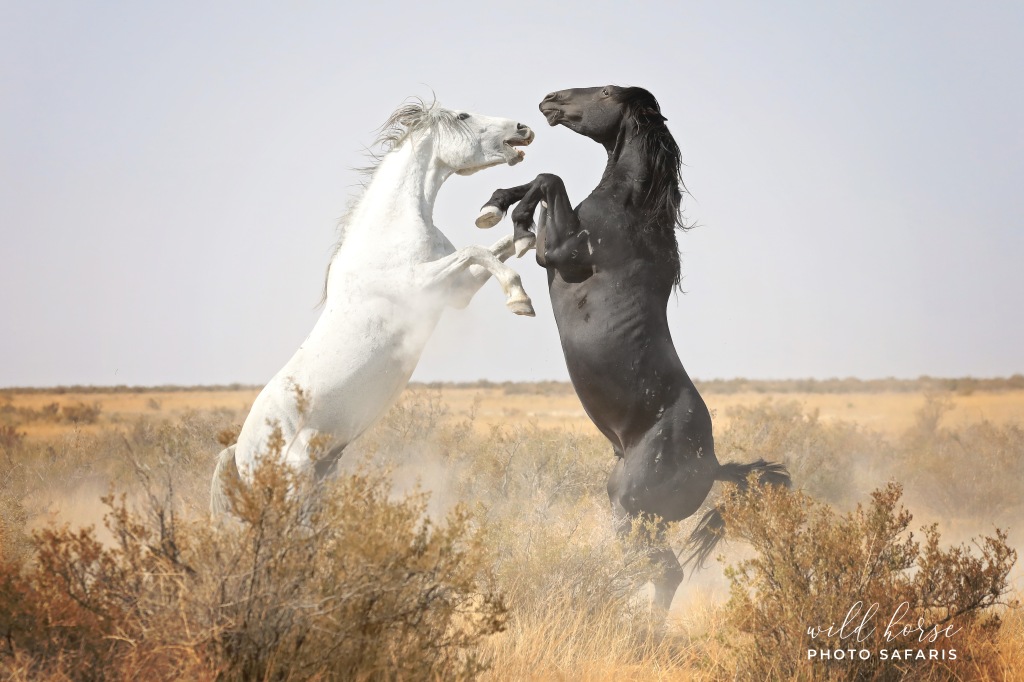
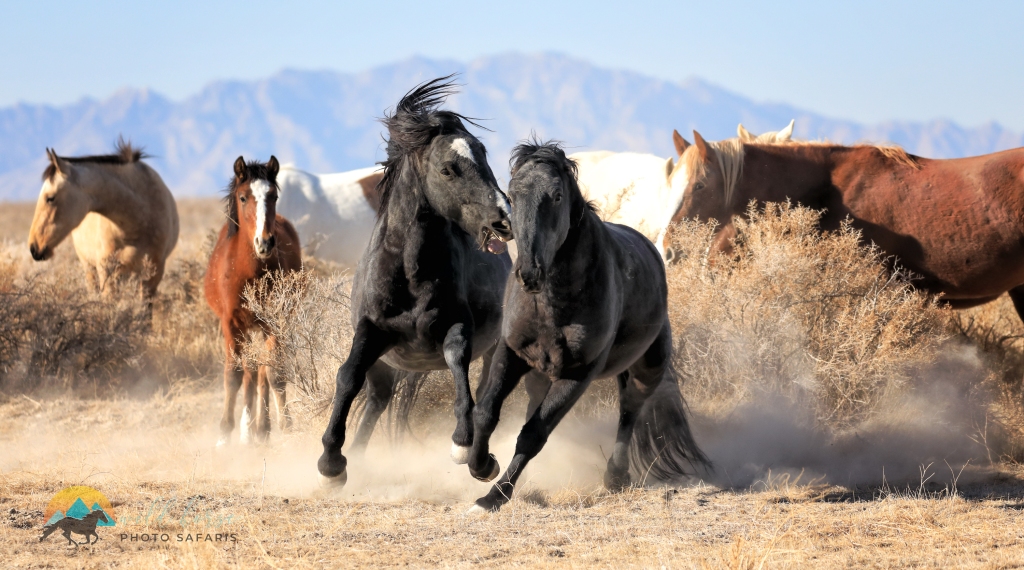
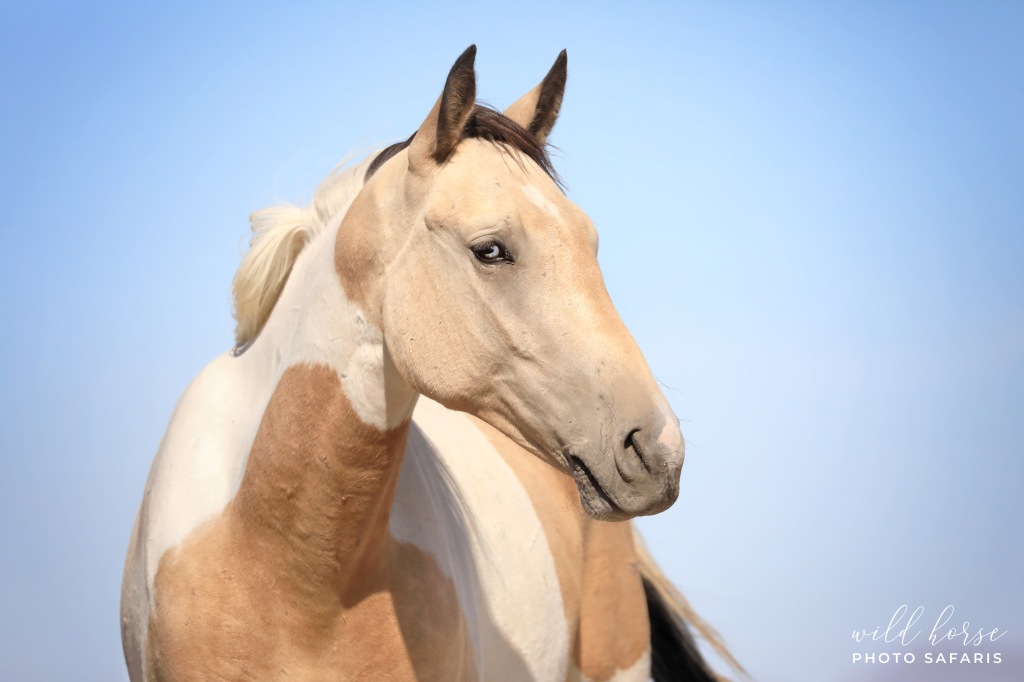
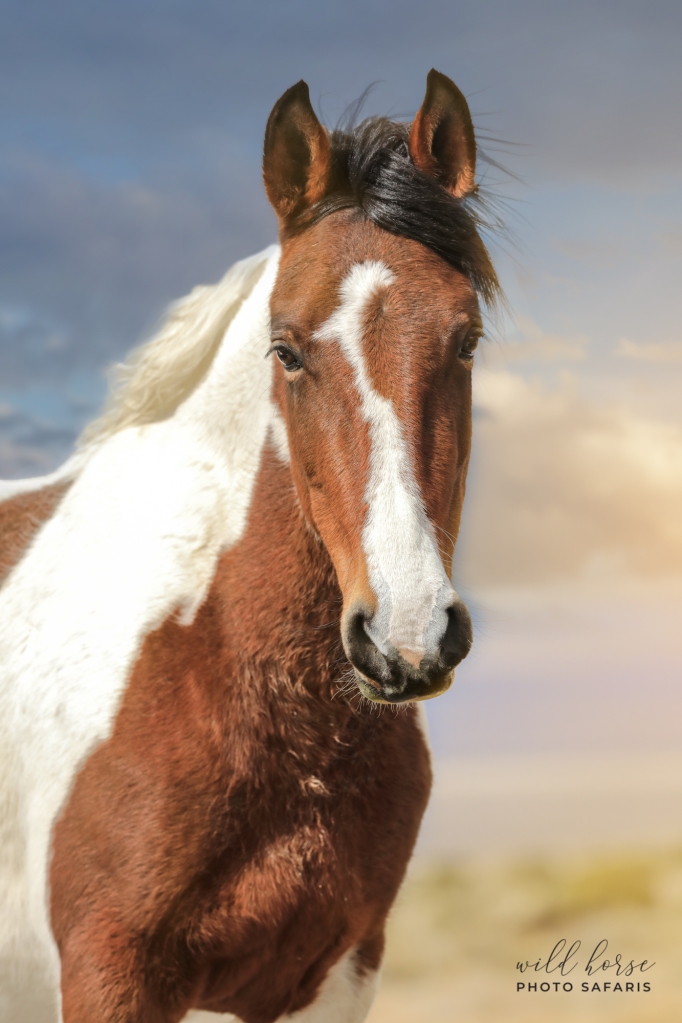
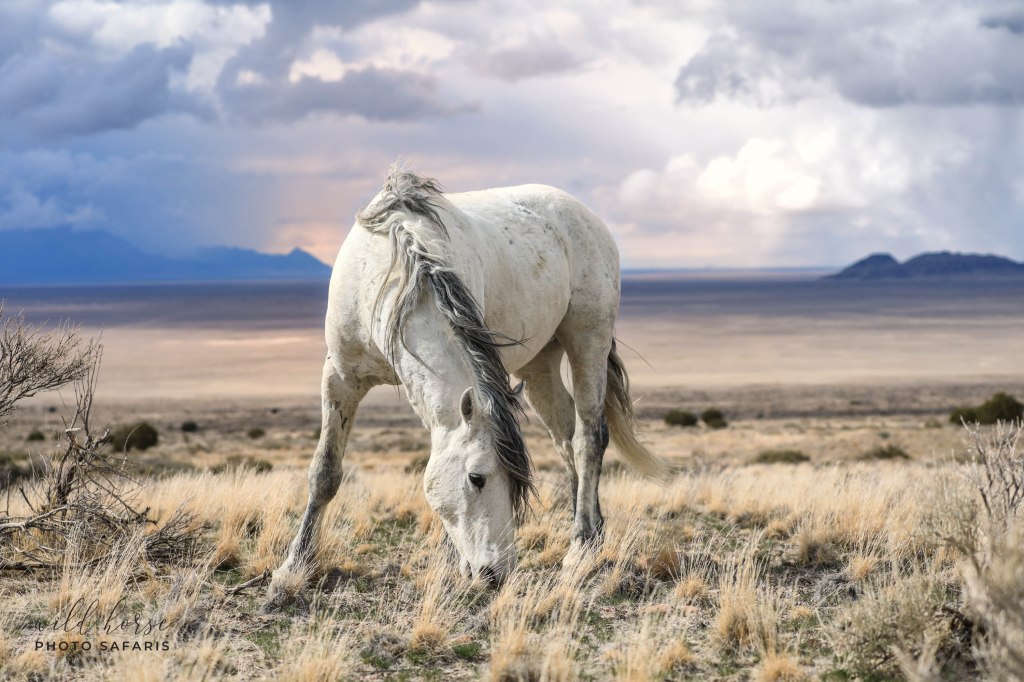
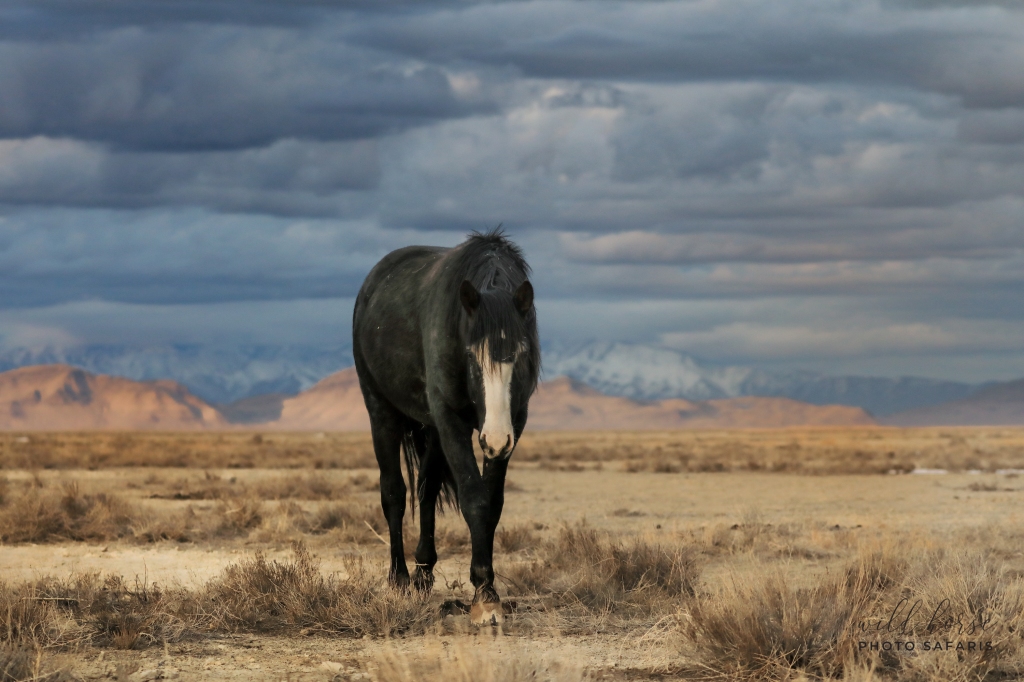
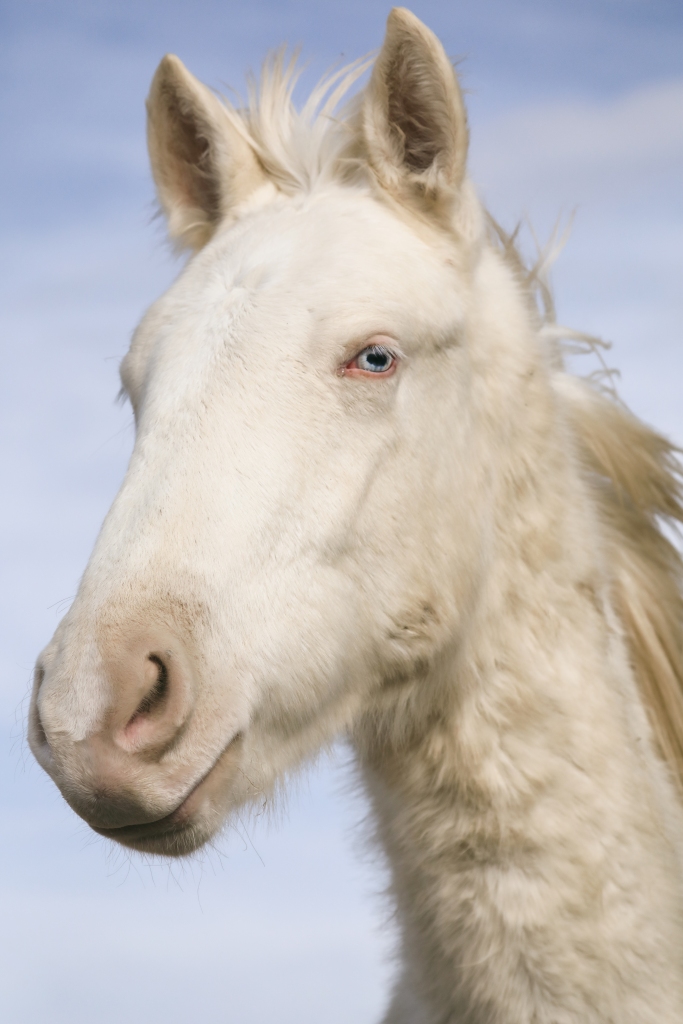
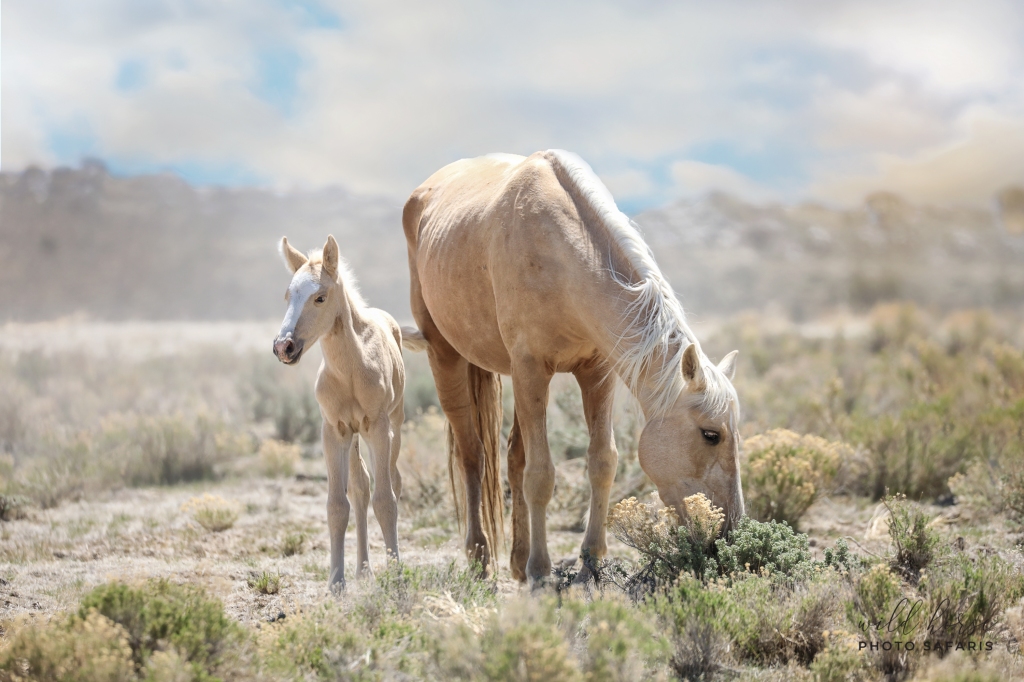
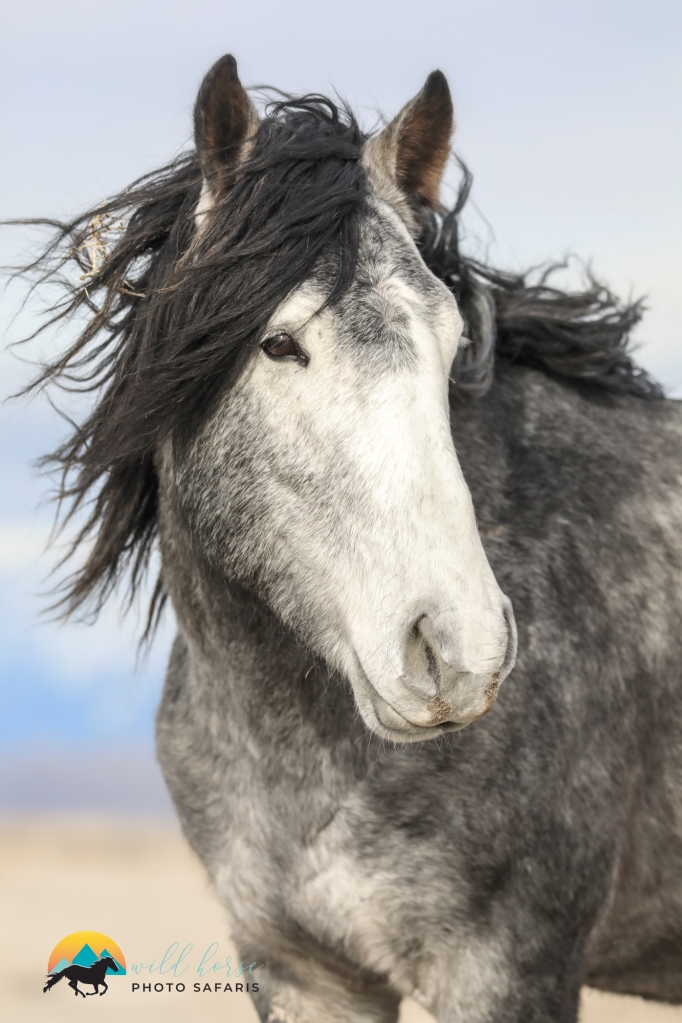
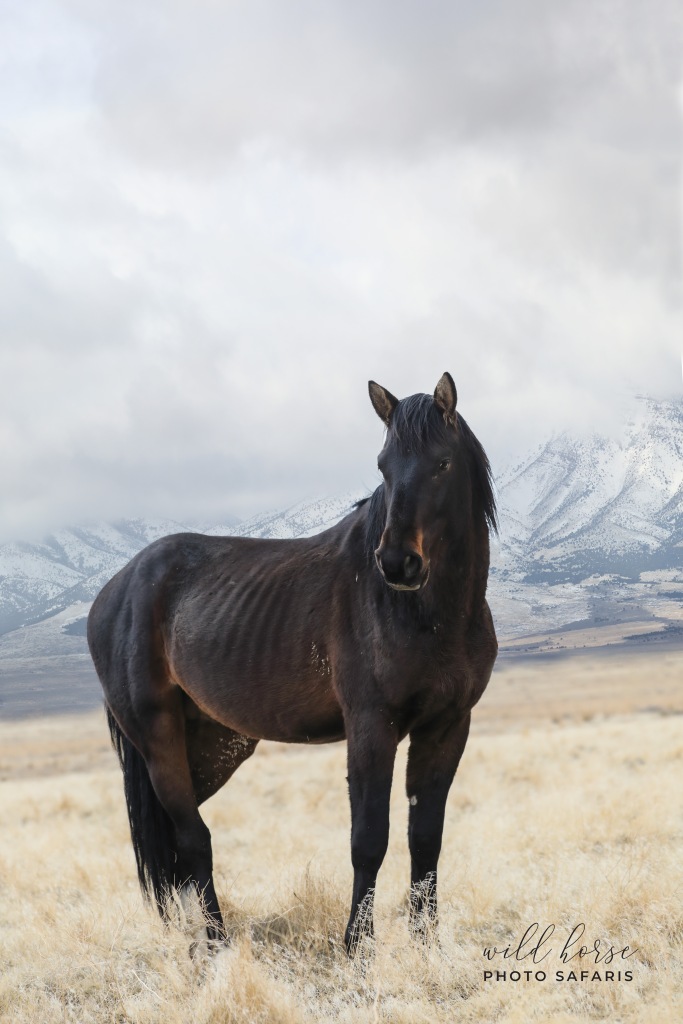
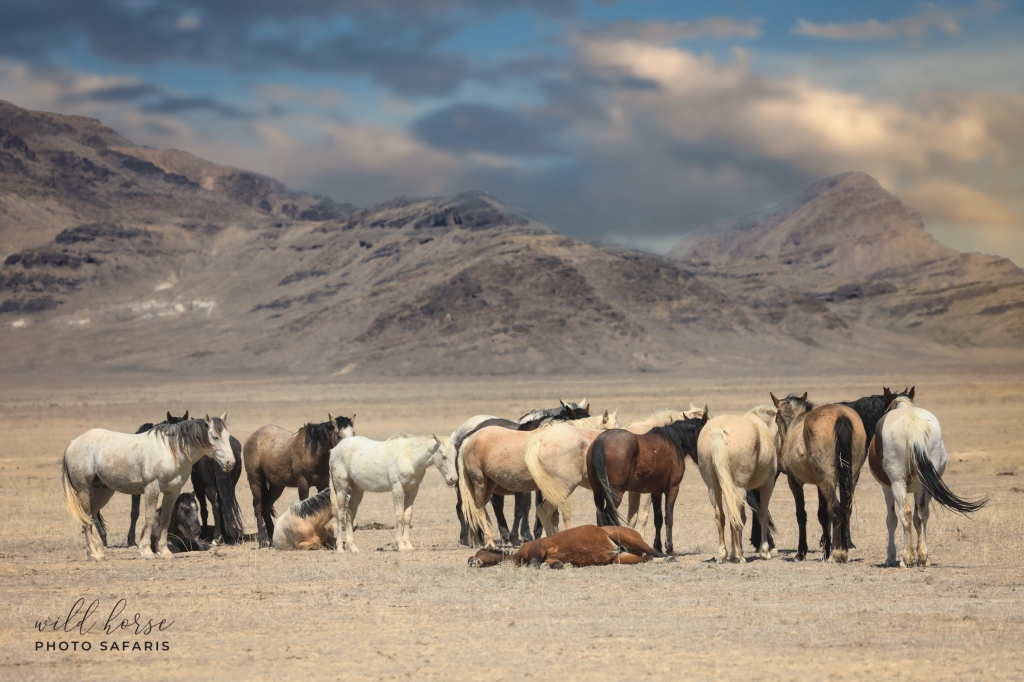
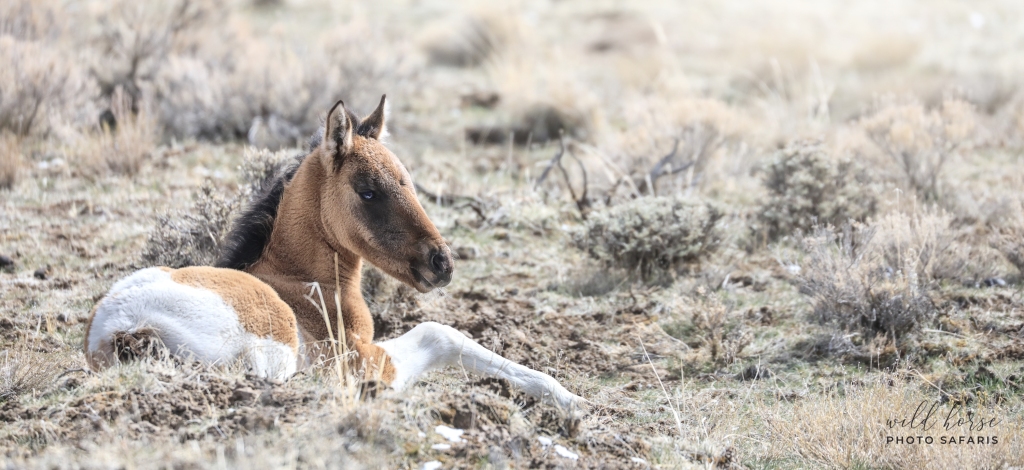
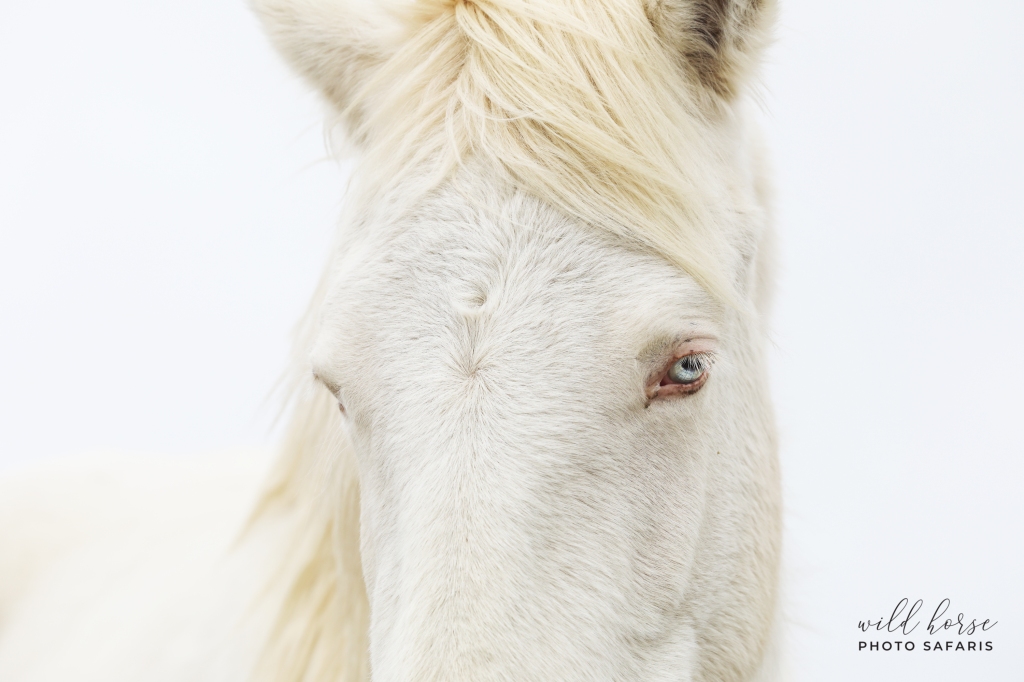
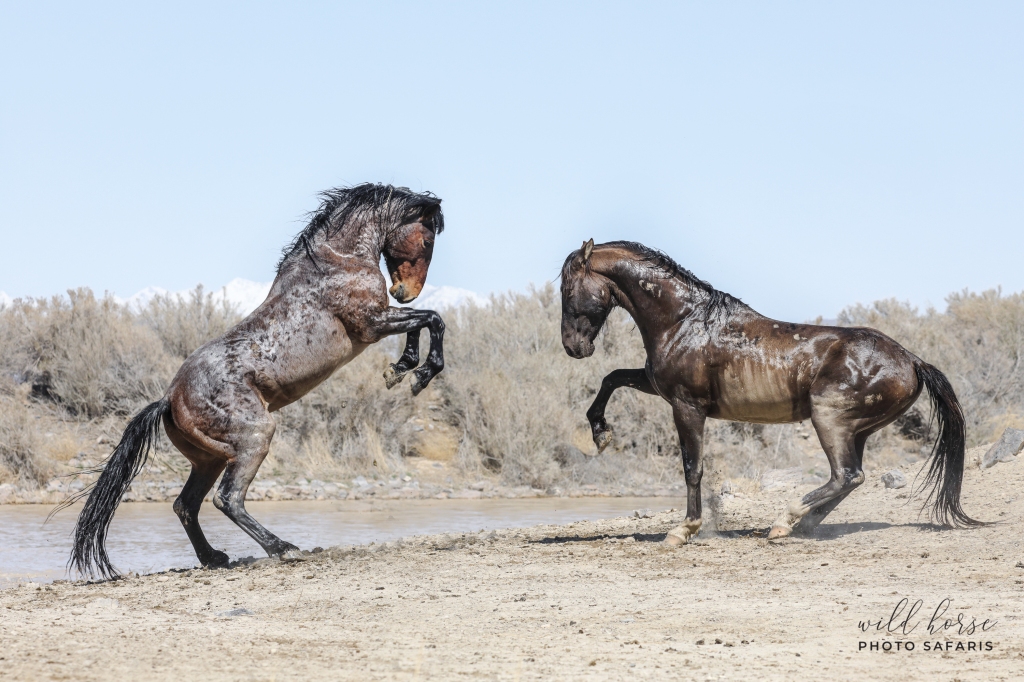
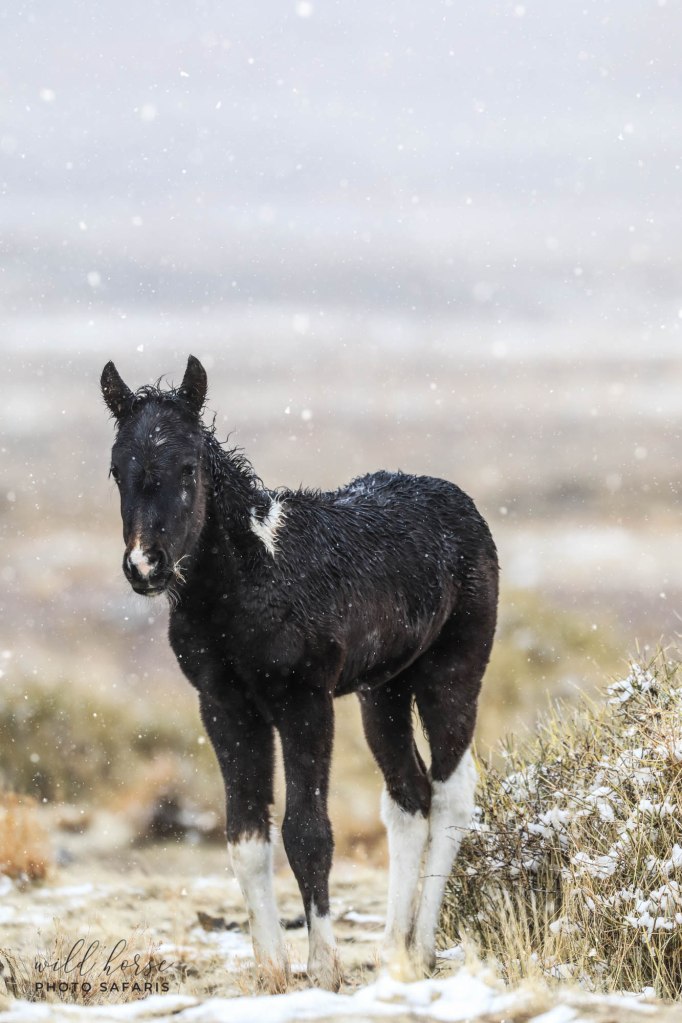
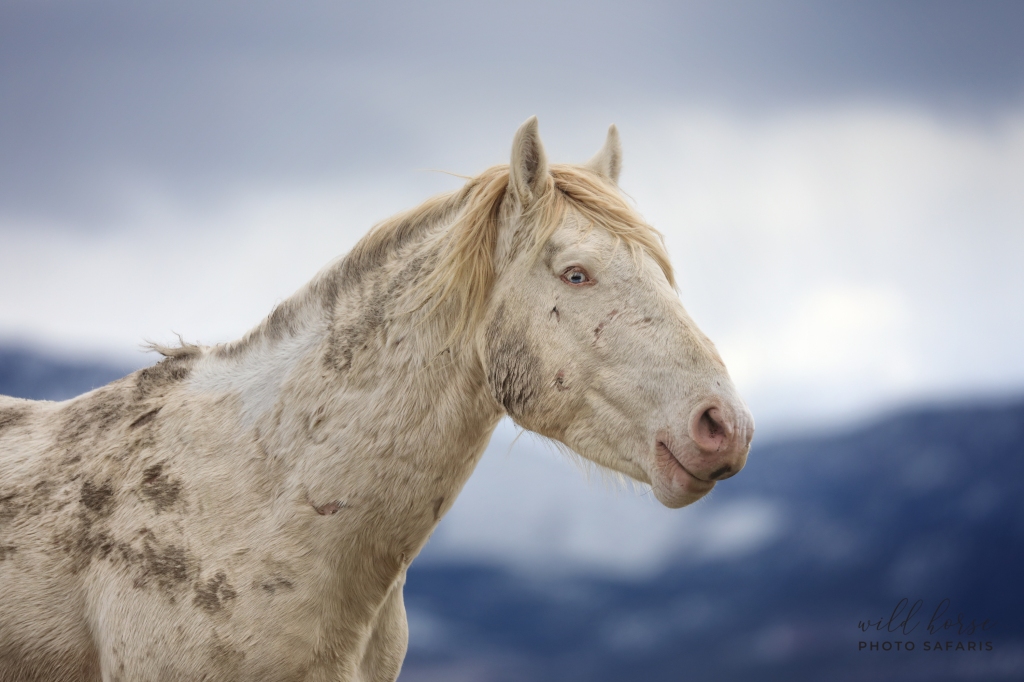
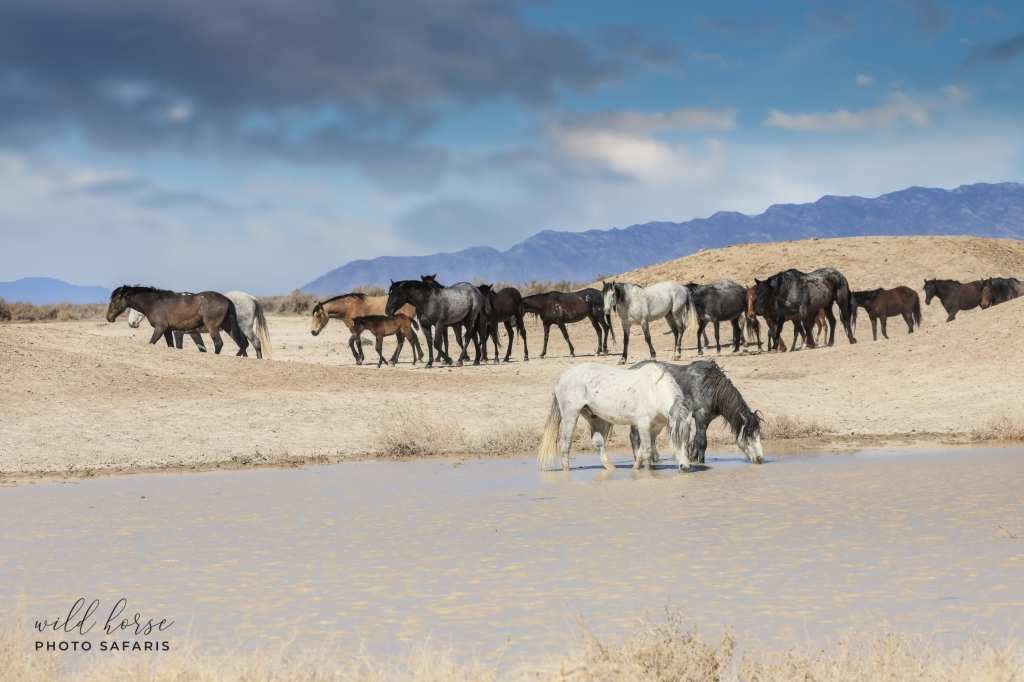
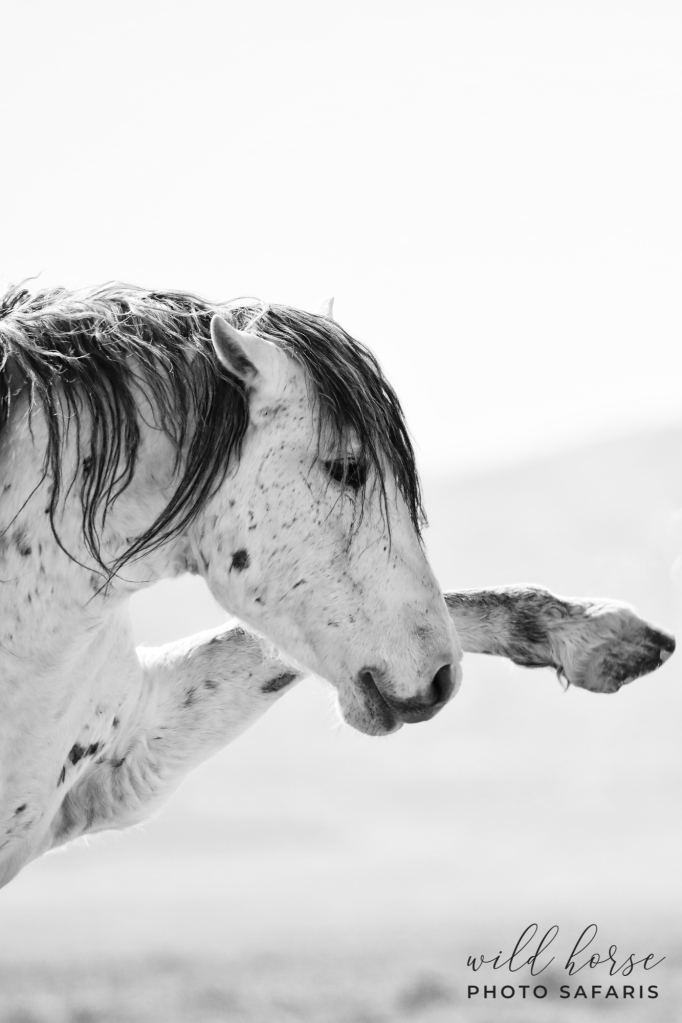
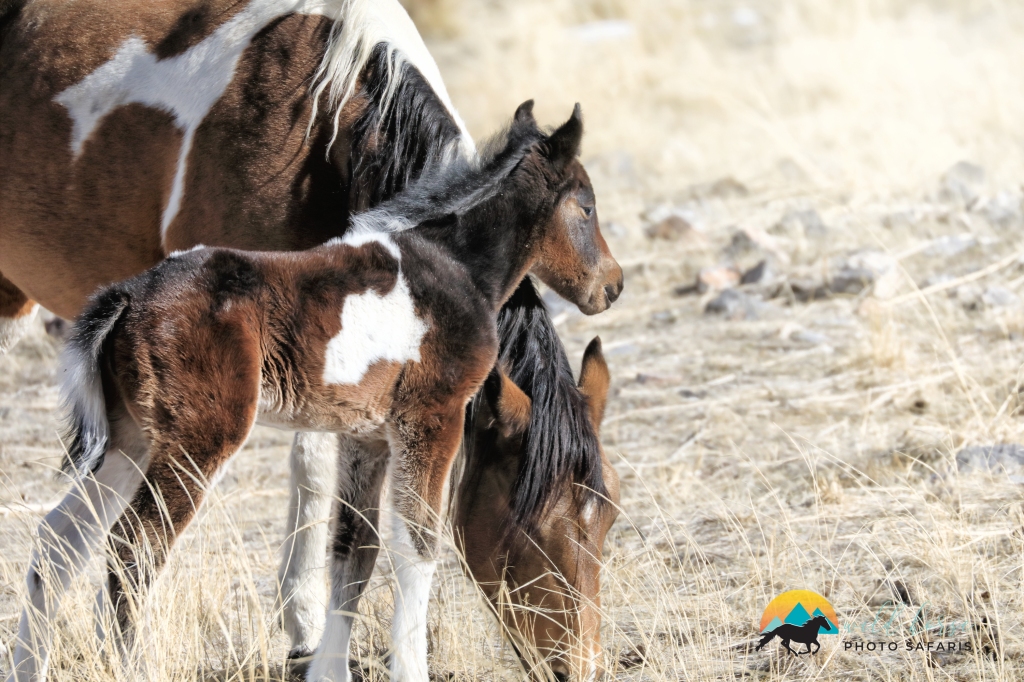
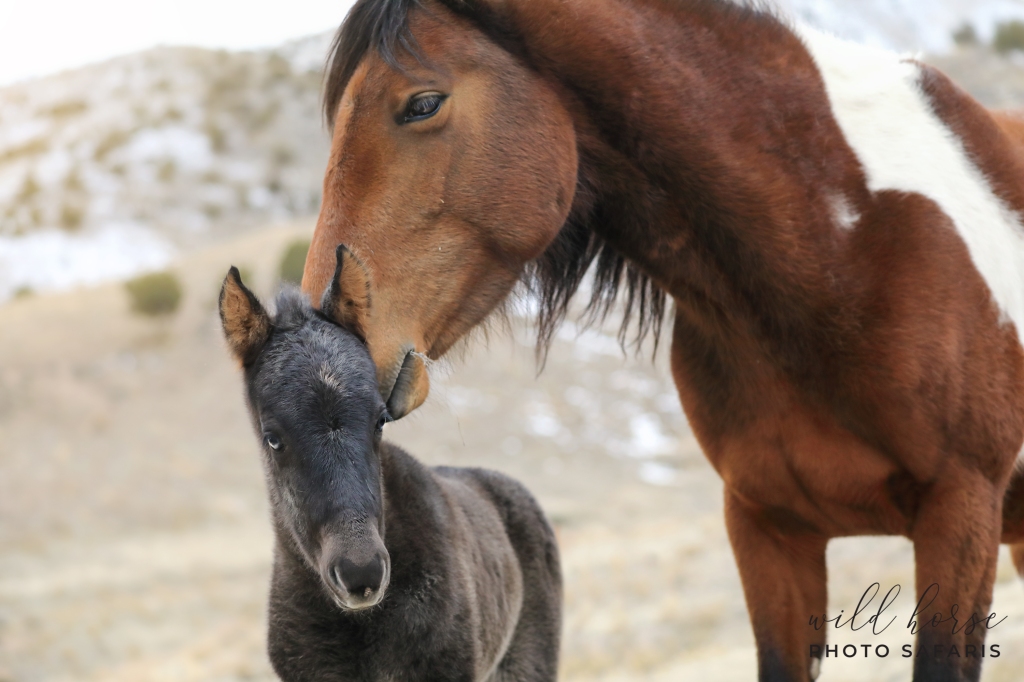
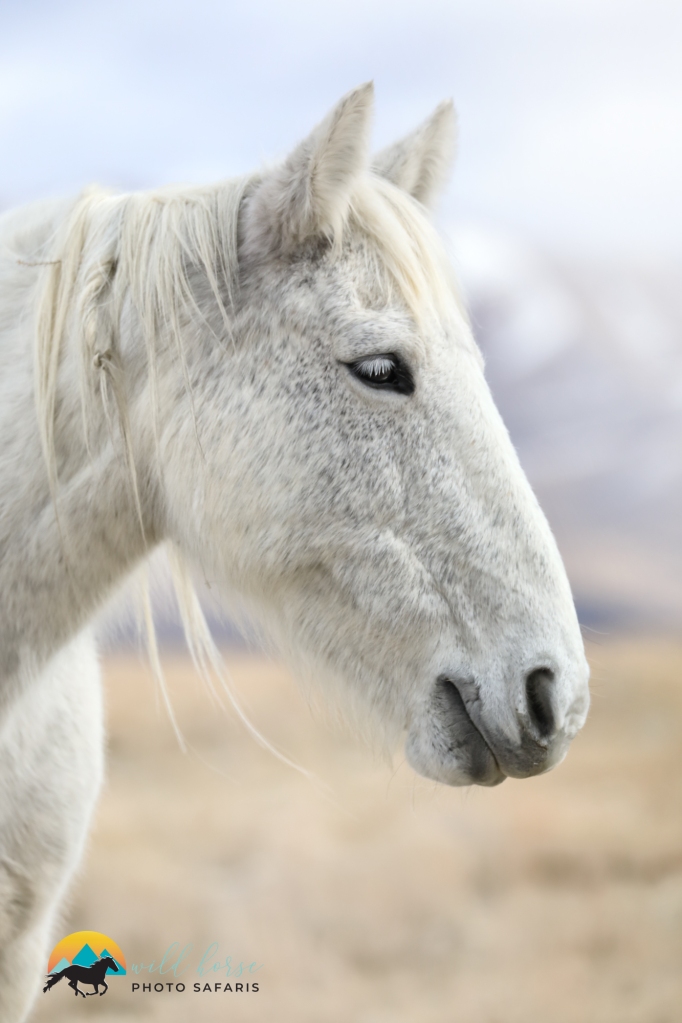
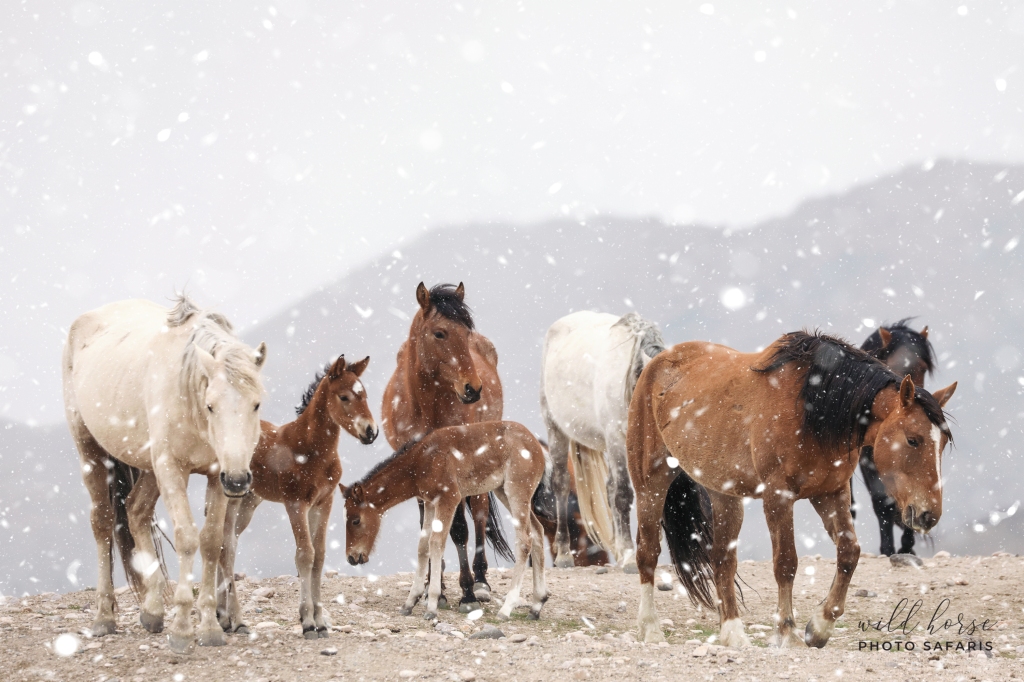
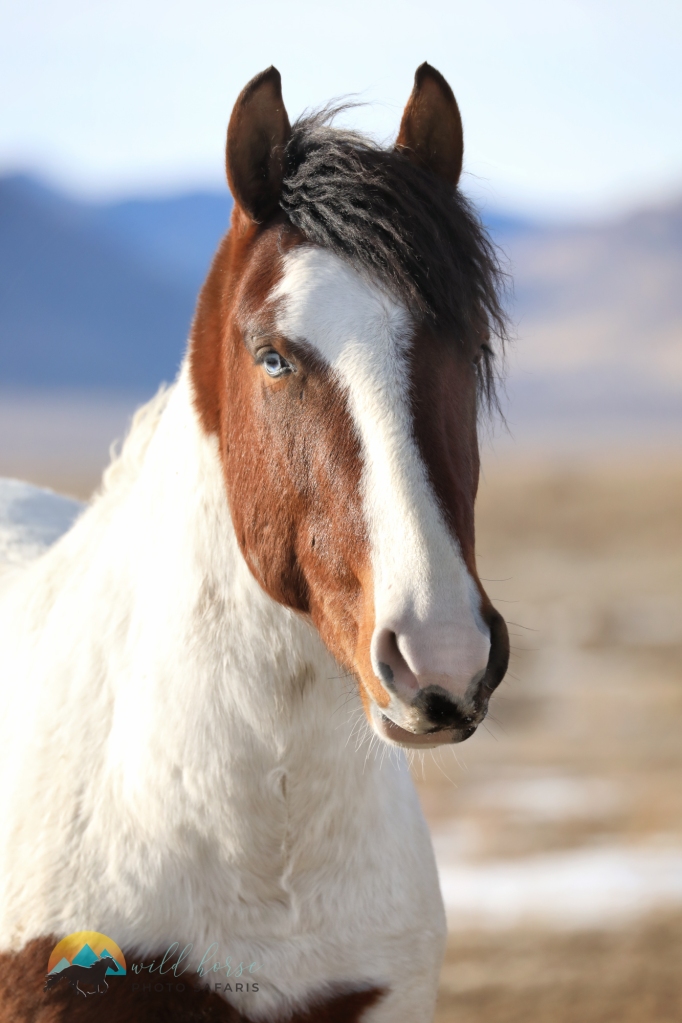
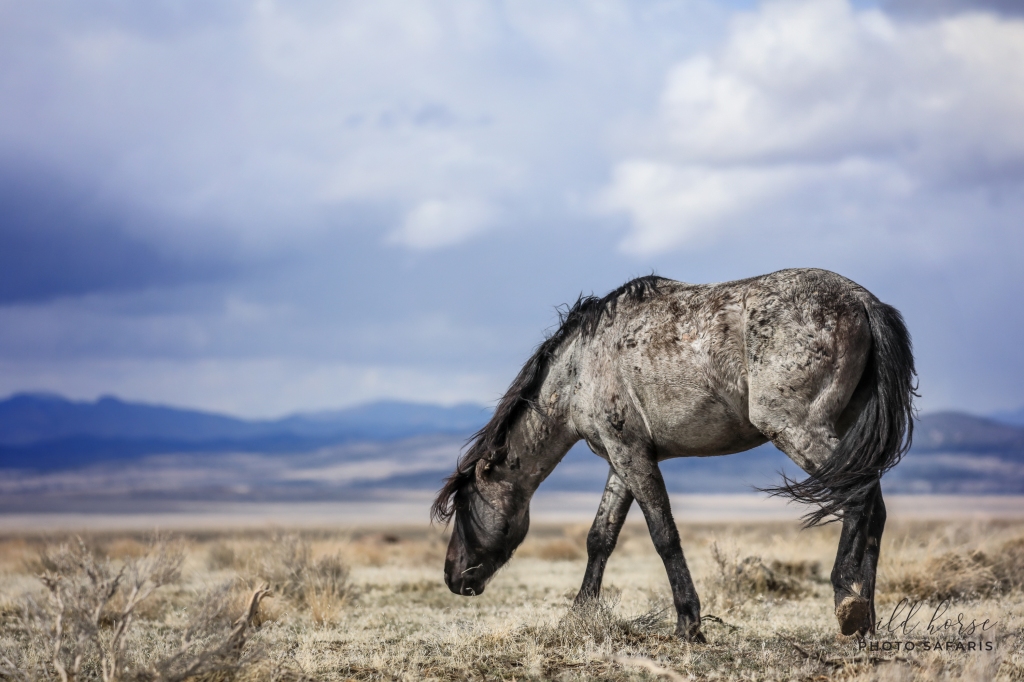
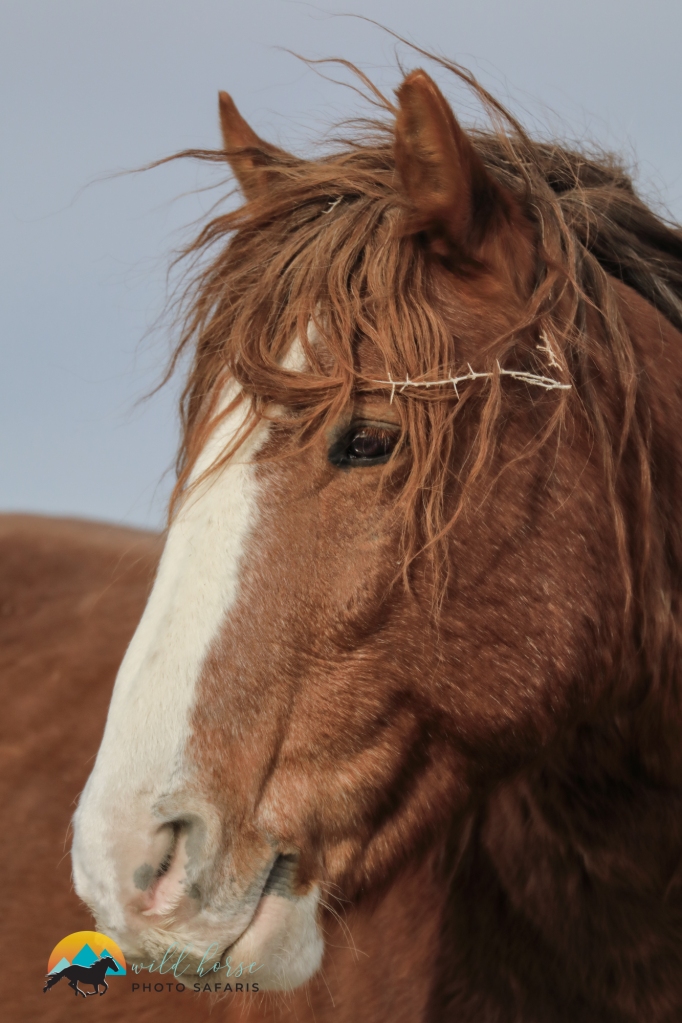
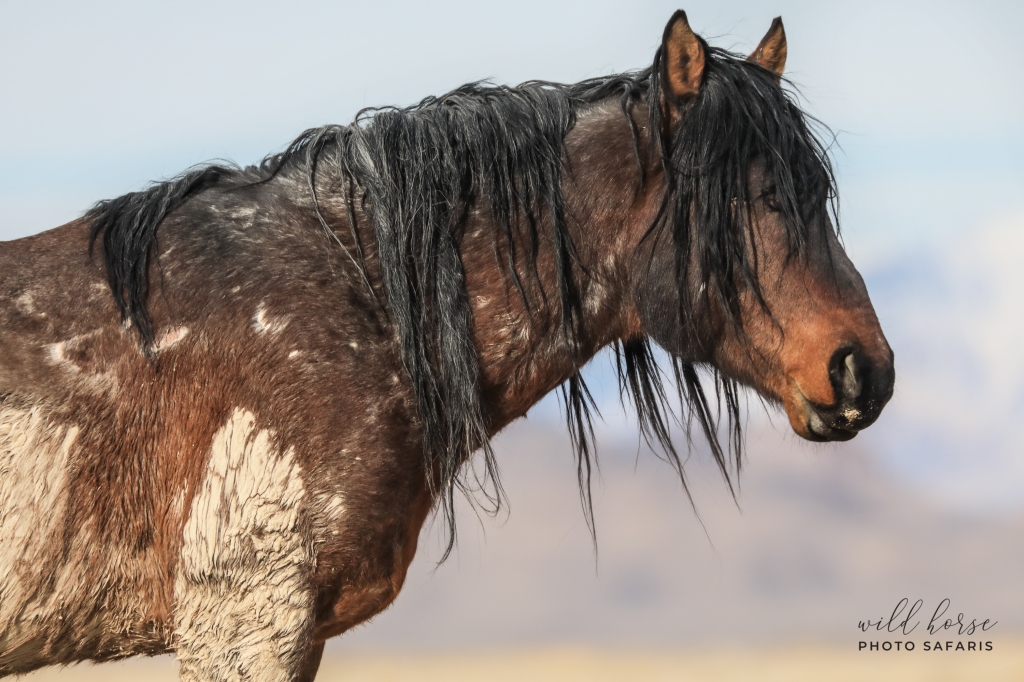
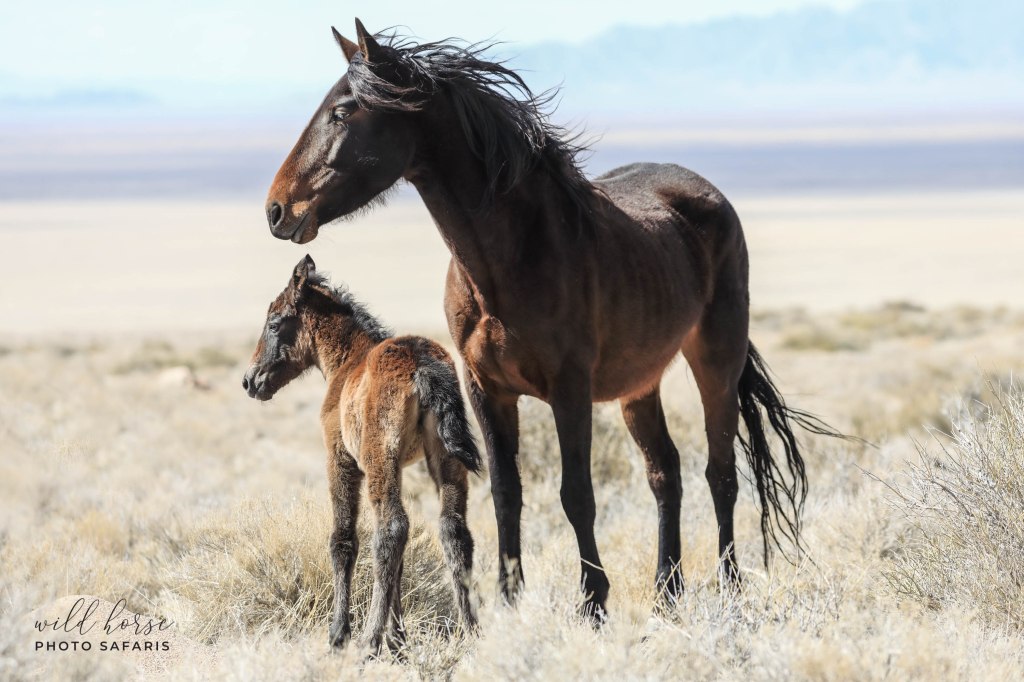
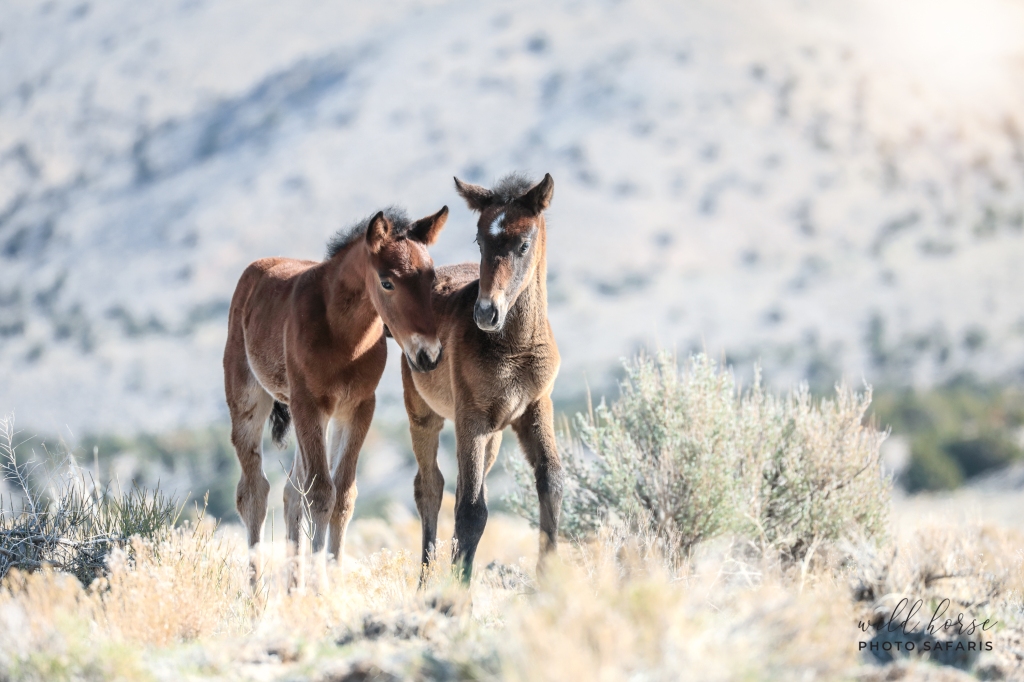
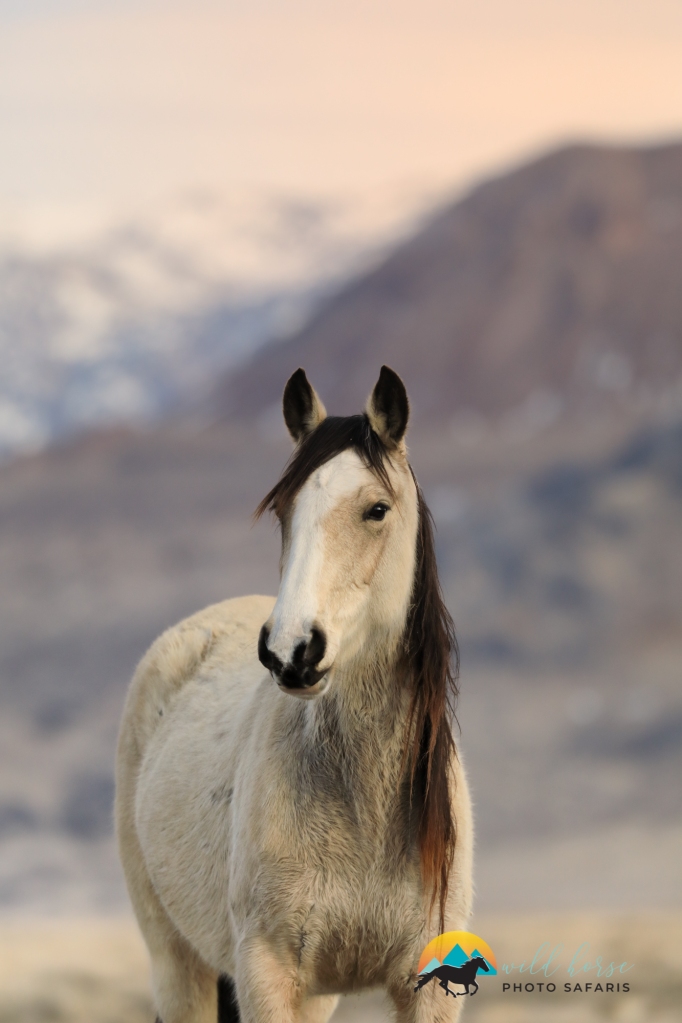
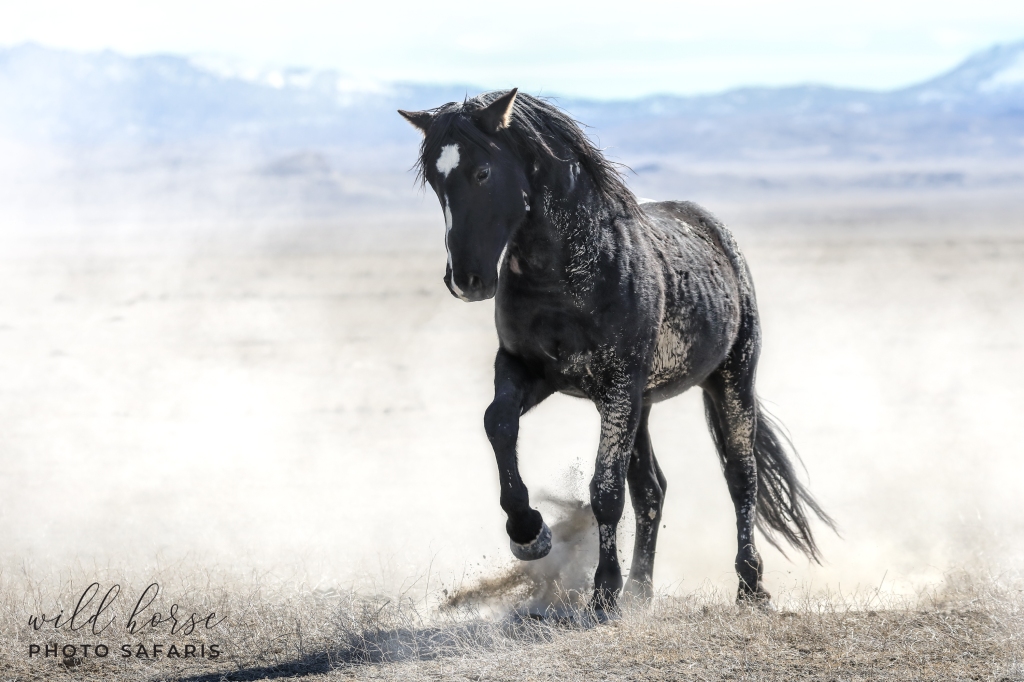
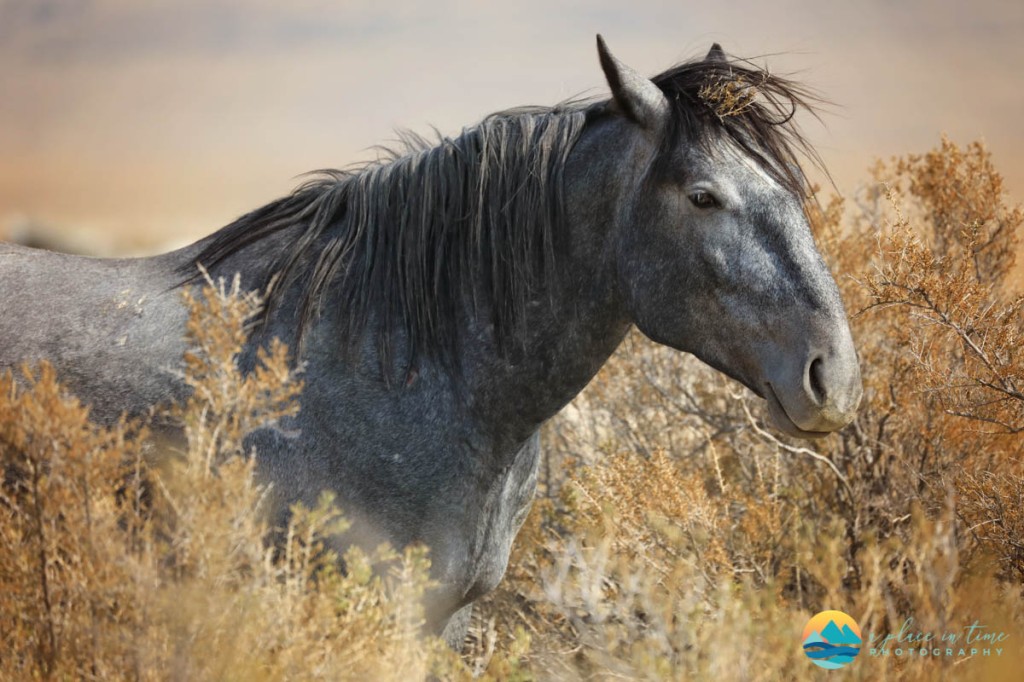
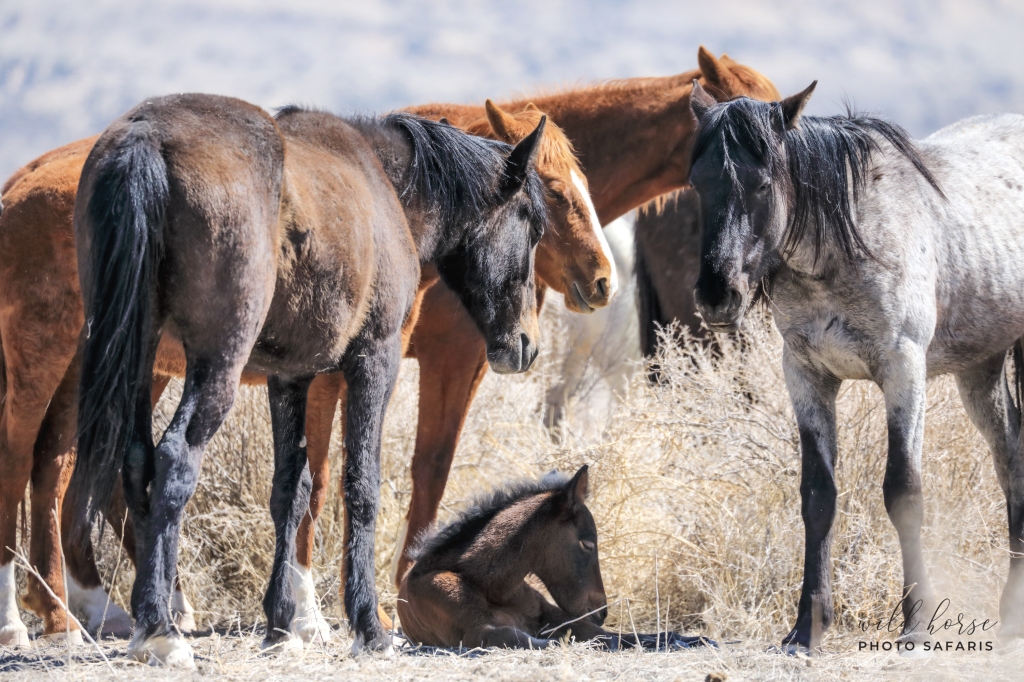
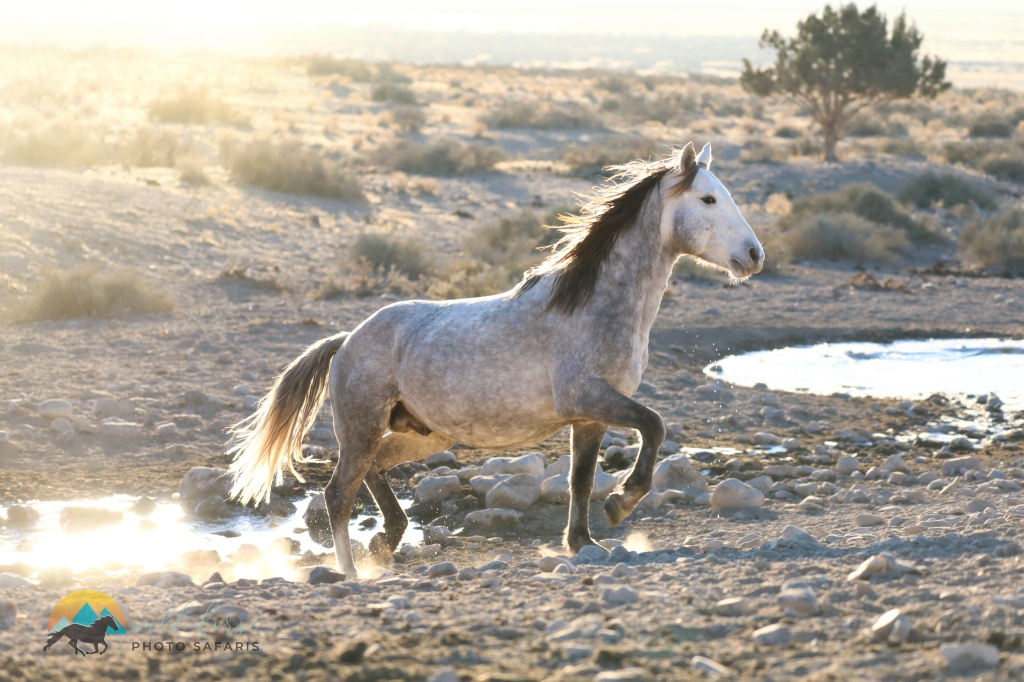
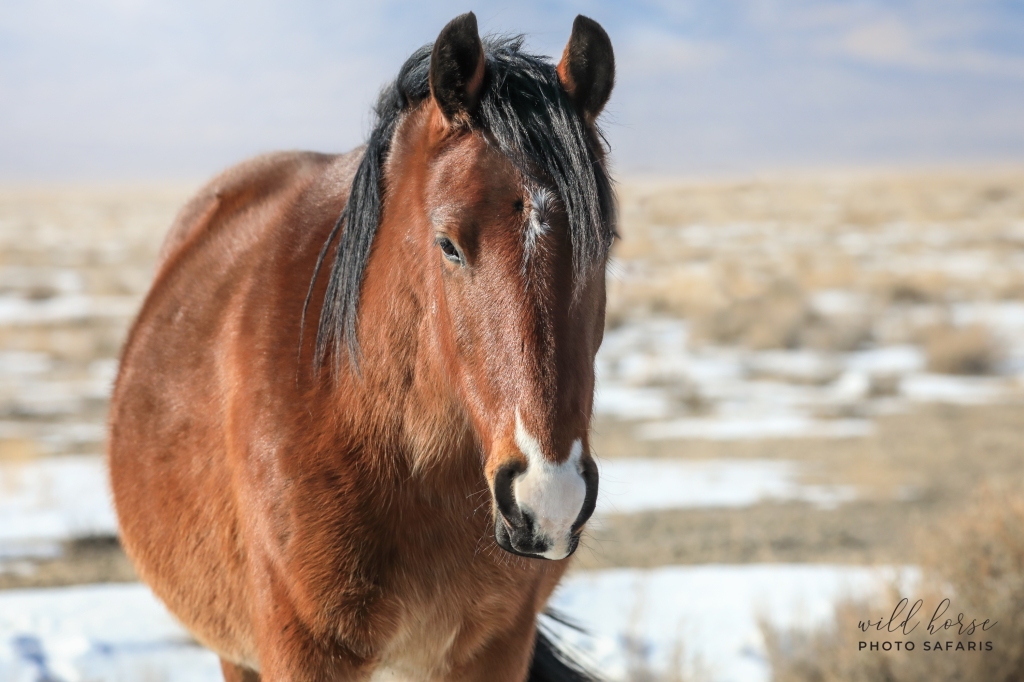
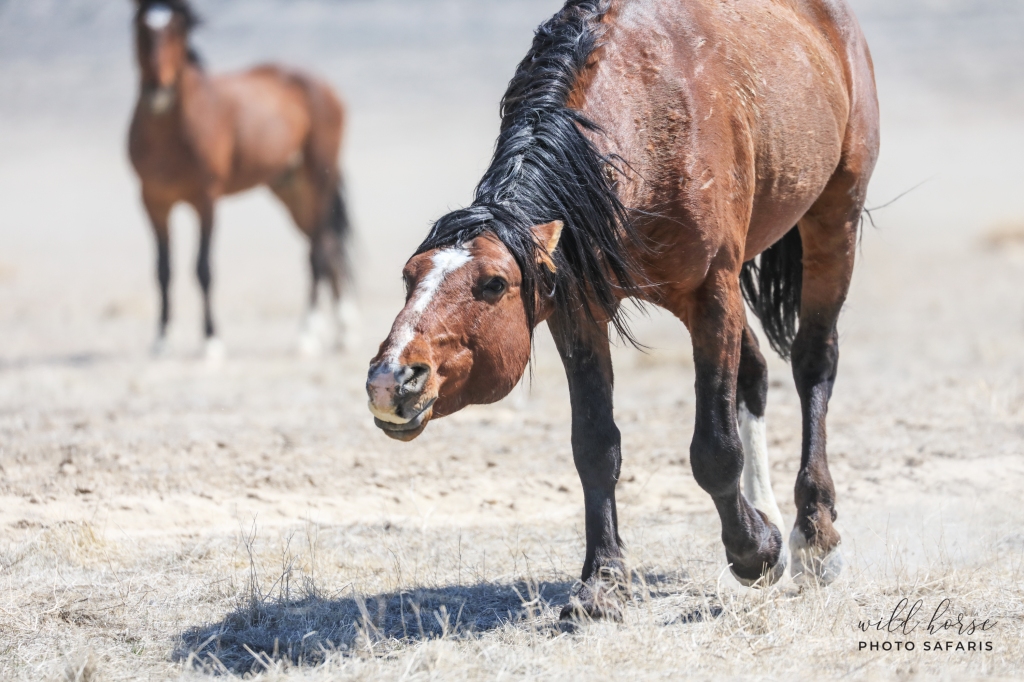
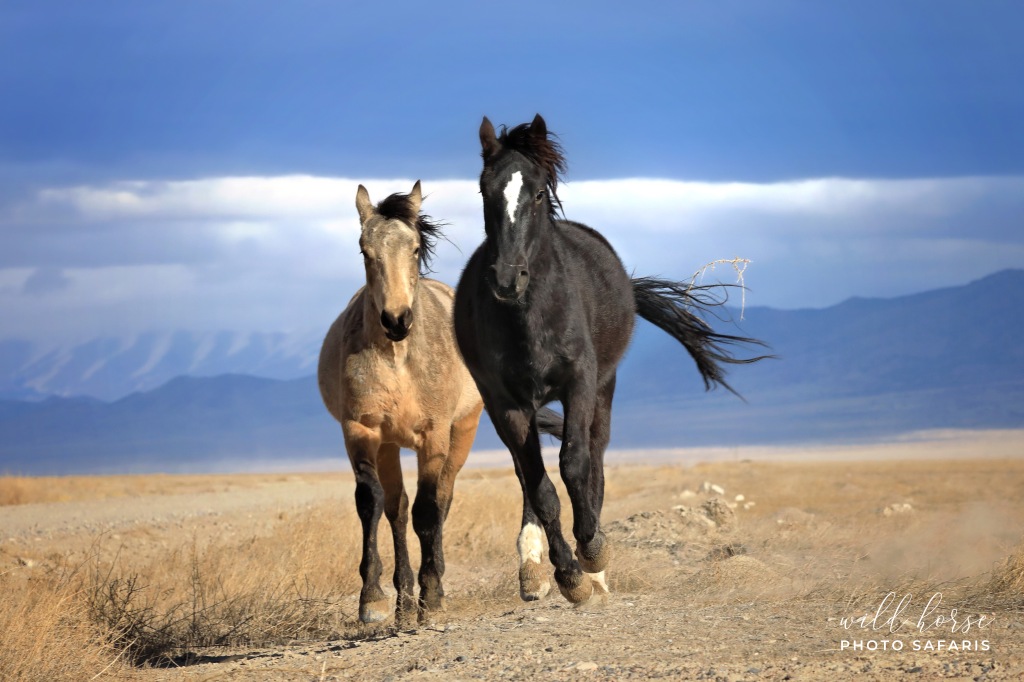
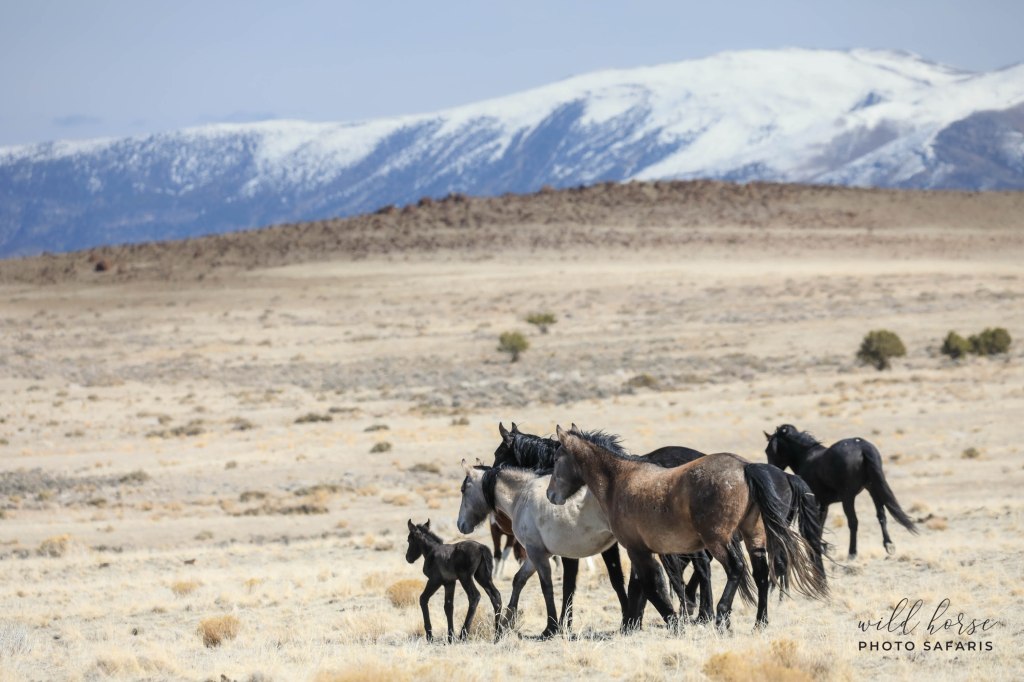
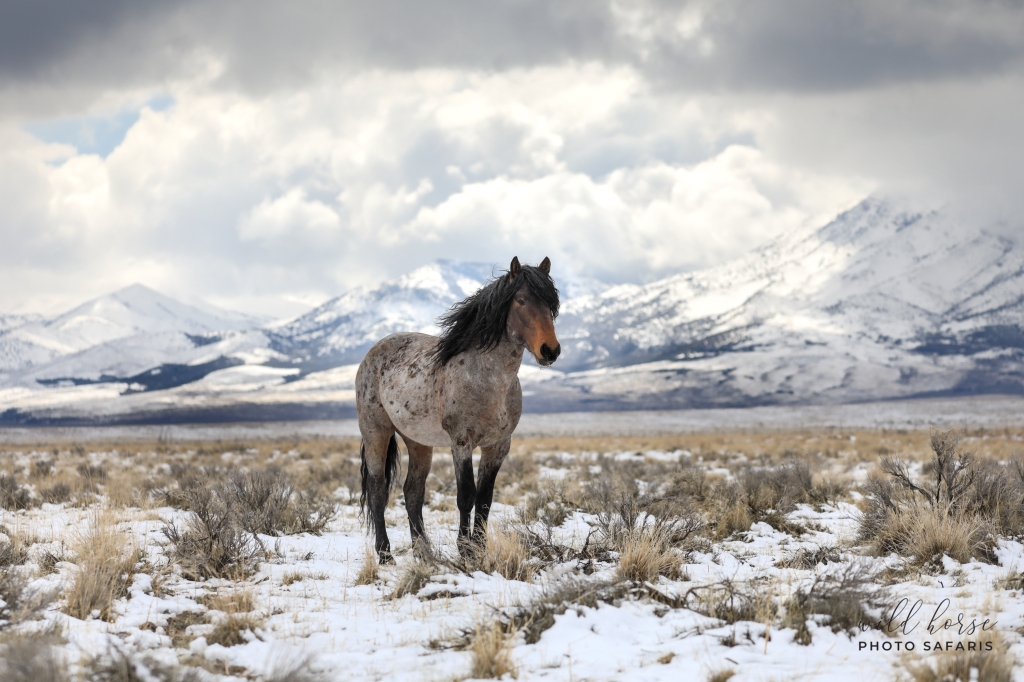
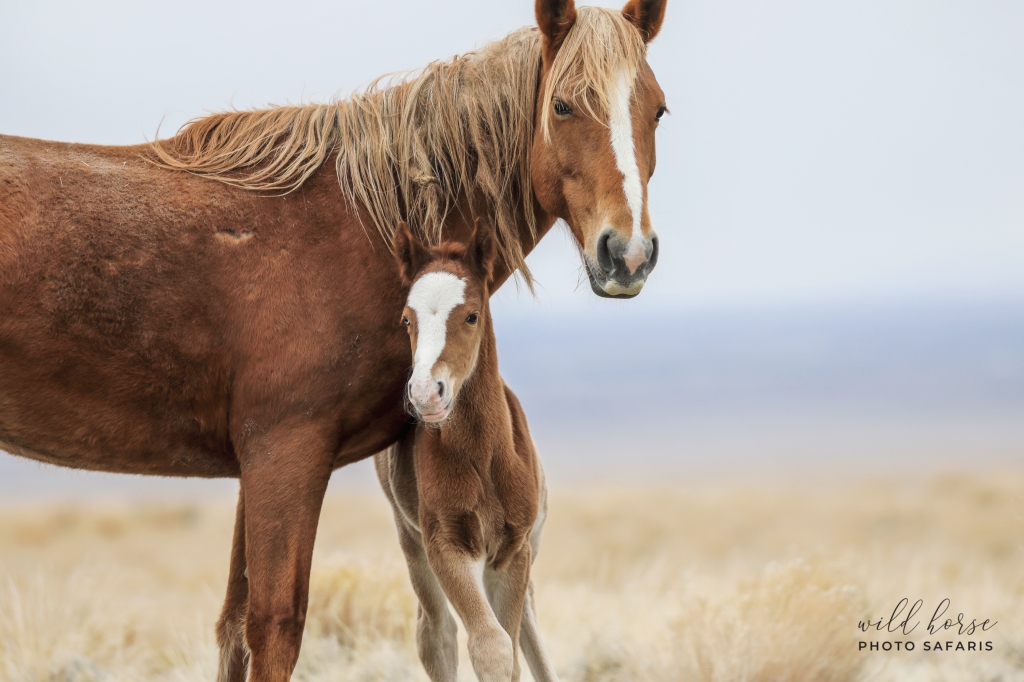
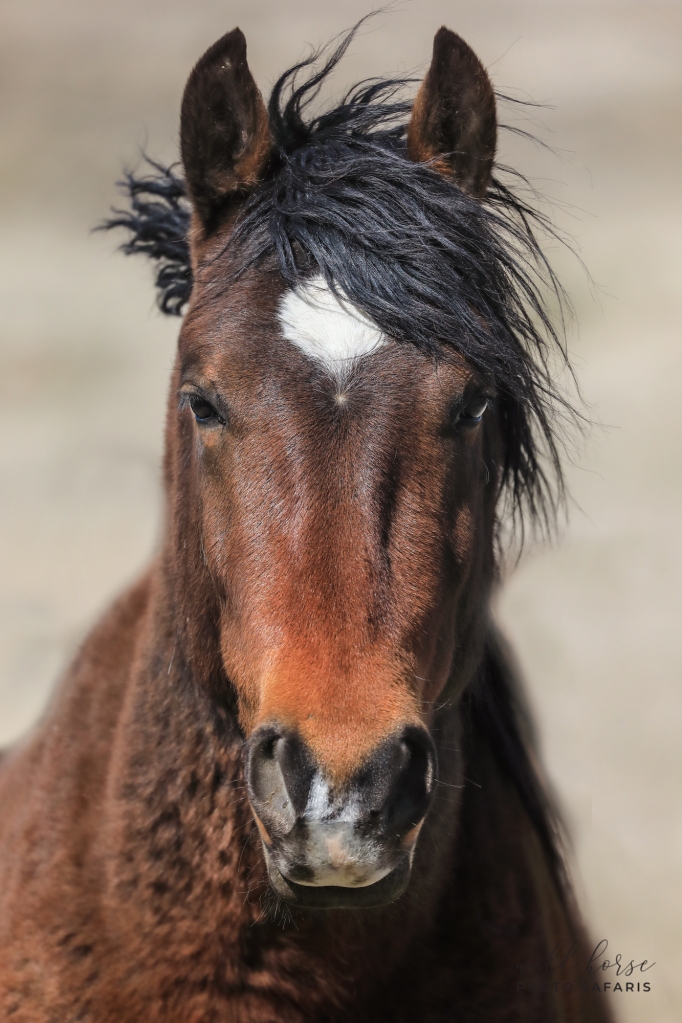
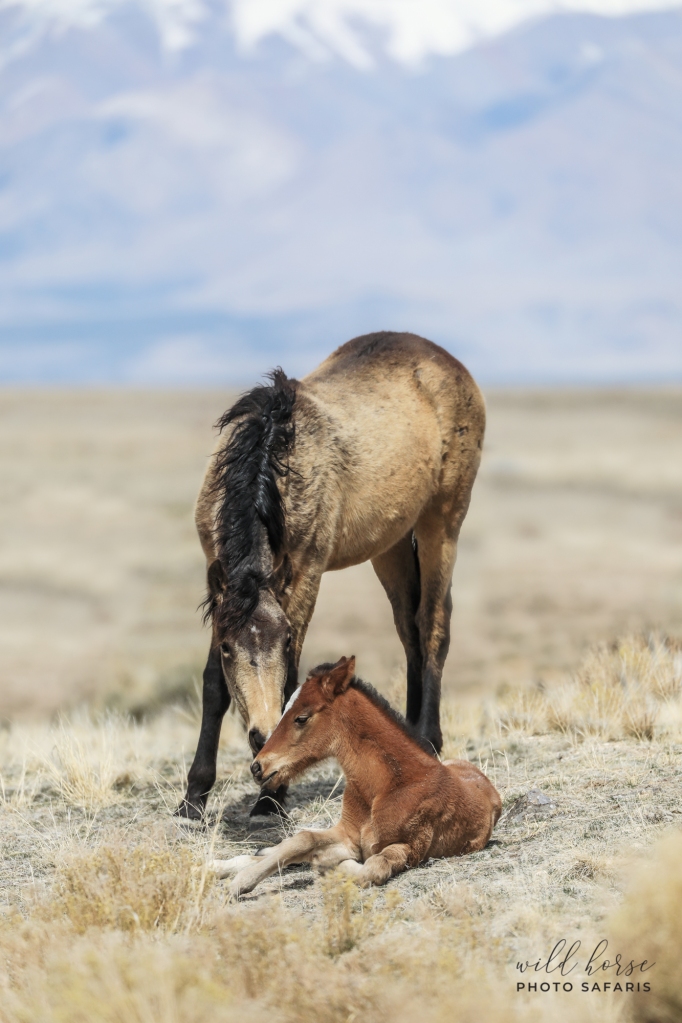
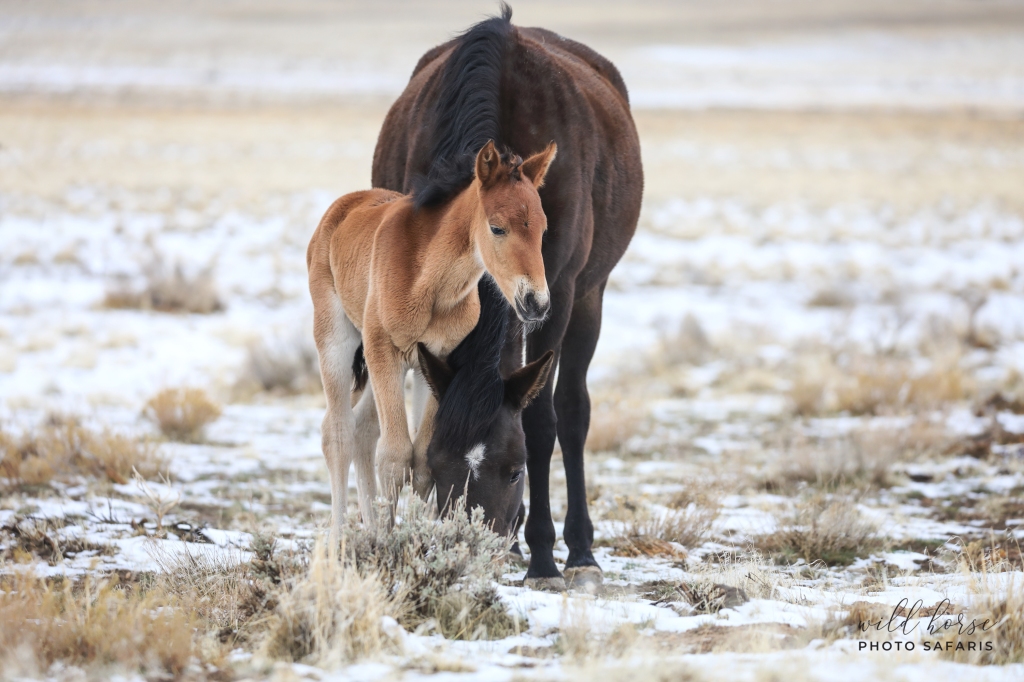
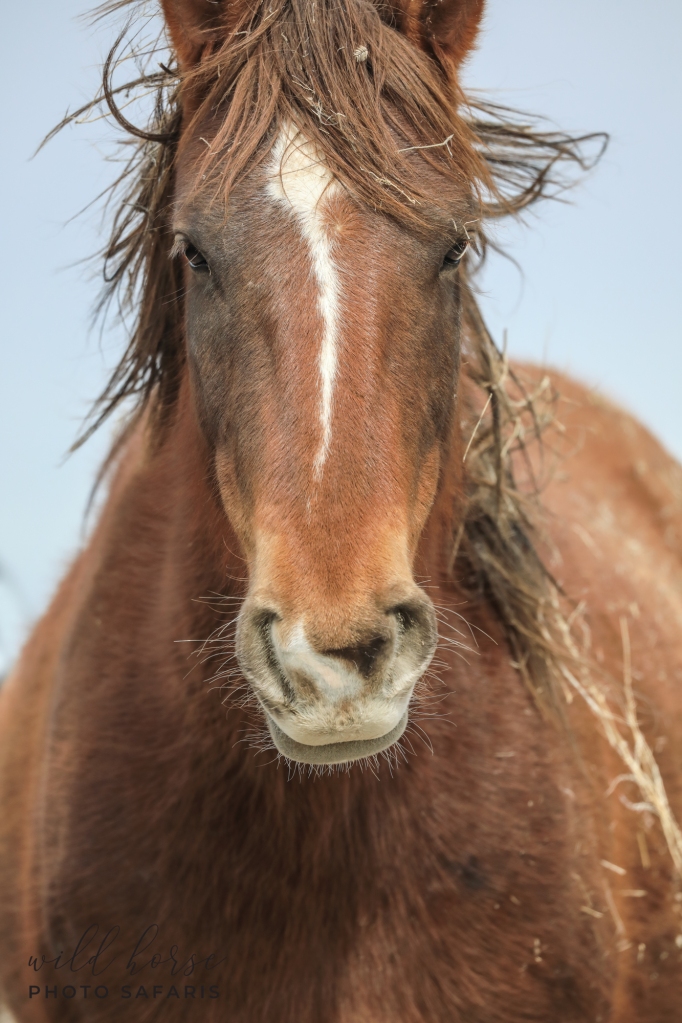
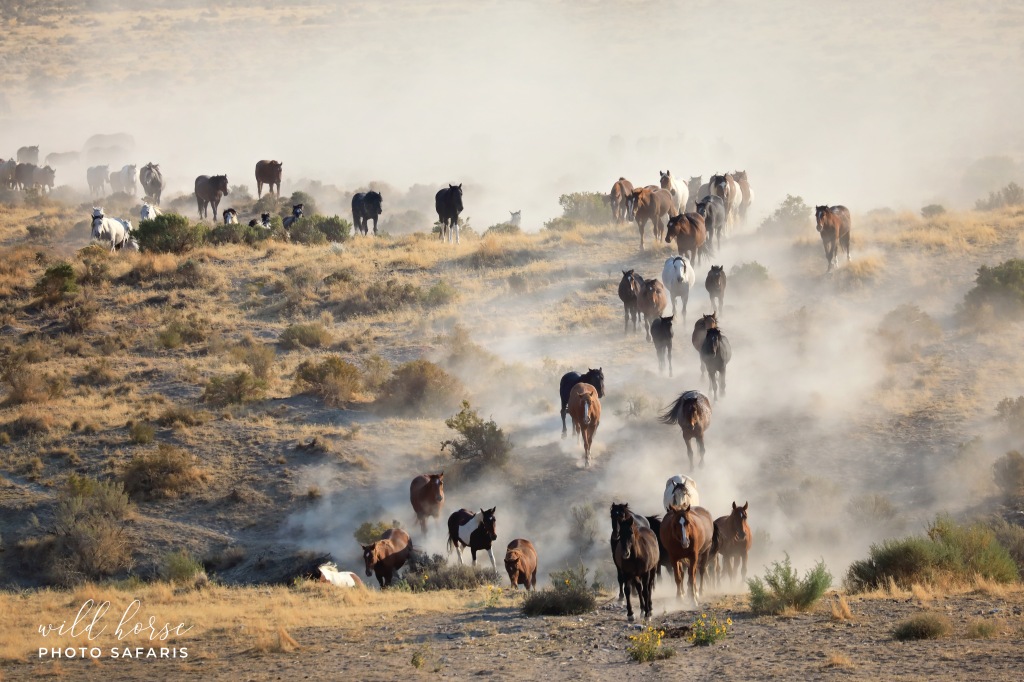
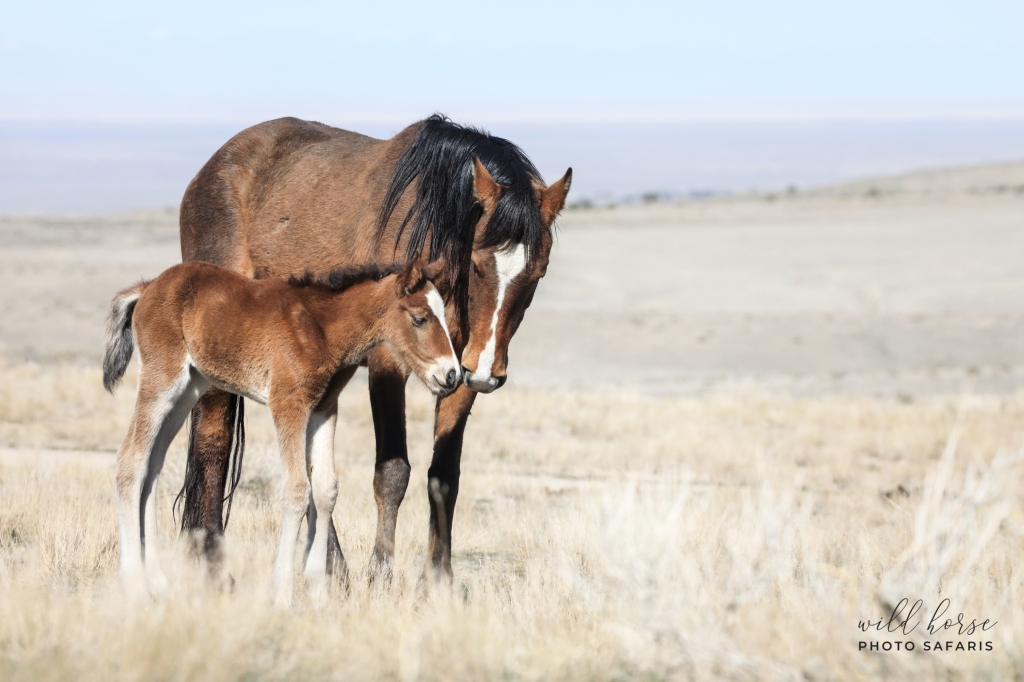
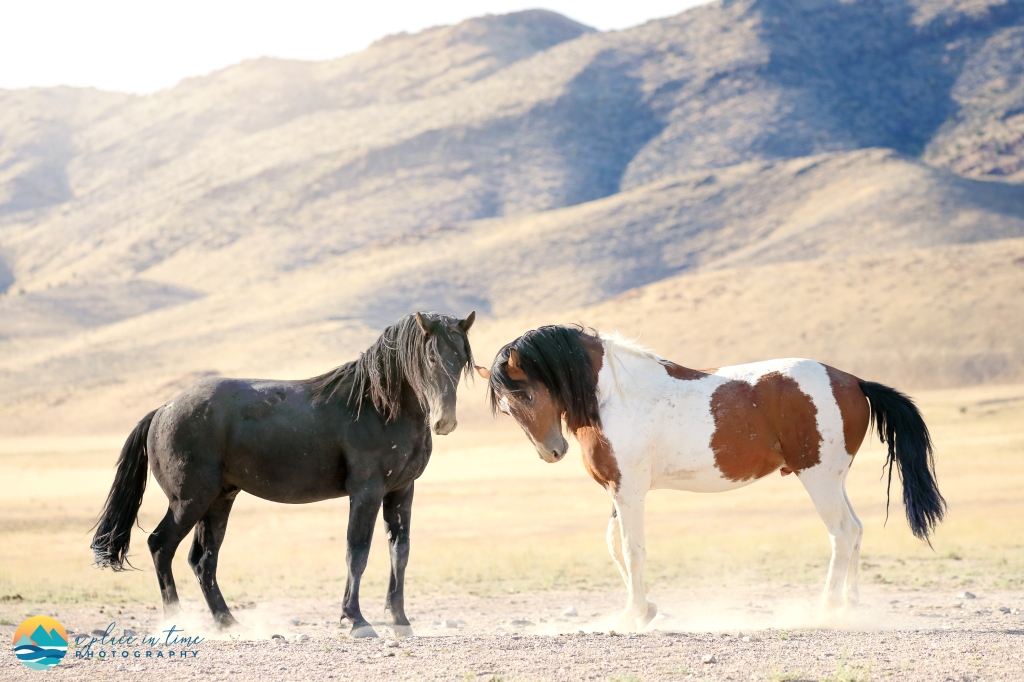
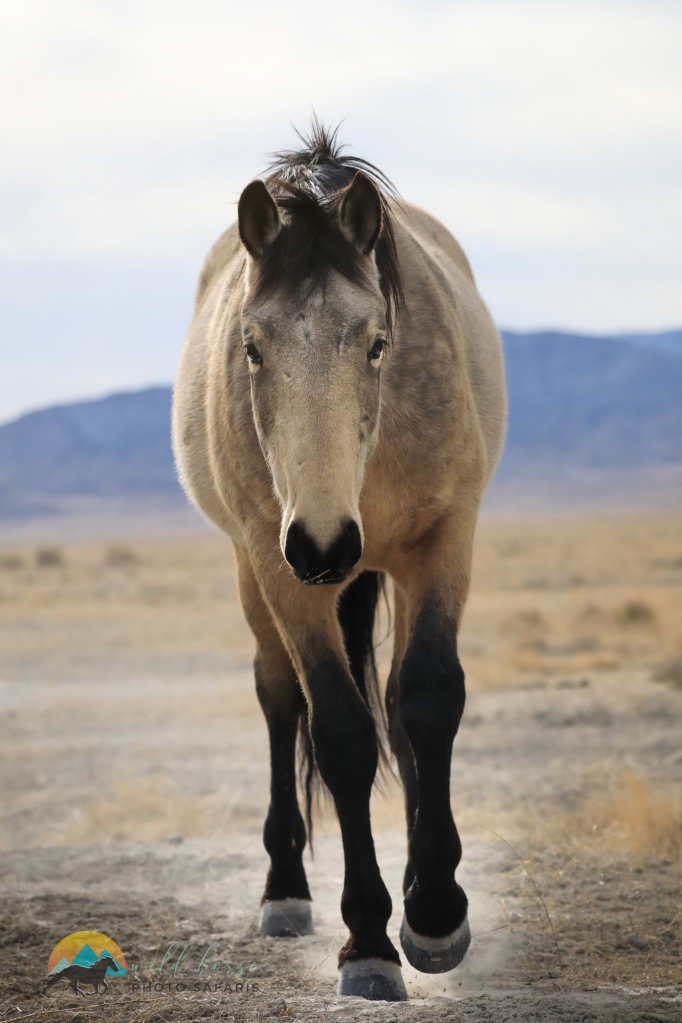
Who to contact & how you can help
In addition to contacting the Department of the Interior Directly, please see your support to the list of local elected officials below who can directly speak up for our Onaqui Wild Horses and their protection for living in the wild.
Deb Haaland Secretary of the Interior (202) 208-3100
Utah Senator Romney (202) 224-5251 or via email: https://www.romney.senate.gov/contact
District 2 State Representative Chris Stewart (202) 225-9730, (435) 364-5500 or (435) 627-1500 or via email https://stewart.house.gov/contact/
Tooele City Mayor Debbie Winn (435) 843-2104 dwinn@tooelecity.org
Tooele City Council Members:
- Justin Brady – jbrady@tooelecity.org
- Melodi Gochis – mgochis@tooelecity.org
- Tony Graf – tgraf@tooelecity.org
- Ed Hansen – ehansen@tooelecity.org
- Maresa Manzione – mmanzione@tooelecity.org
Tooele County Council Members:
- Scott Wardle – scottwardle2@gmail.com
- Kendall Thomas – kthomas@tooeleco.org
- Tye Hoffmann – tye.hoffmann5@gmail.com
- Jared Hammer – jaredcountycouncil@gmail.com
- Tom Tripp – ttripp@tooeleco.org
Salt Lake City Mayor Erin Mendenhall (801) 535-7704 mayor@slcgov.com
Salt Lake City Council (801) 535-7600 council.comments@slcgov.com
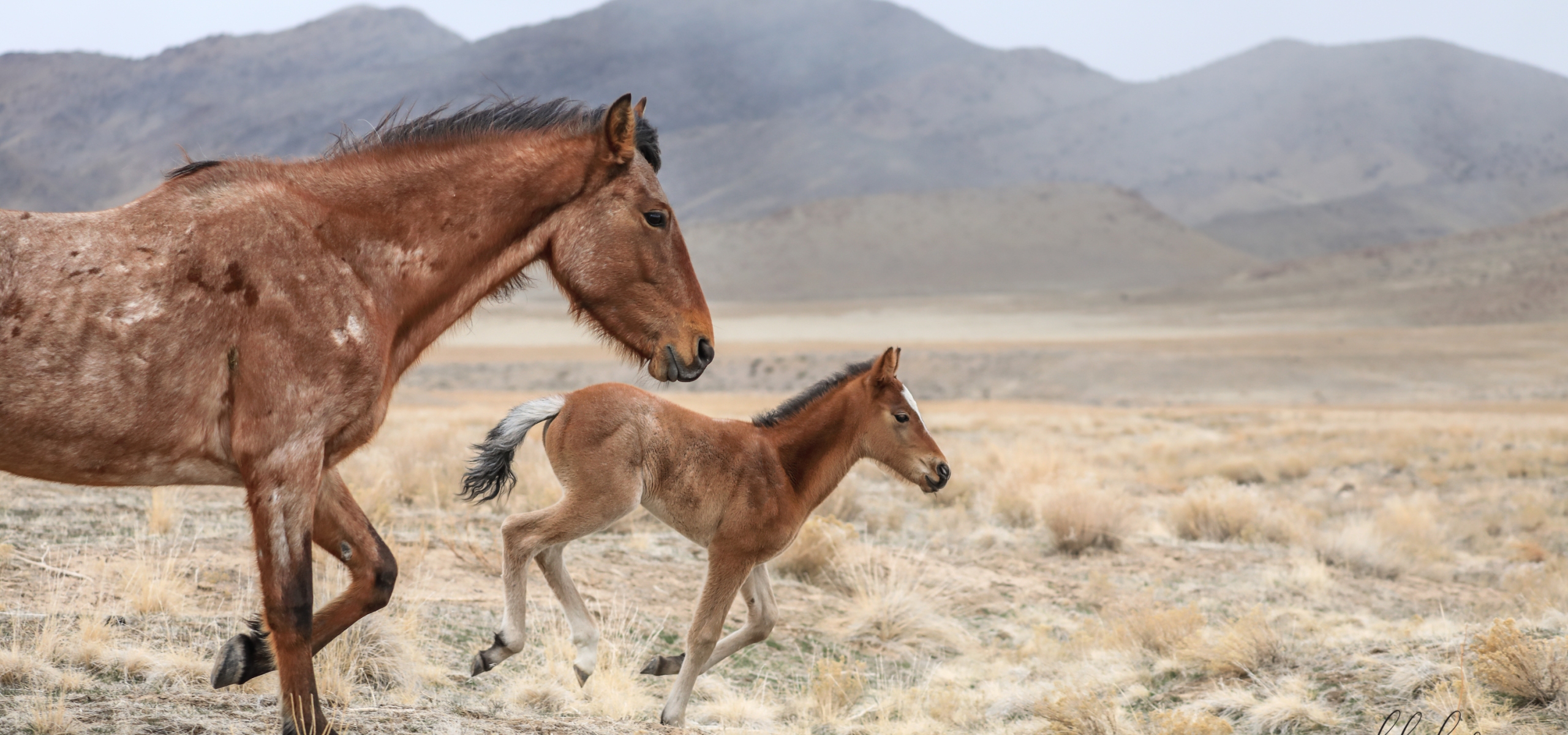
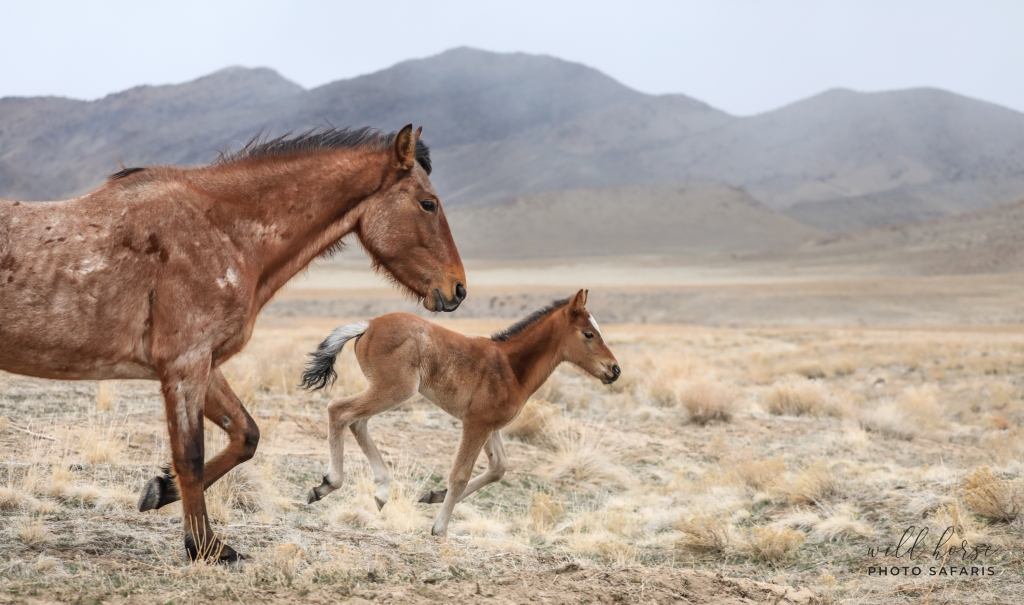
As of today there are 102 days left and counting before 400 of our Onaqui wild horses are removed from their home here in Utah’s west desert.
The Utah BLM estimates there to be a total herd population of 475 horses not including 2021 foals. This total encompasses the North herd, the South herd and horses which have wandered outside the HMA. It was once thought that only 50 horses was needed to maintain genetic diversity, however more recent studies have shown this number to be much higher. (read more details here) Assuming the current BLM population numbers to be correct, if 400 of 475 wild horses are removed that leaves 75 horses on the range for the HMAs 2 distinct herds: 37.5 horses for a north herd and 37.5 horses for a south herd.
BLM then plans on handpicking 104 horses based on age, gender and ease with which to dart with equine fertility control to subsequently return to the range. 52 horses for the north, 52 horses for the south and if equally divided in genders that’s 13 mares and 13 stallions to each group.
In a nutshell it can be assumed that after the July 2021 round-up is all said and done only 89 horses will be allowed to live in each section of the range respectively. That’s a dangerously low level of horses to maintain genetic variation, herd structure and contribute to the future health & viability of the herd.

Why remove so many?
- In laymen’s terms this is the number of horses (or burros) deemed appropriate to live on any federally managed HMA back in the 1970’s and 1980’s.
It all comes down to HMA (Herd Management Area) and what the BLM has determined to be the AML (Appropriate Management Level) for that HMA. The BLM is slated to remove thousands of horses and burros from public lands in the coming years based on a report submitted to congress at the end of 2020. That report recommends the removal of 20,000 wild horses and burros each year for 3.5 years from HMAs throughout the United States. A full copy of the report can be found here.
Where did the AMLs come from and how were they determined?
- In laymen’s terms they were randomly set when population numbers were nearing extinction and should be re-evaluated based on current and ongoing scientific studies.
With the enactment of the Wild Horse & Burro Act of 1971 the BLM was assigned with the task of establishing both a high and low population size deemed appropriate for each Herd Management Area. (https://www.nap.edu/read/13511/chapter/9#196).
Unfortunately all those years ago when setting the AML’s thorough scientific research wasn’t conducted and hence in recent years both the National Academy of Sciences (NAS) and the 10th circuit court have rendered them meaningless. The 2013 NAS report goes into detail stating that “The Wild Horses and Burros Management Handbook lacks the specificity necessary to guide managers adequately in establishing and adjusting appropriate management levels.” And further that “How AMLs are established, monitored, and adjusted is not transparent to stakeholders, supported by scientific information, or amenable to adaptation with new information and environmental and social change.”
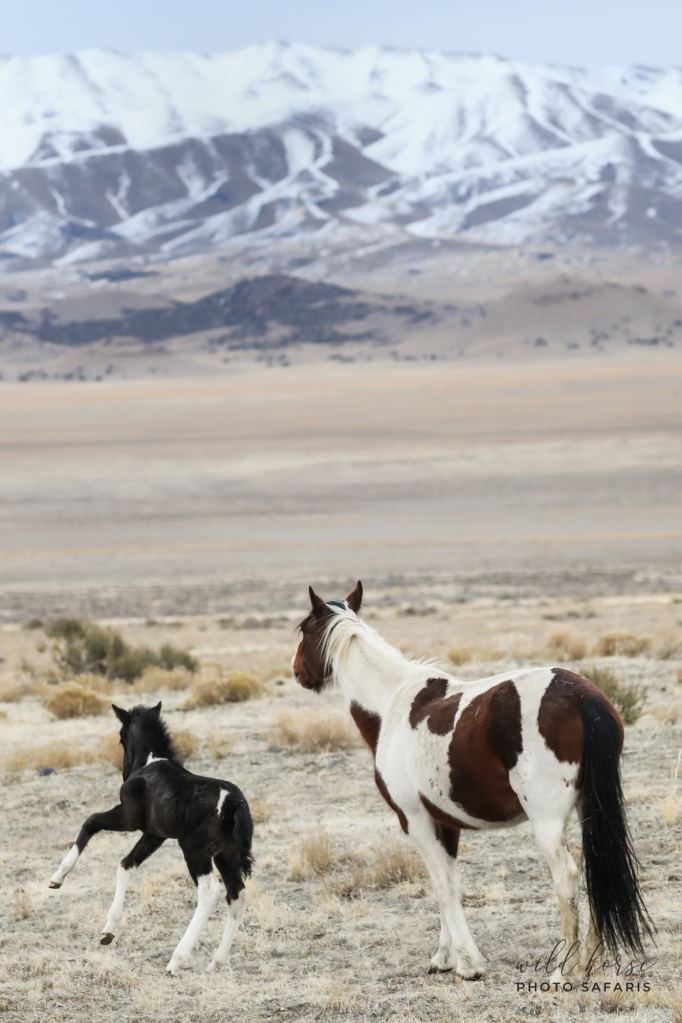
Can AMLs be changed?
- In laymen’s term = Yes.
In chapter 7 pages 223-257 of the NAS report it is recommended that “BLM should also develop approaches for quantitatively distinguishing horse or burro use from livestock and wildlife uses of forage, riparian areas, and other resources to verify utilization partitioning between livestock, horses, burrow, and other herbivores.” It goes on to state “… A scientific approach is needed to identify objectively the constraints on horse and burro population… The ecosystem might look different and function differently in the presence of more minimally managed equid populations from how it does with no or markedly reduced populations, but it may nevertheless be sustainable over time.”
This is in addition to their scientific finding that wild horse and burrow populations will self-limit over time as there is increased demand for forage and water and a reduced reproductive output of mares.
In 2016 the 10th Circuit Court of Appeals ruled in favor of the mustangs in the neighboring state of Wyoming. “The appellate court has clearly affirmed two important issues – first that wild horse populations in excess of the BLM’s arbitrarily established ‘appropriate’ management levels do not equate with overpopulation, and second that the BLM is not required to remove wild horses from the range even if it determines an overpopulation exists,” Eubanks continued. “Rather the agency has broad discretion to implement other management approaches, including implementation of fertility control to humanely reduce population growth rates and reduction in livestock grazing within HMAs.”
So should the Utah BLM be moving forward with an aggressive plan to remove between 1,100 to 1,200 more horses and burros from federal lands in 2021 in addition to the over 2,000 animals they already removed in 2020? If you’re using the comprehensive scientific data as they relate to these practices the answer would be No.
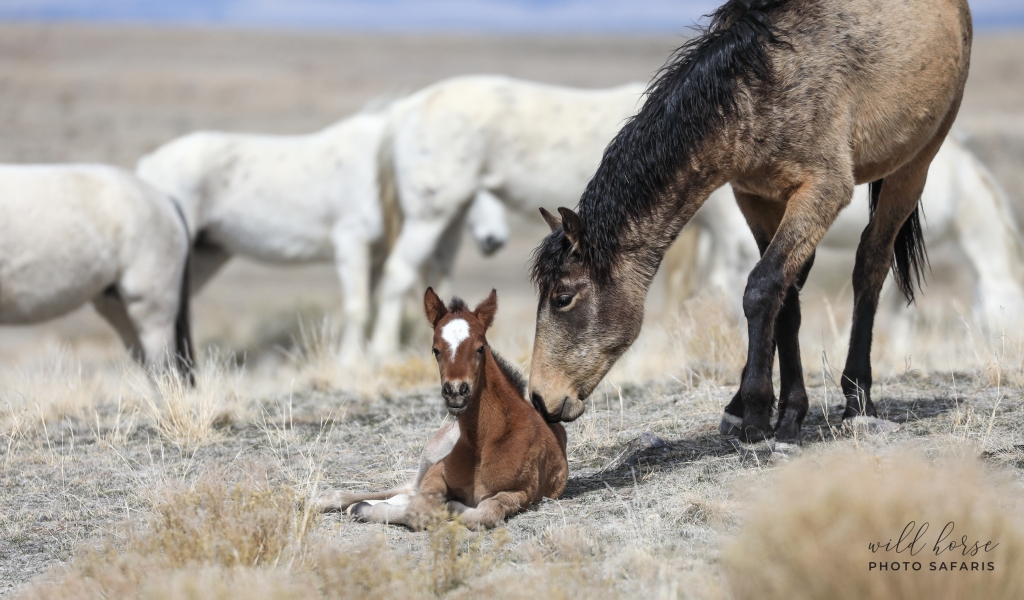
How does all this relate to the Onaqui?
The current AML for the Onaqui HMA is set at 121-210 horses for 240,153 acres.
Even at the high end that equates to over 1,000 acres per horse. In a recent form email I received from BLM regarding the upcoming round-up they state that there is only “a 5-10% increase in population per year.” This is a drastic difference when compared to the 20% population increase that Gus Warr, the head of Utah’s Wild Horse & Burro program, claimed as a justification for the July 2021 round-up in his live zoom meeting on March 2nd, 2021.
According to Mr. Warr the Utah BLM currently houses 5,500 horses in long-term off-range facilities. At a cost of $5/horse/day for housing that’s a total of $27,500 per day or $10,037,500 per year. Factor in the additional 2,000 horses Utah BLM plans to remove in 2021 that’s another $10,000 per day or $3,650,000 per year not including the cost of helicopters used in round-ups which run between $500-$800 PER HEAD.
- So for example the cost for the 2021 Onaqui Round up can be estimated to total between $200,000 and $320,000 just for the helicopters alone.
- The cost for rounding up the 5,500 head of horses that are already in holding facilities realistically cost taxpayers between $2,750,000 and $4,400,000.
That’s between three million and five million dollars spent to remove horses and burros who were previously living self-sustaining lives in the wild.
For more details on round-up costs, contracts and off-site holding facility costs click here.
If AML numbers can be adjusted and a scientific study can help to determine what current level of equid the HMAs can reasonably support then a moratorium should not only be put on the Onaqui roundup scheduled for July 2021, but the other roundups slated to place as well. This is something that our Department of the Interior and newly appointed Interior Secretary Deb Haaland has the ability to rectify – placing a moratorium on further removals until a science based approach is established and implemented.
In the interim another very viable and cost-effective solution to help maintain herd population growth in available in the form of an equine contraceptive known as PZP. PZP is a dart administered to mares in the range and proven to be between 95-98% effective at preventing pregnancy. Currently a PZP program is in place at the Onaqui HMA involving 24 trained volunteers and the cost per mare runs $30/year. This program just started in earnest in 2019 with the darting of 135 mares (91 in the north herd and 44 in the south) and subsequently 165 total mares darted in 2020.
This PZP darting program has proven very effective in both the McCullogh Peaks HMA and Virginia Range HMA but needs time to fully reach it’s potential. The Onaqui aren’t being given that time.
More information on PZP programs and funding can be found in my previous blog here.
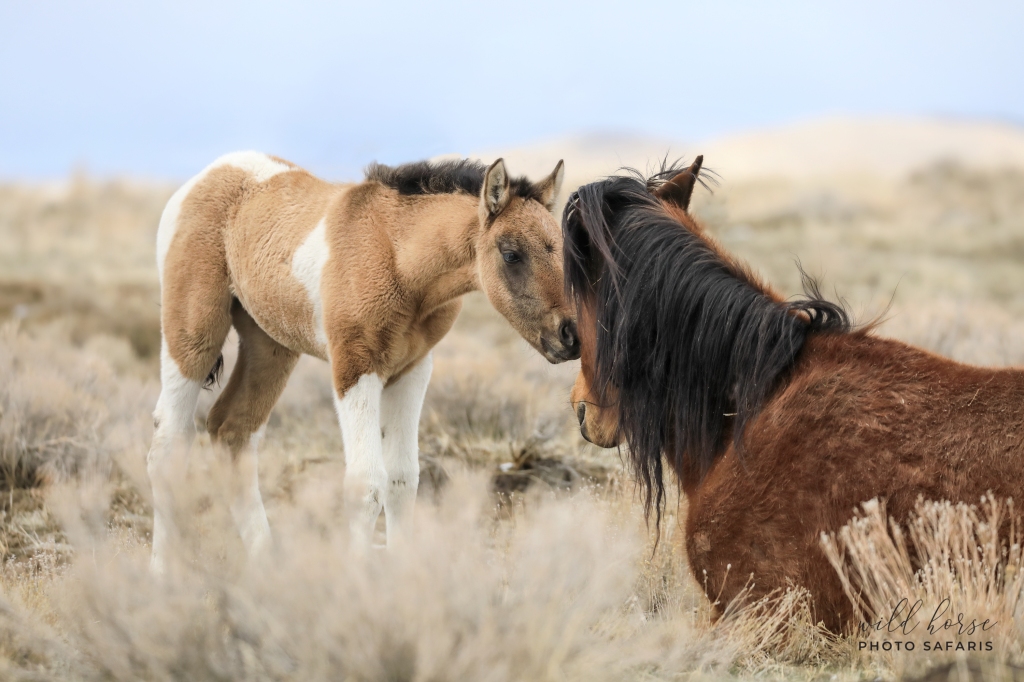
Local vs Federal Issue
There appears to be a broad level of misunderstanding as to who is responsible for the current levels of mismanagement of our wild horse and burro populations and who is responsible for rectifying this. Can the Department of the Interior step in and place a moratorium on “gathers” until the scientifically flawed management policies and procedures are rectified? Absolutely. Can oversight hearings be scheduled to delve into the BLMs Wild Horse and Burro program to allow for science-based application and implantation? Yes.
But this does not excuse the lack of investigation, intervention and action by local officials including City Council, County Council, Mayor, House of Representatives and Senators. These local officials have the ability to protect our cities, counties, communities and the valuable resources that fall within. The Onaqui wild horses being one of them. The Onaqui are considered to be one of the most accessible and photographed while horse herds in the world. They are loved by countless people both locally and world-wide. People from far reaches have visited our small rural communities bringing with them their business for our local hotels, local restaurants, local gas stations and local small businesses.
The Onaqui are worth far more to this rural community and beautiful state in the wild than they are being housed in captive pens at the expense to tax payers. We are in a unique position to profit locally from these beautiful animals instead of having them viewed as a burden and an expense. And our local leaders are the perfect ones to make their voices herd. They have the ability to directly contact Senator Romney, who in turn can appeal to the Secretary of the Interior to place a stay on any future removal of the Onaqui horses (and others) until sound scientific studies have been received, AMLs adjusted accordingly and detailed local BLM management guides established.
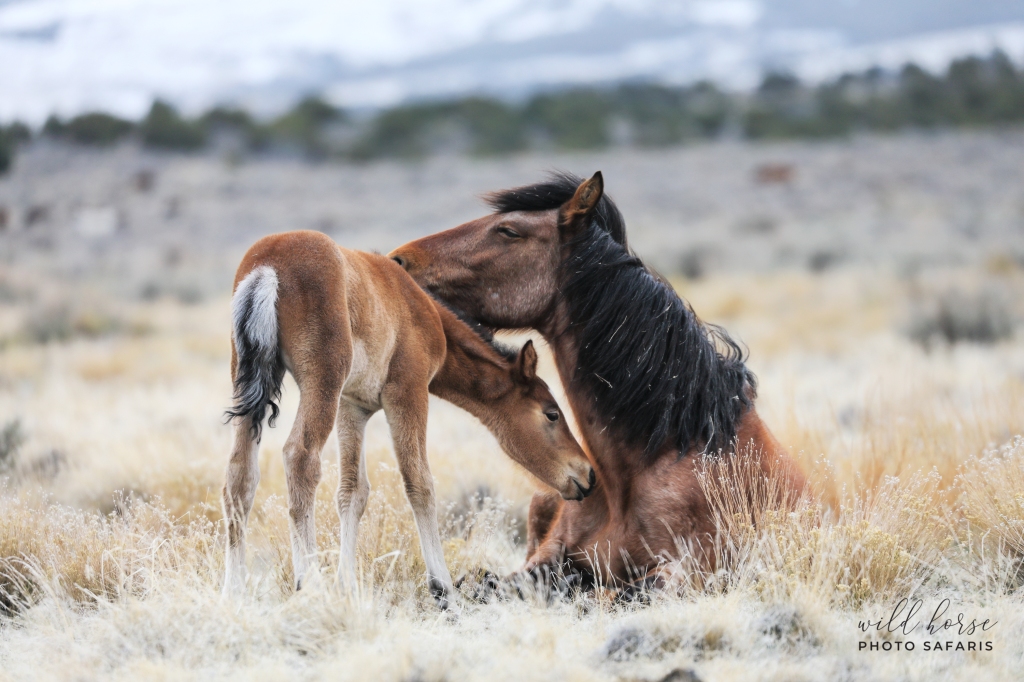
Who to contact & how you can help
In addition to contacting the Department of the Interior Directly, please see your support to the list of local elected officials below who can directly speak up for our Onaqui Wild Horses and their protection for living in the wild.
Utah Senator Romney (202) 224-5251 or via email: https://www.romney.senate.gov/contact
District 2 State Representative Chris Stewart (202) 225-9730, (435) 364-5500 or (435) 627-1500 or via email https://stewart.house.gov/contact/
Tooele City Mayor Debbie Winn (435) 843-2104 dwinn@tooelecity.org
Tooele City Council Members:
- Justin Brady – jbrady@tooelecity.org
- Melodi Gochis – mgochis@tooelecity.org
- Tony Graf – tgraf@tooelecity.org
- Ed Hansen – ehansen@tooelecity.org
- Maresa Manzione – mmanzione@tooelecity.org
Tooele County Council Members:
- Scott Wardle – scottwardle2@gmail.com
- Kendall Thomas – kthomas@tooeleco.org
- Tye Hoffmann – tye.hoffmann5@gmail.com
- Jared Hammer – jaredcountycouncil@gmail.com
- Tom Tripp – ttripp@tooeleco.org
Salt Lake City Mayor Erin Mendenhall (801) 535-7704 mayor@slcgov.com
Salt Lake City Council (801) 535-7600 council.comments@slcgov.com
For a complete list of the NAS review Key Findings click here: https://wildhorseeducation.org/2021/03/02/lets-talk-nas-reviewblm-report/
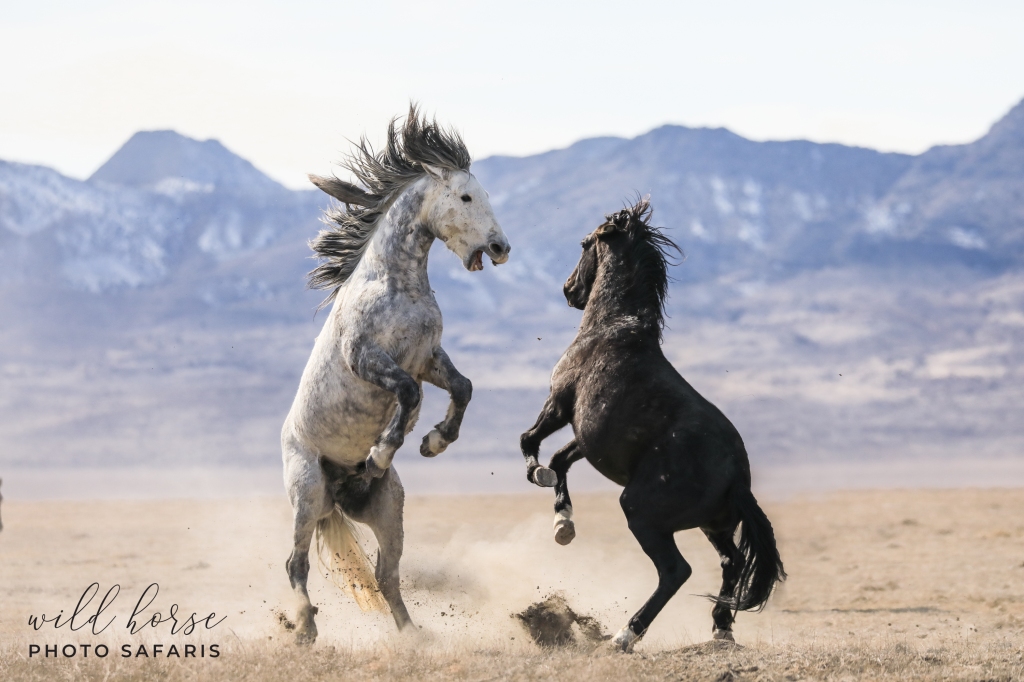
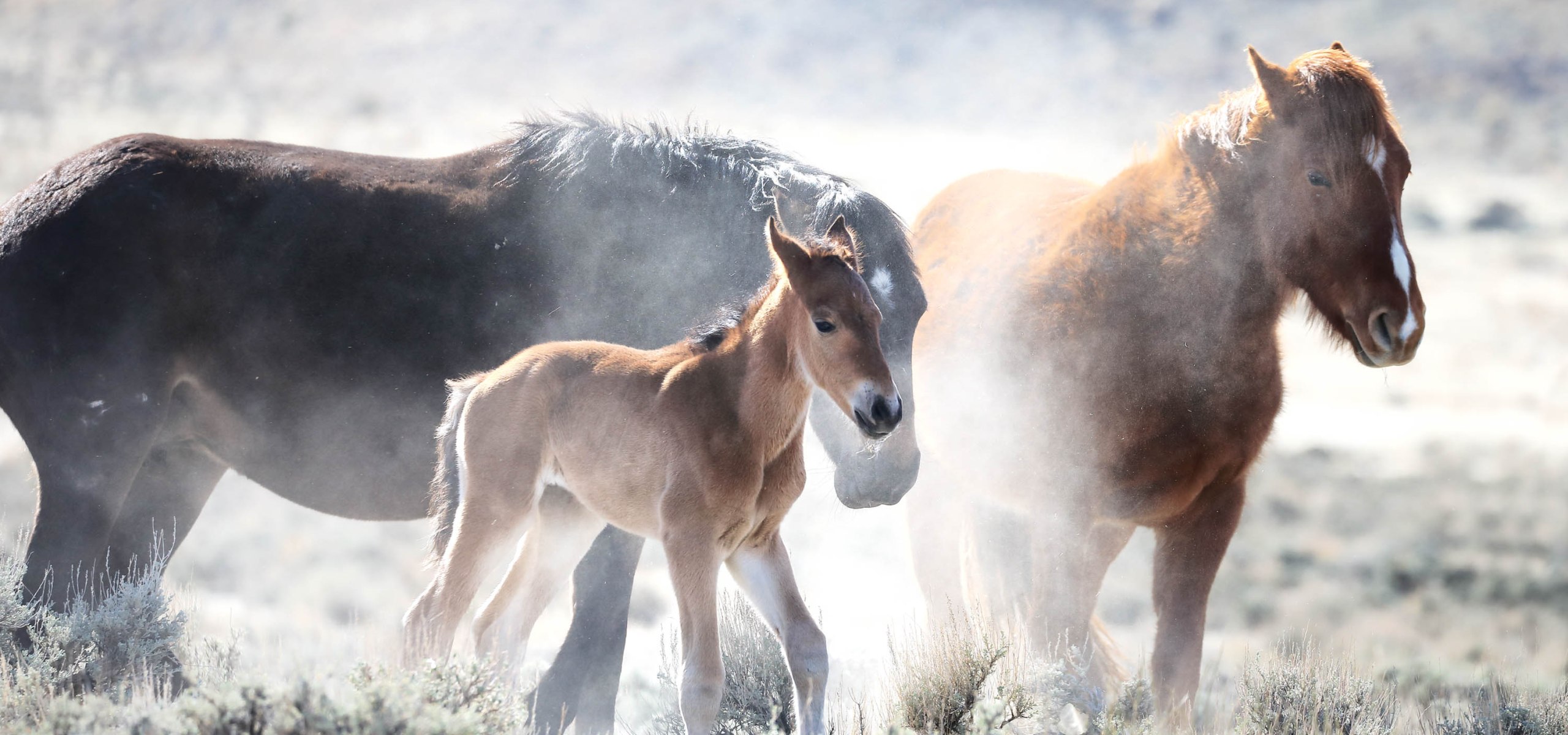
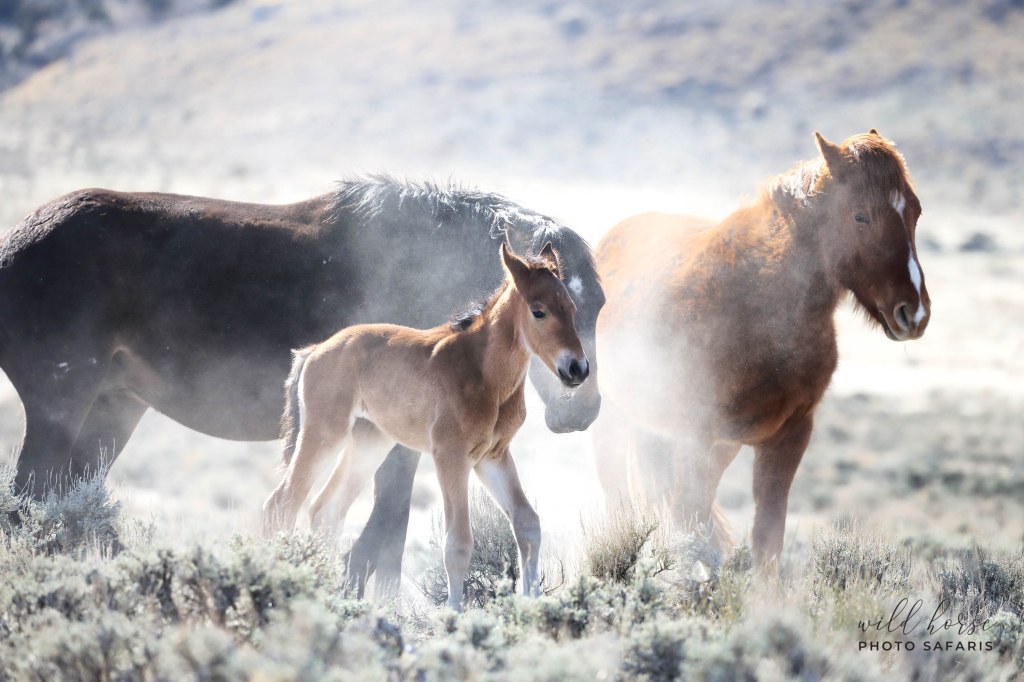
One of the things I love most about my visits to the range is that they are always different. Trying to understand all of the complex social and ecological dynamics for both the north and south Onaqui herds is honestly fascinating to me. It’s like its own little horse soap opera and I find myself getting sucked in to it hook line and sinker. For years the Onaqui have been one of the most photographed herds in the world and it’s very easy to see why.
Last week I was fortunate enough to be on the range for extended days with a wonderful tour guest who drove all the way from Texas to spend time with the herd after receiving news of the BLM’s announcement to round-up and remove 80% of them this coming July. All our fingers are crossed that the Utah BLM will ultimately make the right decision and opt to forgo this round-up for a more humane method of population control such as equine fertility treatment known as PZP which has been proven to be 95-98% effective. (Much more information is available about this alternative method by clicking here)
However in the meantime local and out of state visitors alike are making the pilgrimage out the Onaqui HMA to spend whatever time they can with this cherished herd.
The day started out with a beautiful pastel sunset sprinkled among hazy scattered clouds and we managed to find the majority of the north herd on the mountainside peacefully grazing as the sun slowly emerged. After a lovely 6 hours on the mountain we then ventured south where we were able to locate the rest of the north herd and eventually some special members of the south herd just past Simpsons Springs. The decision was made to return to our starting point for sunset and so the drive back to Davis mountain began.
We’d only been there for a few minutes when I noticed some odd behavior in a band a couple hundred yards away. The lead roan stallion Dude was on high alert and was chasing after any horse within a couple hundred yards and there was another black stallion who was also being unusually vigilant. He was both acting aggressively towards Dude and also to any other interlopers who had the misfortune of grazing too close. With these stallions swirling in circles then stopping to guard the rest of the group they definitely got my attention.
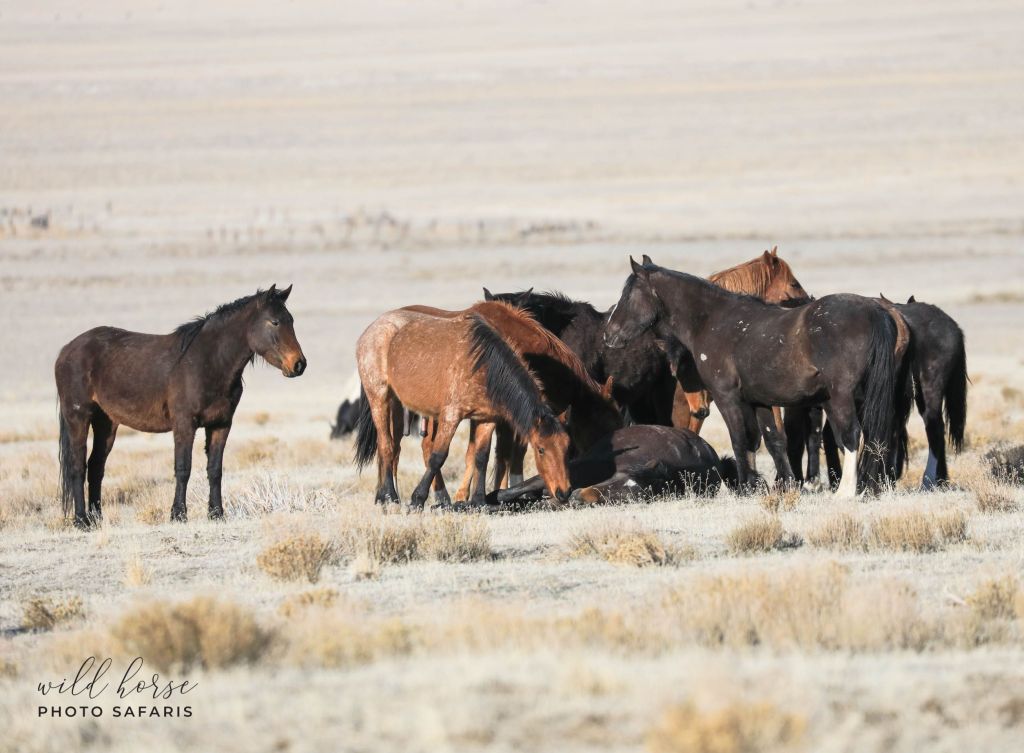
The more I watched I saw that the rest of the band had formed a very tight circle and were clustered together so closely it was difficult to distinguish one from another. I have seen them position themselves in tight groups before when the winds start howling or when shielding small foals from the sun, but never to this extent. The more I watched the more the overall behavior didn’t make any sense….. until it did.
I had a hunch that a mare was giving birth and the rest of the band had surrounded her to protect her. Separating themselves by quite a distance from the majority of the norther herd.
I slowly began my decent down the hill to a spot where I could get a better view through my camera lens careful not to get too close and upset the agitated stallions even more. Sure enough as the scene began unfolding clearly through the lens I saw a bay mare lying on her left side surrounded by the other horses. She raised her head and looked to be straining as a young stallion of 2 years old nuzzled her softly. Another young mare stood at her shoulder gently placing her hoof on her shoulder repeatedly in an attempt to give comfort.
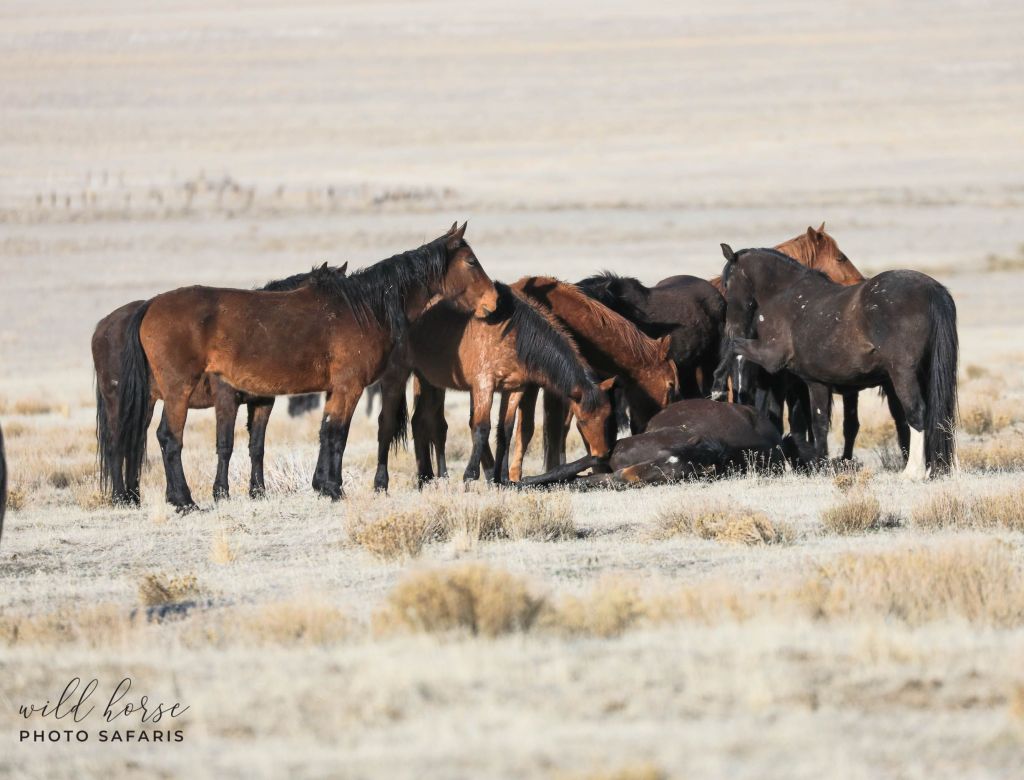
At one point the mare began trying to stand, but just as quickly as she started to rise she was back down on her side again with her team of nanny’s continuing to protect and soothe. 10-15 minutes of labor passed and a brand new little Onaqui was welcomed into the world. The whitish blue blob was the first thing I saw – this baby still covered in the amniotic sac. The aunties immediately set about removing this and before I knew it the mare was also up and on her feet.
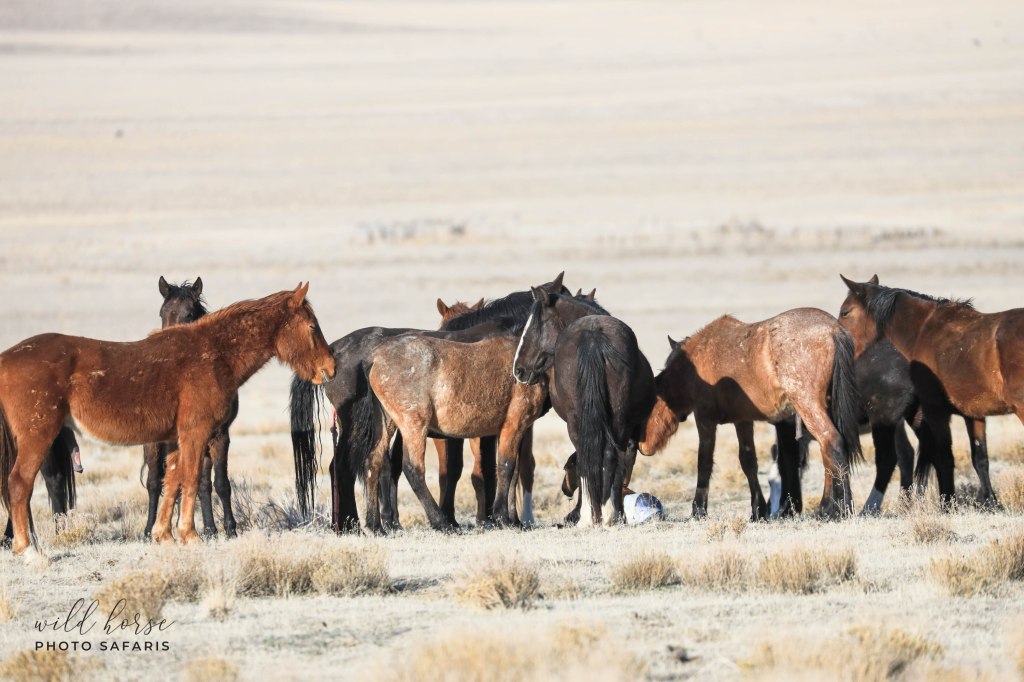
The band remained close and the stallions ever so vigilant while the foal was cleaned and momma began gently nuzzling him and tapping him with her front hoof to encourage him to rise. His fur was soaking wet and filled with texture and I could just make out the little tips of his ears still bent from being tucked in the womb for the last 11 months.
Slowly I backed away and returned up the hill to the rest of the herd to give this new family time to adjust. The last thing I saw as we returned home for the evening was the new little colt with his head raised taking in his very first views of his new world and making unsuccessful attempts to learn how to use his new legs.
Leaving them at sunset was bittersweet, but I remained hopeful that I would find them again once morning came and learn if we had gotten a new little colt or filly and see how it has done through the night.
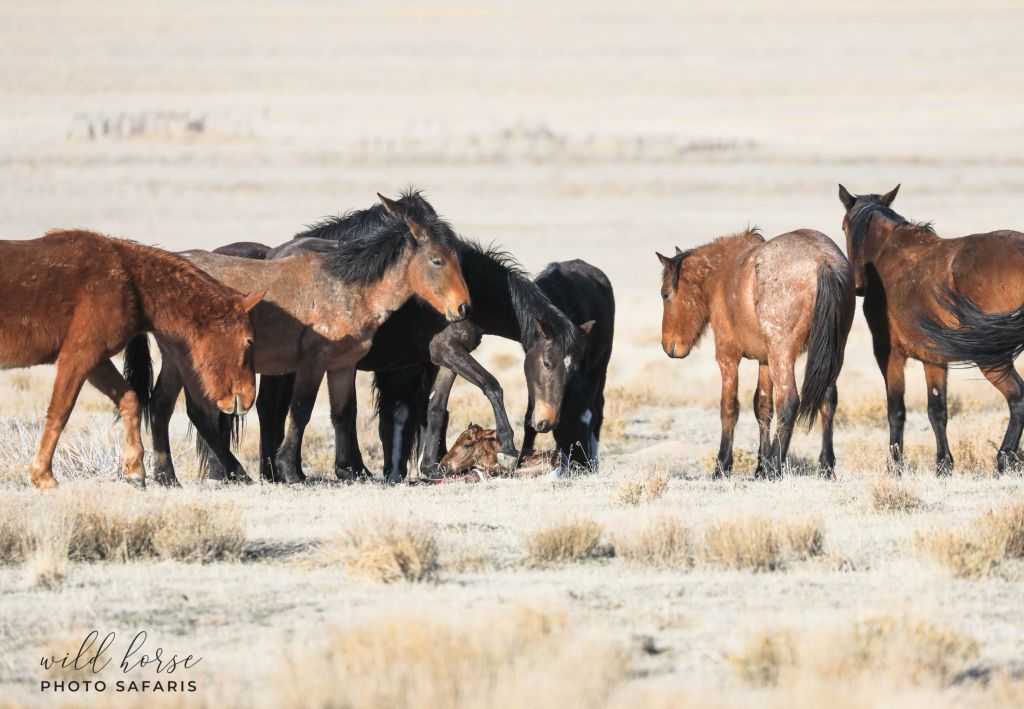
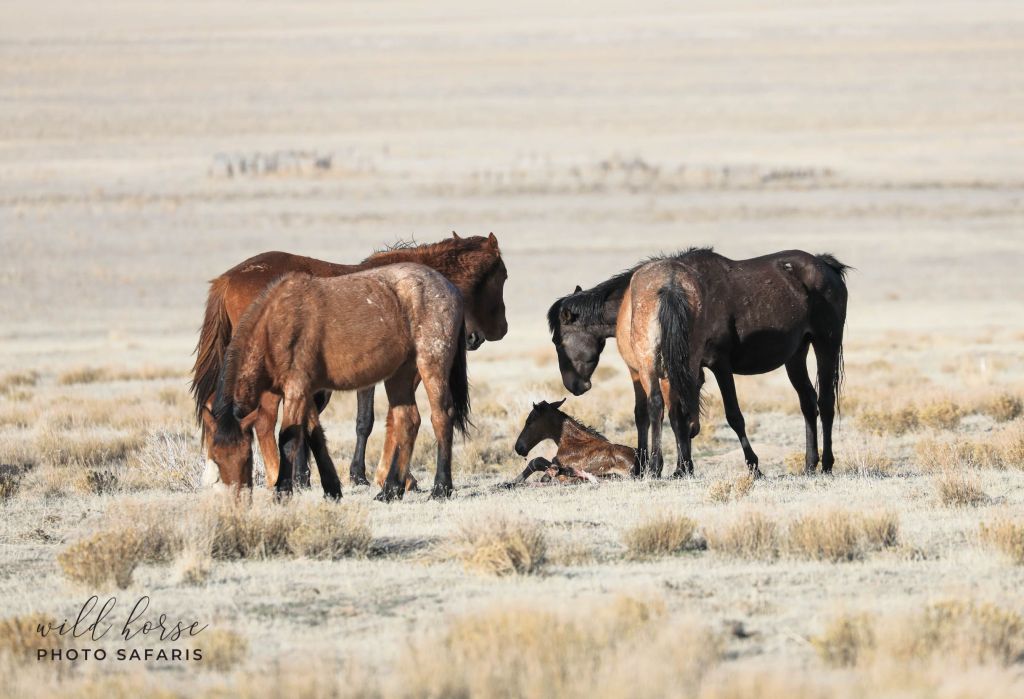
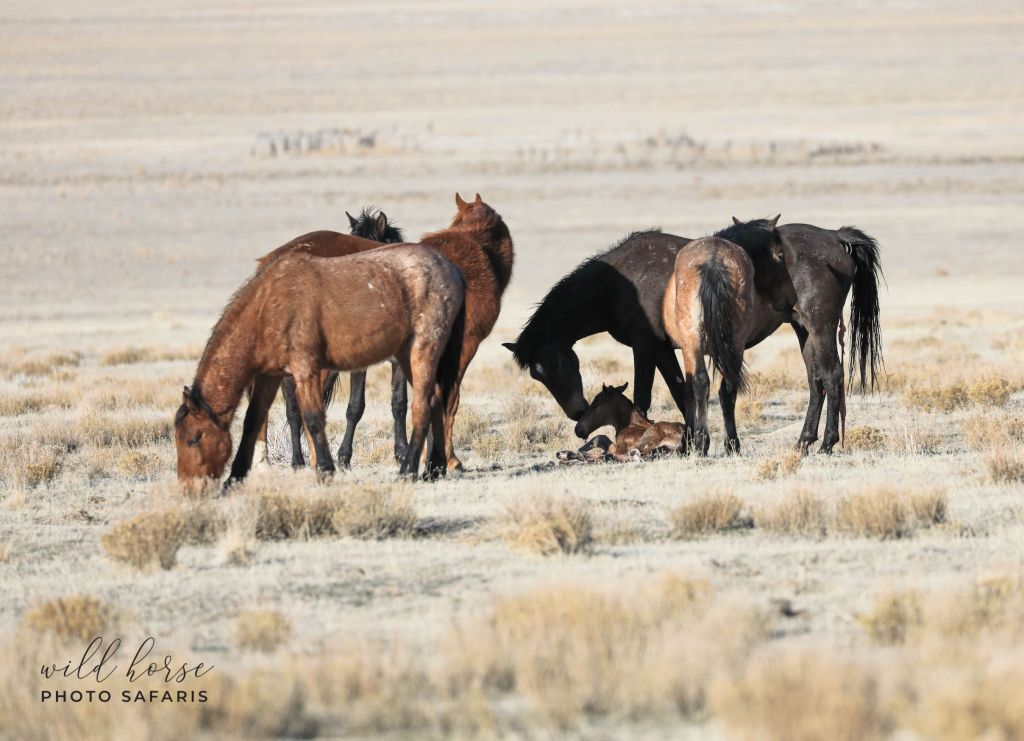
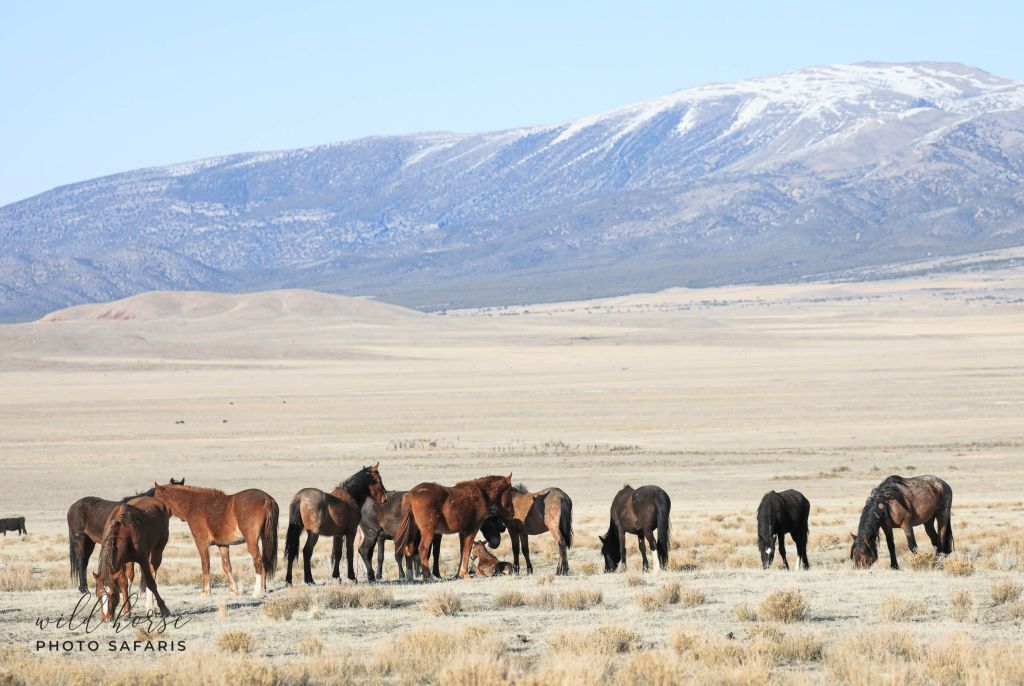
As luck would have it very early the following morning after some quality time looking through the binoculars I was able to spot the family high up on the side of a mountain. For a while I wasn’t able to locate the foal and my anxiety levels were rising by the minute. However as luck would have it he had just been resting and popped up out of the grass to follow mom and the rest of the band as they descended down the mountain towards a watering hole about a mile away.
Patience paid off and we took a seat in the open field and waited quietly as Dude brought his band slowly and methodically down the hillside. They then proceeded to stroll by us headed for a much needed drink. After milling about at the waterhole the group then followed the same path back through the field where we remained and began grazing a short distance away.
While we watched the new little colt affectionately nicknamed “Quinn” (OQ372brS) nursing from mom (mare OQ354bM) and taking in views of his new world. This beautiful little fella should grow up to be a strong, healthy, wild bay roan just like Dude (OQ80brS) and within 24 hours of being born was already quick on his feet, curious and able to climb mountains with the rest of the band.
I am so grateful that not only was I able to witness such a unique and special moment for these wild ones, but I’m grateful to be able to share that with a guest who loves the horses as much as I do. And I’m also grateful that the Onaqui in particular are so gracious in allowing us humans into their lives and families to further understand and appreciate all that they are and all that they have to offer.
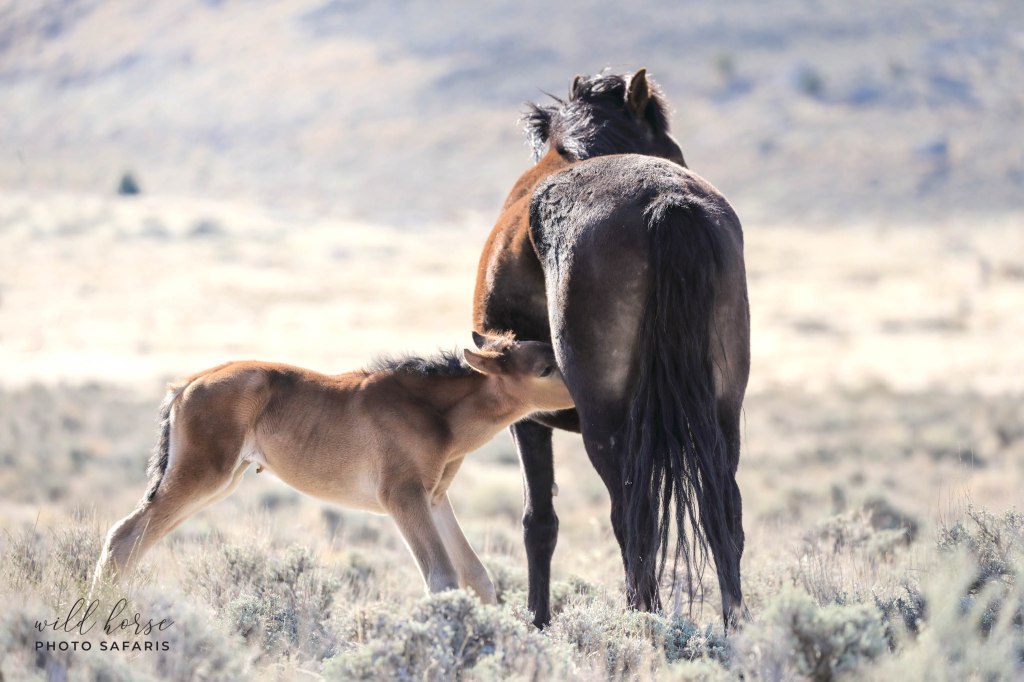
It will be nothing short of a tragedy if the round-up currently scheduled for July 12-22nd takes place. This new family will be chased by helicopter for 10 days straight along with all the others. They will be rounded up into livestock trailers and kept in pens over in Delta, Utah. From there they will be separated and some kept in long-term housing, some adopted, maybe 1 or 2 returned to the range if they’re “lucky.” But whatever happens their time of living as a family will be over.
During these round-ups horses are injured, horses are euthanized, babies hooves are worn off from running because they’re much too young and their hooves too soft to be able to withstand the chase. It’s so critical that voices be herd in support of leaving these beloved horses in the wild to continue to draw national and international attention from wild horse lovers world-wide.
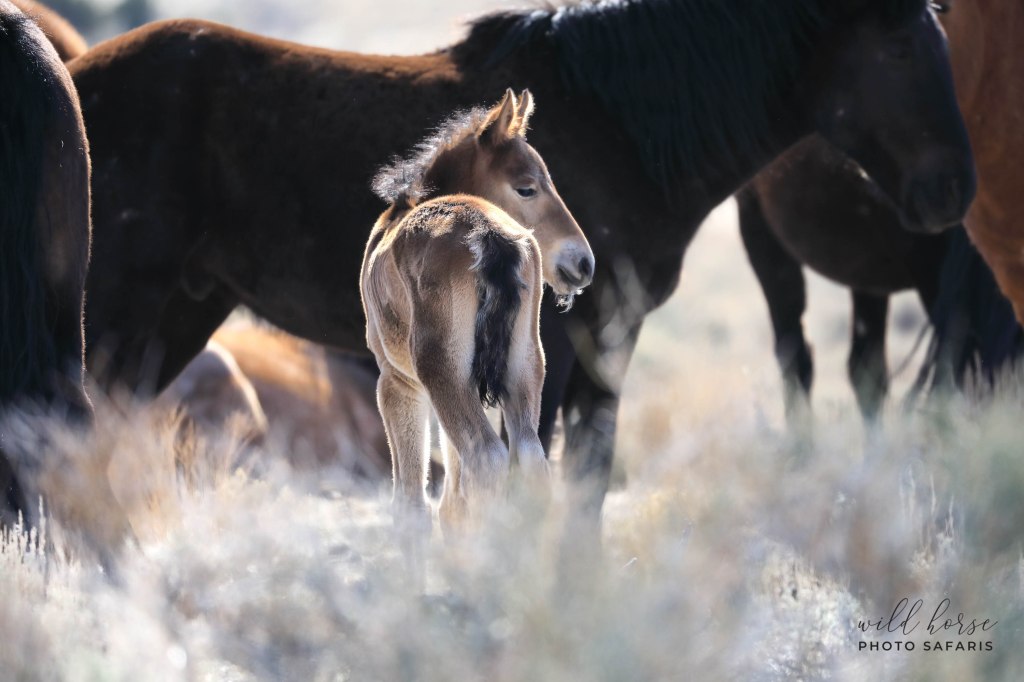
What Can You Do To Help
It’s imperative that the Utah elected officials recognize the local significance of the upcoming BLM actions regarding rounding up this valuable and cherished herd of horses. Humane herd management and population control should be recommended, supported and commended and there are far better ways to manage the Onaqui horses than to remove them entirely.
PLEASE take a moment to send a note to the following to stress the importance for the local business people, visitors and the Utah tourist industry of promoting, embracing and humanely managing this unique herd in the wild.
As always as more information becomes available I will try to share in a third blog to help get the word out to save our wild ones.
- Utah Senator Romney (202) 224-5251 or via email: https://www.romney.senate.gov/contact
- Tooele City Mayor Debbie Winn (435) 843-2104 dwinn@tooelecity.org
- Tooele City Council Members:
- Justin Brady – jbrady@tooelecity.org
- Melodi Gochis – mgochis@tooelecity.org
- Tony Graf – tgraf@tooelecity.org
- Ed Hansen – ehansen@tooelecity.org
- Maresa Manzione – mmanzione@tooelecity.org
- Salt Lake City Mayor Erin Mendenhall (801) 535-7704 mayor@slcgov.com
- Salt Lake City Council (801) 535-7600 council.comments@slcgov.com
- Contact President Biden and Interior Secretary Haaland to put a stop to the proposed 20,000 horses and burros slated to be removed from public lands. It’s a huge loss of our national heritage as well as an excessive drain on taxpayer resources and money to make wild horses live their lives in government pens.
- Reach out to local news agency’s in the Salt Lake City area in support of humanely managing the Onaqui horses in the wild and forgoing the round-up in July.
- Matt Gephardt Channel 5 – matt@ksl.com
- Debbie Dujanovic Channel 5 – web-radiogeneralfeedback@bonneville.com
- Chris Jones Channel 2 – cjones@kutv2.com
- Contact Gus Warr and Tami Howell at the Salt Lake City BLM who currently manage our Wild Horse & Burro program
Gus Warr –(801) 539-4057 email gwarr@blm.gov
Tami Howell – (801) 977-4300 email thowell@blm.gov
- Follow Facebook pages such as Save the Onaqui Wild Horses for updates and news bulletins
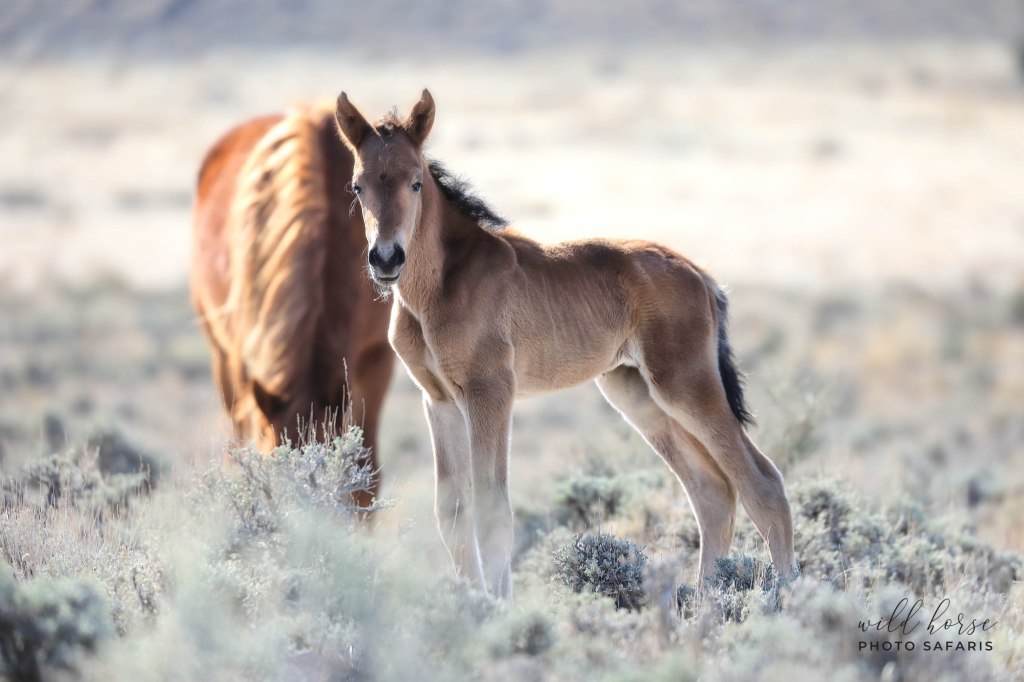
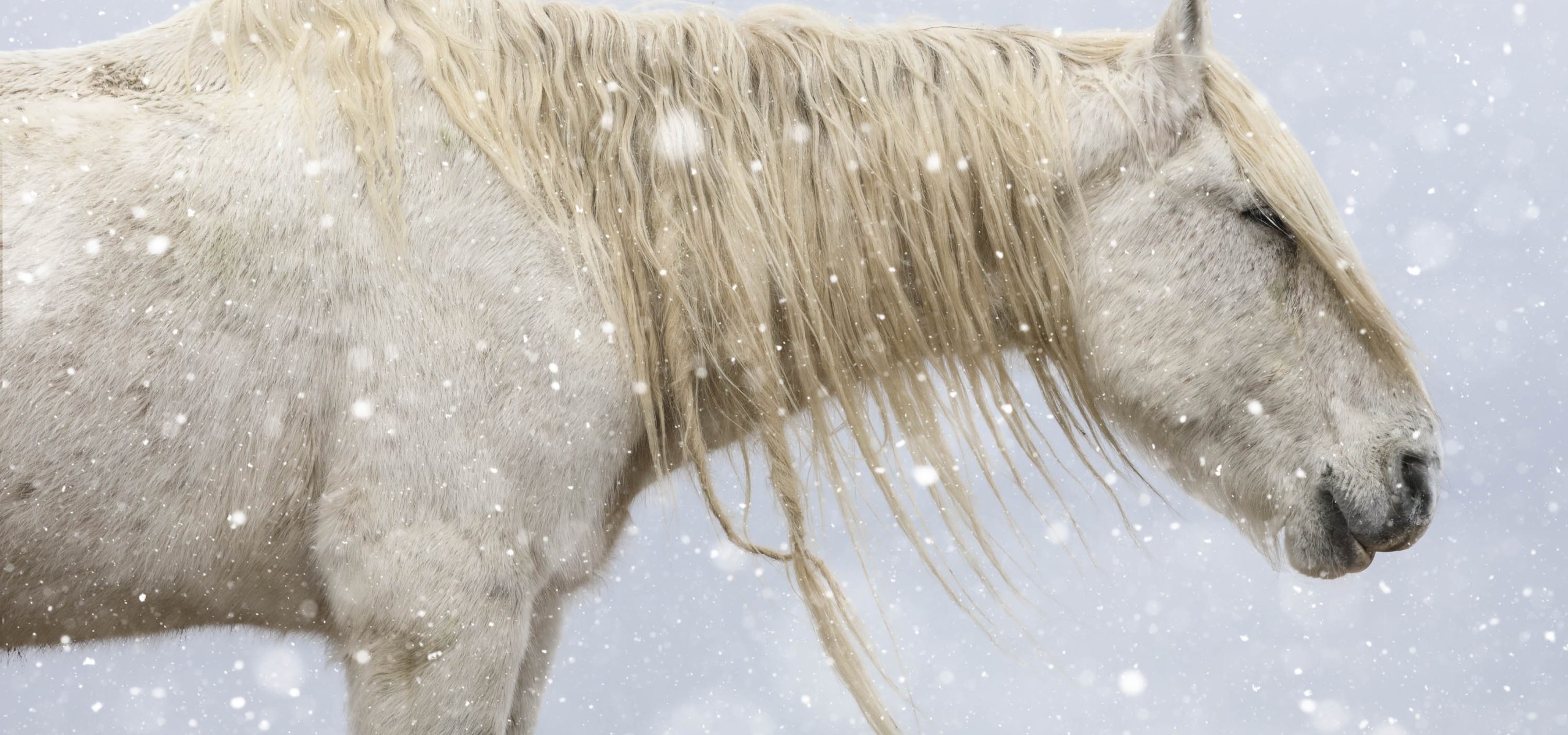
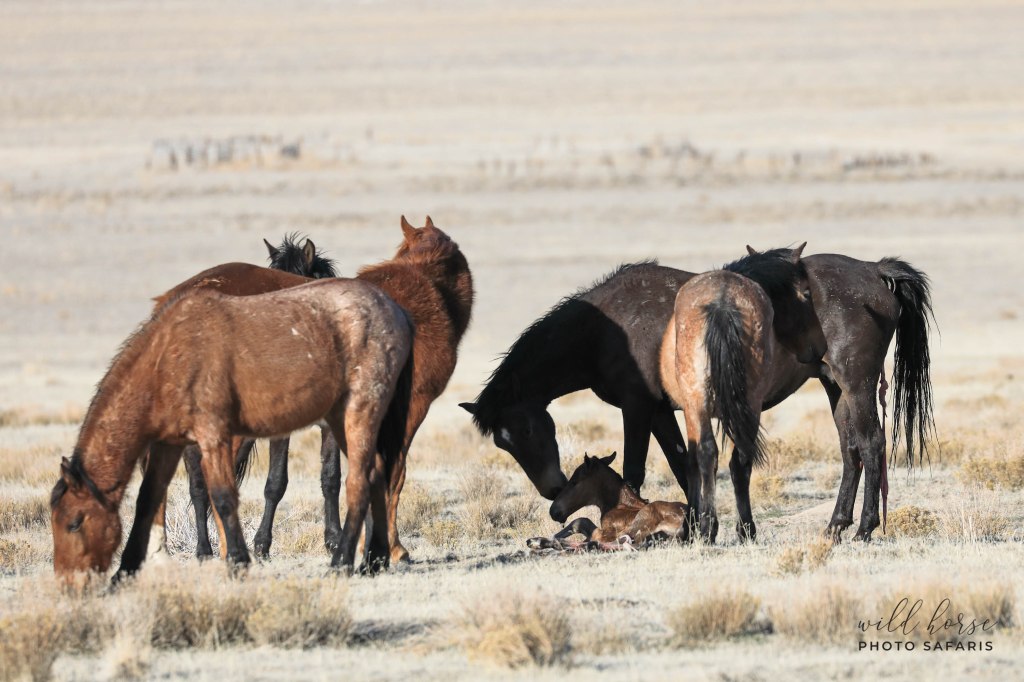
The photo you see above is of a brand new baby only minutes old born to Onaqui mare OQ354bM who travels in a band with the band stallion Dude (a gorgeous and muscular bay roan). I was lucky enough to watch this mare in labor while the other mares gathered around in a tight circle gently cleaning her, sniffing her nose and putting their hooves on her in an attempt to comfort her. As soon as the little colt was born all of the “aunties” joined in to help clean him and protect him while he came to take his first look at his new little mustang life in the West Desert. He has been nicknamed Quinn (OQ372brS) and the hope is that he will live a long life wild and free on this range.
Elephants & Horses
As a little kid I was all about elephants. I don’t even have a reasonable explanation of how or why this might have developed, but I adopted them whole heartedly as my very own spirit animal. As an adult my fascination with them continued to grow until I made the leap and decided I simply had to see them in person.
I then spent a few years diving into all things elephant. Asian elephants and African elephants both. If there’s a book or scientific study on them I’ve probably read it and I spent time intermittently in Thailand volunteering at various very hands on elephant sanctuaries which put us to work preparing their meals, bathing them, cleaning their sleep areas, creating enrichment activities and planting new crops so the sanctuaries could be closer to their goal of being self-sustaining. After Thailand I then traveled to an award winning private game reserve in South Africa dedicated to conservation and education where we got to be with the wild herd and collect data in an ongoing study about their foraging habits.
Fortunately for the elephants their plight has become well-known and the damage to the overall health and continuity of the herd well-documented in cases of poaching, relocating or loss of family members. Their social structure, familial bonds and intelligence is something I believe we’ve only touched the surface to understanding and yet already we have been able to prove how deep it runs.
The Onaqui wild horses remind me of elephants. Except that unlike the wild elephants the true depth of the dimensions of wild horse herd dynamics, bonds and social complexity hasn’t been given even a small fraction of publicity or research it probably deserves.
When the wild herds managed by the BLM are done so by way of helicopter roundups instead of humane fertility control methods such as PZP it is not only traumatizing for the horses psychologically, but it’s ripping apart family bands, compromising genetic diversity and throwing the natural balance of the herd off-kilter. The same as it would if you randomly rounded up mass quantities of elephants in the same manner.
The BLM’s Onaqui round-up is scheduled for July 12-22nd of this year and with it the continuity of the herd’s current structure and dynamics are at grave risk of being destroyed.
The round-up also brings an immediate loss of opportunity for broad educational and local economic development as it relates to this special population of horses.
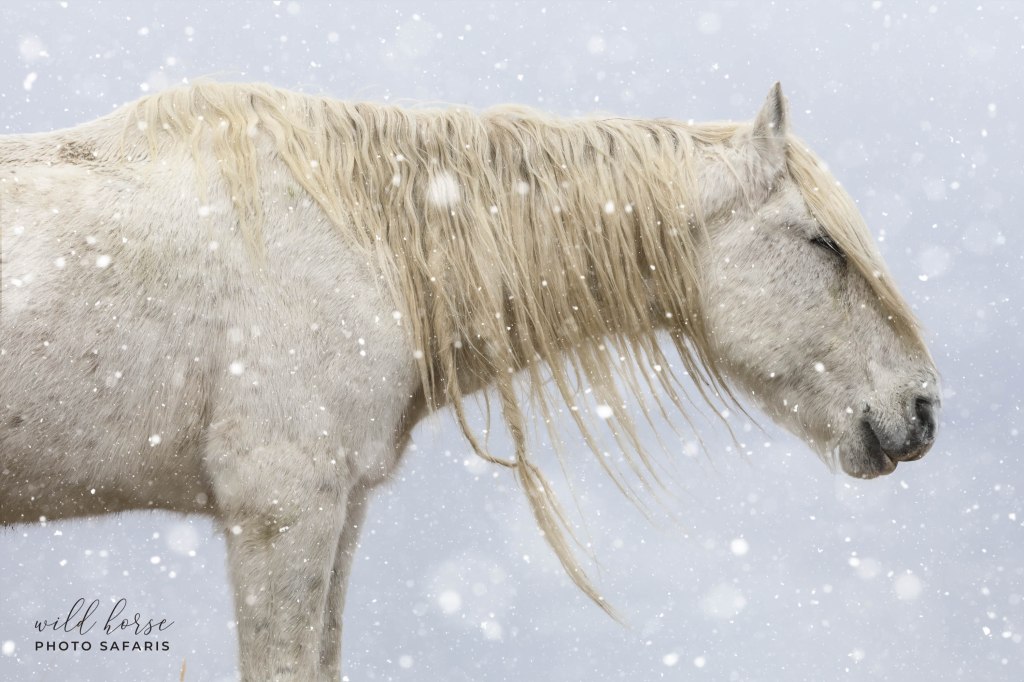
Healthy Herd Populations = Healthy Local Economy
The closest small rural town to the Onaqui HMA is called Tooele with a local population of 35,000. Tooele has your basics such as 2 grocery stores, gas stations, Walmart, Home Depot and a splash of restaurants offering various cuisines but by no means is it a thriving metropolis with the charm or attractions to draw visitors from worldwide locations. However what is does offer is easy access to view the Onaqui – and year round at that.
Another great thing about the little town of Tooele is that it’s an easy 30 minute drive from the Salt Lake City International Airport. Thus offering unparalleled access for wild horse viewing to anyone flying into Salt Lake City whether it be to hit the slopes in Park City or Alta or to drive up to Yellowstone National Park and the Grand Tetons. The Onaqui horses are thriving within the vast HMA (herd management area) within a bowl of different mountain ranges lending to gorgeous scenery, camping and hiking. Since Tooele is the stopping off point before heading out to the west desert the economic impact of the Onaqui herd for the town is significant.
Visitors all year long come to Tooele to fill up their gas tanks, grab meals at the local restaurants and grocery stores and most often book a room at one of the four hotels such as the Best Western or Holiday Inn. The Best Western in fact sees so many visitors for wild horse viewing that they offer a discounted rate per night of stay if you’re here for that reason.
The Utah BLM is proposing removal of 400 Onaqui horses from the range due to what they claim is water shortage, food shortage and overall condition of the herd. Meanwhile anyone driving through the this range passes countless domestic cattle and sheep grazing and watering on the same land that BLM claims does not have enough food to support the resident wildlife – including horses.
It’s indisputable that cattle and sheep need to eat too and ranching is a long embedded way of life for many, but it’s definitely not contributing to the local tourist economy the way that the wild horses are able to do. I don’t see many folks willing to plan a family vacation or travel out of state to Tooele so they can spend the day viewing and photographing domestic livestock in the Onaqui HMA.
These horses are so popular than in only 18 days since the announcement of the removal of 80% of the horses I’ve received communication from supporters in 9 different countries and countless states within the US asking what they can do to help.
This herd is special.
And this herd is loved.
And this herd is very important to our small local towns and the Utah economy. This herd is also very behaviorally unique compared to other wild horse herds and if given the chance can give us very valuable insight and scientific data into the natural lives and bonds of wild horses.
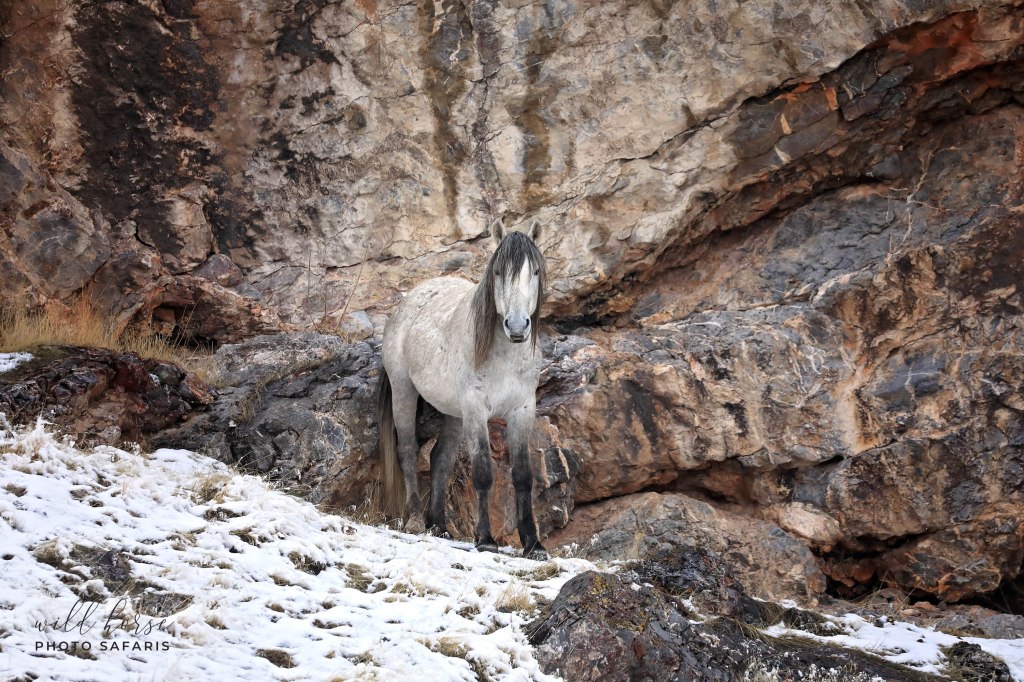
PZP and Its Use in the Onaqui Herd
Everyone who loves these horses I feel confident will be the first to stand up and advocate for their health, well-being and safety. Running them for 10 days straight by helicopter is not the way to accomplish any of these things but administering equine contraception such as PZP darts allows for successful management of the overall population count and also keeps the family and social structures intact. BLM has emphatically stated that there is no budgetary issue when it comes to paying the cost of $30/injection/year for mares and there are currently 24 trained but unpaid volunteers which administer the darts so paying for the man hours isn’t an issue for them either.
BLM lists the current population on the range not including 2021 foals to be 475. In 2019 241 horses were rounded up via helicopter and 2 were killed in the process. With that in mind, these are the numbers of PZP administered:
2017 – 27 north mares, 15 south mares. 42 Total
2018 – 29 north mares, 24 south mares. 53 Total
2019 – 91 north mares, 44 south mares. 135 Total
2020 – 80 north mares, 46 south mares. 126 Total
Based on these numbers it is not realistic to expect that the benefit of the PZP injections would truly be realized at such an early date. PZP has been found to be 95-98% effective except for in horses that are non-responders of which do occur but in a very small percentage of darted mares. The Onaqui herd needs to be managed humanely and via methods such as PZP rather than simply removed for convenience and housed in pens which end up costing taxpayers millions of dollars over the life of a horse.
PZP is extremely cost effective. It’s easy to administer. There are currently 24 trained individuals who volunteer their time to dart the herd therefore saving BLM both time and money. This herd is of huge benefit to the local economy and draws visitors from both out of state as well as out of the country. Their tolerance for human interaction and ease of access makes them as asset to the state and locals not a burden and they should be spared from the inhumane roundup and instead be allowed to serve as ambassadors for the state and a historic relic of the old Wild West.
More specific information about PZP and herd management can be found in my previous blog by clicking here.

What Can You Do To Help
It’s imperative that the Utah elected officials recognize the local significance of the upcoming BLM actions regarding rounding up this valuable and cherished herd of horses. Humane herd management and population control should be recommended, supported and commended and there are far better ways to manage the Onaqui horses than to remove them entirely.
PLEASE take a moment to send a note to the following to stress the importance for the local business people, visitors and the Utah tourist industry of promoting, embracing and humanely managing this unique herd in the wild.
As always as more information becomes available I will try to share in a third blog to help get the word out to save our wild ones.
- Please contact the following and express your support at keeping the Onaqui herd healthy and wild while ensuring that they are humanely managed on the HMA.
- Utah Senator Romney (202) 224-5251 or via email: https://www.romney.senate.gov/contact
- Tooele City Mayor Debbie Winn (435) 843-2104 dwinn@tooelecity.org
- Tooele City Council Members:
- Justin Brady – jbrady@tooelecity.org
- Melodi Gochis – mgochis@tooelecity.org
- Tony Graf – tgraf@tooelecity.org
- Ed Hansen – ehansen@tooelecity.org
- Maresa Manzione – mmanzione@tooelecity.org
- Salt Lake City Mayor Erin Mendenhall (801) 535-7704 mayor@slcgov.com
- Salt Lake City Council (801) 535-7600 council.comments@slcgov.com
- Contact President Biden and Interior Secretary Haaland to put a stop to the proposed 20,000 horses and burros slated to be removed from public lands. It’s a huge loss of our national heritage as well as an excessive drain on taxpayer resources and money to make wild horses live their lives in government pens.
- Reach out to local news agency’s in the Salt Lake City area in support of humanely managing the Onaqui horses in the wild and forgoing the round-up in July.
- Matt Gephardt Channel 5 – matt@ksl.com
- Debbie Dujanovic Channel 5 – web-radiogeneralfeedback@bonneville.com
- Chris Jones Channel 2 – cjones@kutv2.com
- Contact Gus Warr and Tami Howell at the Salt Lake City BLM who currently manage our Wild Horse & Burro program
Gus Warr –(801) 539-4057 email gwarr@blm.gov
Tami Howell – (801) 977-4300 email thowell@blm.gov
- Follow Facebook pages such as Save the Onaqui Wild Horses for updates and news bulletins
